








































SUPERMARKETS making high profits have been criticised as farmers warn of a growing disconnect between producers and retailers after one of the worst springs in a generation.
But speaking before Parliament this week, retailers denied they had ‘bullied’ producers who faced mounting pressures on-farm to keep retail prices under control during the cost of living crisis.
An Environment, Food and Rural Affairs committee meeting on Tuesday (April 30) brought together senior executives from Asda, Tesco, Waitrose, Lidl and Sainsbury’s, who were questioned by committee chair Sir Robert Goodwill.
The criticisms follow warnings published in the report by Ged Futter launched at the Oxford Farming Conference, Is our food supply chain broken?. It found the risk of producing food was outweighing the rewards, resulting in farmers giving up production.
During the committee hearing, retailers defended the amount of support they had provided to farmers and the steps taken to pay a fair price.
Dom Morrey, commercial director
for fresh food at Tesco, said: “The last 18 months has been particularly challenging, with input costs right across the supply base being challenged, not just the farming sector.”
He said this had led to ‘unprecedented’ discussions around price, which had been open and transparent, and the supermarket had ‘responded quickly to address them and pay fair prices to our suppliers when they have asked for it’.
Waitrose commercial director Charlotte Di Cello said the challenges had led to greater levels of co-operation with suppliers.
She said: “We have very transparent deals, which mean we will always pay the cost of production and help farmers make a living.”
Asda chief commercial officer Kris Comerford said the sector had an effective and active regulator with the Groceries Code Adjudicator to ensure it acted honestly and openly with producers.
A reduced fruit yield this season was highlighted by Sainsbury’s chief commercial officer Rhian Bartlett, but she said the retailer had implemented
three cost price increases ahead of the season in response to the challenging weather.
NFU horticulture board chair Martin Emmett said the horticultural supply chain demanded fairer
relationships with retailers to ensure fairness and transparency to alleviate ‘spiralling costs of production’.
Welsh farmer Gareth Wyn Jones, of
CONTINUES ON PAGE 2
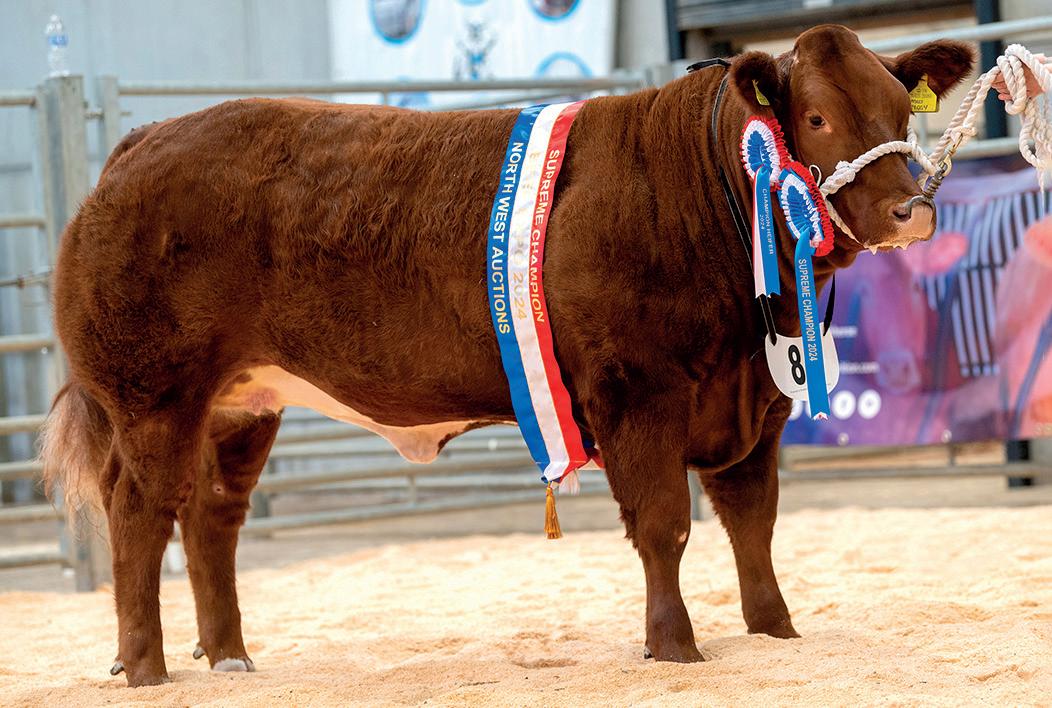
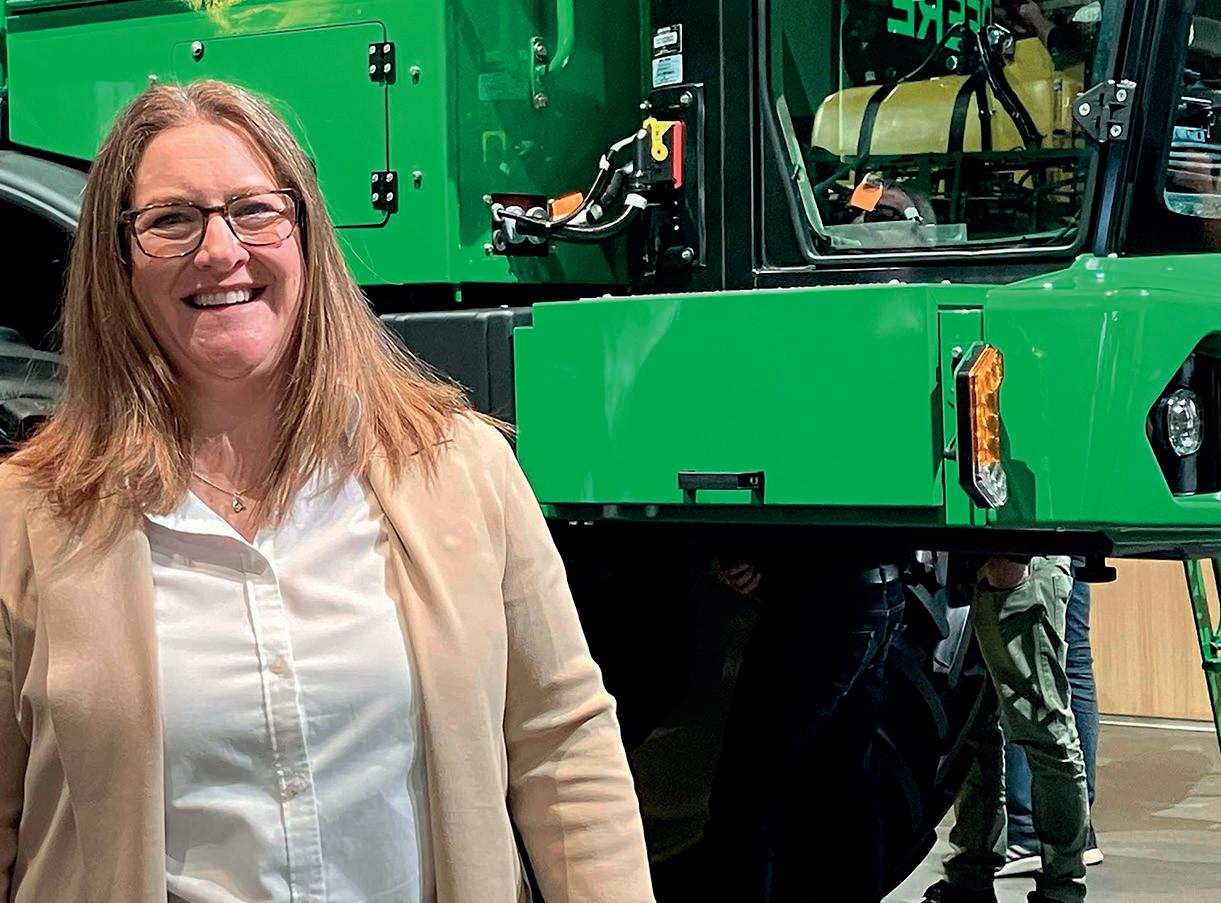
Q&A with Deanna Kovar, John Deere’s head of agriculture and turf in Europe, Asia and Africa. See p82.

Seeding

THE Farm Safety Partnership (FSP) has raised ‘serious concerns’ after the NFU was told the Health and Safety Executive (HSE) planned to ‘halt’ regular farm safety inspections.
The group said the move, which comes just seven days after the NFU shared figures which found there were 32 on-farm fatalities between April 2023 and March 2024, would pose ‘significant risks” to the safety of agricultural workers.
FSP chair and NFU deputy president David Exwood said it was ‘deeply troubling’ and urged the Government and HSE ‘to reconsider’ and work with farmers to ensure compliance.
He said: “We cannot afford to compromise on the safety of our farmers. While the HSE assures us investigative inspections will continue in response to serious incidents, the lack of all regular inspections, training and events leaves a notable gap in proactive safety measures that could prevent accidents and save lives.”
Agriculture has one of the highest rates of fatalities and serious injuries in any workplace, with Mr Exwood
saying it was ‘21 times higher than the average rate across all industries’.
Mr Exwood said to bring this number down, the sector must ‘change the culture of farm safety’.
Derbyshire upland farmer Jane Bassett said the decision was ‘unbelievable’.
She said: “The lack of events and training in farm safety is penny-pinching with people’s lives.”
She added ‘we must work with everyone including HSE to reduce accidents.’
Herefordshire arable farmer Martin Williams said he was ‘gobsmacked’ by the decision in an industry with ‘such a poor track record for safety’.
An HSE spokesperson said: “The FSP and its member organisations play a key role in changing behaviours and helping the sector to take ownership of its poor health and safety record. Our commitment to the partnership is unchanged.
“While we will continue to inspect and investigate where appropriate, our range of interventions is much broader. Our recent campaign was a successful example of using HSE and industry voices on farms to reinforce safety messages and reach a wide range of farmers and farm workers.”
POULTRY sector groups have warned there are ‘still discussions’ to be had over the future of RSPCA Assured laying hen welfare standards, despite the scheme being postponed until February 2025.
A joint statement from British Free Range Egg Producers Association and British Egg Industry Council said
From page 1
Tyn Llwyfan Farm, Anglesey, said farmers had never felt so undervalued, with concerns the UK was ‘sleepwalking into a food shortage crisis’.
He said: “I know farmers who are thinking of leaving and it is absolutely devastating. We need a fair price for the products we produce as it is just not sustainable from the major supermarkets.
while they welcomed the further pause, the groups had ‘serious concerns’ over a number of the standards coming into force.
The hiatus was also greeted by NFU poultry board chair James Mottershead who urged RSPCA Assured to use the intervening months to properly engage with the poultry industry.
“The mental health of farmers is at its lowest ebb and we need to make the public aware of just how important farmers are to food production.”
Andrew Wilson, an arable farmer from Malton, North Yorkshire, said if farmers were to leave the industry due to supply chain unfairness, it would result in a loss of valuable skills and experience which could have long-term impacts to the industry.

WARMER weather is expected for the Bank Holiday weekend in many areas, although there will still be a mix of sunshine and rain. This lamb on Cae Llwyd Farm, Penmachno, North Wales, was enjoying some spring sunshine following the wet weather.
rChief executive says assurance is wanted
By Rachael BrownRED Tractor is a ‘victim of its own success’ amid a rising demand for consumer and retailer assurance, its chief executive told farmers last week.
Jim Moseley, who was speaking to members of the Tenant Farmers Association (TFA) via an online seminar, said the continued success of the scheme had led people to ‘ignore’ the value the Red Tractor mark brings. He said: “Twenty four years ago, we did not have a market in the UK. Today we have consumers who want to buy Red Tractor assured, buy British first and export contracts. This is because of the standards.”
“Trust has never been higher than it is today... All the processors, retailers and caterers want that Red Tractor... We are a victim of our own success.”
Mr Moseley acknowledged concerns around a lack of non-assured markets in both dairy and grain, adding Red Tractor was ‘not trying to close the market down’.
He said: “We are never afraid of competition. But by the same token, grain members need to remember with that one Red Tractor assurance, they have access to every market.”
Mr Moseley warned if standards were taken down, the industry would only be able to compete on price.
“We have to give a reason why the supermarket buyers should buy British — standards and Red Tractor is part of that,” he said.
TFA chair Robert Martin said for
for the rainy days as well!
many tenant farmers ‘it comes down to the pound, shillings and pence’ and what ‘keeps our food on our table and, as tenants, what keeps the roof over our heads’.
When challenged on what Red Tractor was doing to ensure retailers using the logo passed on a ‘fair proportion’ of retail price, Mr Moseley said it was not a marketing board and did not have a commercial relationship to negotiate and sell to retailers.
“We have no way of getting more cake down the supply chain and away from the retailers,” he said.
Mr Moseley said ultimately being farm assured was a ‘business decision’ for farmers, especially with the current ‘tight margins’ on farm.
He added it was not ‘forcing people into assurance’ but there were markets which required it.
RED Tractor said it ‘fully recognises’ concerns raised by members of its Beef and Lamb sector board after a vote of no confidence in the assurance body’s leadership was proposed at a recent meeting.
Bryan Griffiths, board member for the National Sheep Association (NSA), delivered the motion, which was backed by farmers and processors. AHDB abstained, while representatives from the retail sector voted against.
Mr Griffiths said he had acted to ‘initiate real change’ and the decision followed intense NSA scrutiny of the Campbell Tickell report into governance at Red Tractor and discussions with NSA members and the wider industry.
He added NSA had concluded the actions needed to bring about the required changes could not be achieved by the current leadership.
Mr Griffiths said by proposing the motion, Red Tractor was ‘now compelled to take our concerns seriously’.
He said: “We want simple actions that resonate with real consumers. We want those requirements to be auditable and easily achieved at farm level and, in order to do that, we have to have discussion, cooperation, collaboration and consultation.
“We believe these things are all lacking in the management of Red Tractor.”
In response, chair of Red Tractor Christine Tacon said the board was now considering Mr Griffiths’ letter and Red Tractor fully recognised the concerns raised.
She said: “That message has been heard and a number of changes have already been implemented to start to address this extremely serious issue.”


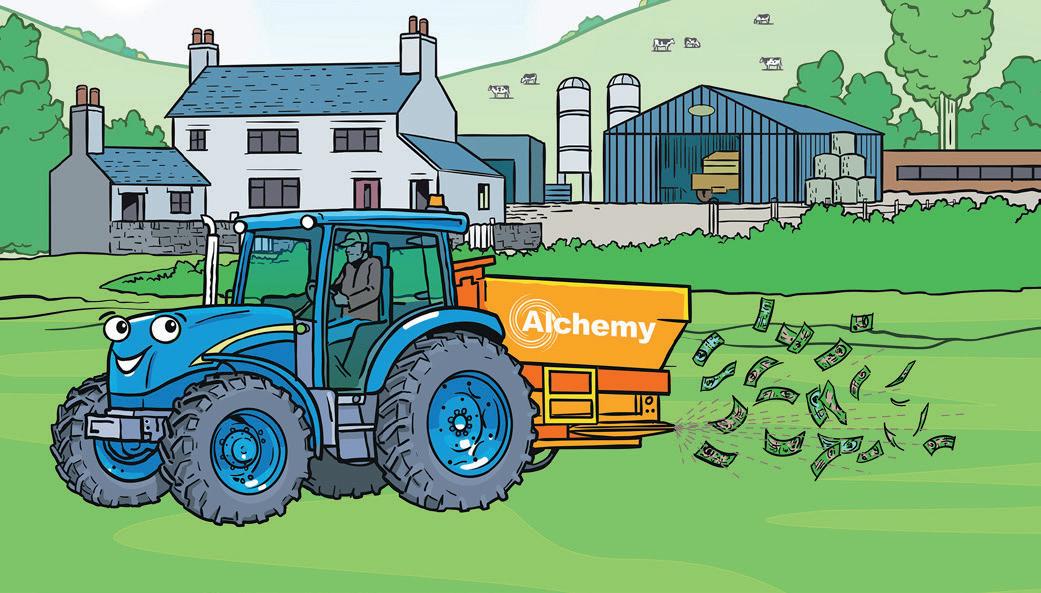
Farmers Guardian, Unit 4, Fulwood Business Park, Caxton Road, Fulwood, Preston, Lancashire, PR2 9NZ
Editor
Olivia Midgley, 07787 240 750 olivia.midgley@agriconnect.com
Head of News and Business
Alex Black, 01772 799 409 alex.black@agriconnect.com
Chief Reporter
Rachael Brown, 07974 039 778
rachael.brown@agriconnect.com
News and Business Reporters
Jane Thynne jane.thynne@agriconnect.com
Chris Brayford, 07773 110 733 chris.brayford@agriconnect.com
Business Reporter
Cedric Porter cedric.porter@agriconnect.com
Arable Technical Specialist
Ash Ellwood, 07786 190 188 ashleigh.ellwood@agriconnect.com
Head of Machinery and Farm Technology
Toby Whatley, 07583 054 831 toby.whatley@agriconnect.com
Machinery Reporter
James Huyton, 07787 242 185 james.huyton@agriconnect.com
Head of Livestock
Katie Jones, 07786 856 439 katie.jones@agriconnect.com
Features Editor and Head of Livestock Sales
Angela Calvert, 07768 796 492 angela.calvert@agriconnect.com
Livestock Specialists
Ellie Layton, 07814 997 407 ellie.layton@agriconnect.com
Katie Fallon, 07815 003 227 katie.fallon@agriconnect.com
Online Editor
Emily Ashworth, 01772 799 446 emily.ashworth@agriconnect.com
Creative Services
Mike Begley, 01772 799 405 mike.begley@agriconnect.com
Katie Haydock, 01772 799 561 katie.haydock@agriconnect.com
Picture Editor
Marcello Garbagnoli, 01772 799 445 marcello.garbagnoli@agriconnect.com
Sales Director
Stephanie Ryder, 07917 271 987 Stephanie.ryder@agriconnect.com
Circulation
Subscription hotline 0330 333 0056
help@subscribe.farmers-guardian.com
Newstrade enquiries 01772 799 434
UK print subscriptions £189; Europe: £226.80; RoW: £283.50. FG digital subscriptions: £109
News trade distribution
Seymour Distribution Ltd, 2 East Poultry Avenue, London, EC1A 9PT. Tel 0207 429 4000, Fax 0207 429 4001
Published by

CHANGES to UK border security have come into force despite claims that the new rules will fuel food price hikes, put animal welfare at risk and spark a surge in food crime.
The Government’s Border Trading Operating Model will see products which present a ‘medium’ risk undergoing identity and physical checks involving visual inspections and temperature readings of goods. Additionally, ‘high risk’ goods will be checked at the border, where before they were checked at destination.
An ITV News report found many vehicles were waved through despite not having the correct paperwork.
rHumza Yousaf move is ‘blow to continuity’
By Chris BrayfordTHE Scottish Government must showcase its commitment to agriculture, with more political upheaval on the way after First Minister Humza Yousaf confirmed on Monday (April 29) he would be stepping down.
Mr Yousaf made the announcement after the collapse of the Bute House Agreement, an alliance with the Scottish Greens. He will remain in his position until the Scottish National Party elects a new leader.
Prior to Mr Yousaf’s resignation, Sarah-Jane Laing, chief executive of Scottish Land and Estates, said an end to the Bute House Agreement could be an opportunity to ‘hit the reset button on its relationship with rural Scotland’.
National Sheep Association chief executive Phil Stocker said the loss of another First Minister put the whole ministerial team at risk of upheaval and was ‘a huge blow to any kind of continuity’.
He said issues in Scottish agriculture had so far been met with ‘lacklustre responses from Ministers’.
“Ensuring Scottish farmers and

approved sustainable sources.
FARMERS should not be left with the bill as supermarkets commit to buying in non-deforestation soya by 2025.
National Pig Association chair Rob Mutimer highlighted non-deforestation soya was a ‘three figure increase’ on the market rate for soya.
Mr Mutimer added the pledges ‘sounded wonderful’, but questioned
New checks have been fuelling fears of food price rises.

It quoted Defra as saying freight showing paperwork with only ‘minor issues’ should be allowed to enter and full border controls ‘should be imposed as soon as possible’.
Meanwhile, Dover District Council has once again questioned the merits of the scheme, arguing against the decision to carry out checks 22 miles away at Sevington. Dover Port Health Authority (DPHA) said during the weekend of April 27 to 28, it seized
more than 3.4 tonnes of illegal meat at the border.
DPHA said the new rules, along with the Government’s decision to cut Dover District Council’s funding for African swine fever checks by nearly 70 per cent, posed an ‘needless risk’.
Baroness Neville-Rolfe, Minister of State at the Cabinet Office, said the risk-based checks would protect the UK from diseases which could do considerable damage.
their produce are represented and at the forefront of future decision-making is now key in ensuring Scotland and the rest of the UK can be a food secure nation,” he said.
NFU Scotland president, Martin Kennedy, said the ‘turmoil’ in Scottish politics should not distract from legislation entering Holyrood –particularly the Agriculture and Rural Communities (Scotland) Bill and the Land Reform Bill – to support farmers and crofters.
how it would practically work for farmers.
NFU president Tom Bradshaw said there were ‘two options’, either the supply chain pays or Government steps in as farmers could not, with scope to use the Sustainable Farming Incentive to support the move.
“I can reassure Scotland’s farmers and crofters that we will remain resolutely focused on lobbying all political parties in the very best interests of Scottish food and farming,” he said.
Shadow Rural Affairs Secretary Rachael Hamilton claimed farmers had been ‘short-changed’ by the SNP after the end of the Bute House Agreement and welcomed his resignation.
A COMPLAINT regarding standards of animal welfare at one of England’s largest and oldest farming estates has been upheld by the Soil Association. Footage of ‘animal suffering’ at the Cholmondeley site in Cheshire had been passed to the organic certification body, prompting an investigation.
A spokesperson for the Soil Association said the complaint had been upheld and the licensee had been ordered to take ‘swift action’. The association said animal welfare is at the ‘heart of organic’. The Cholmondeley Estate was contacted for comment.




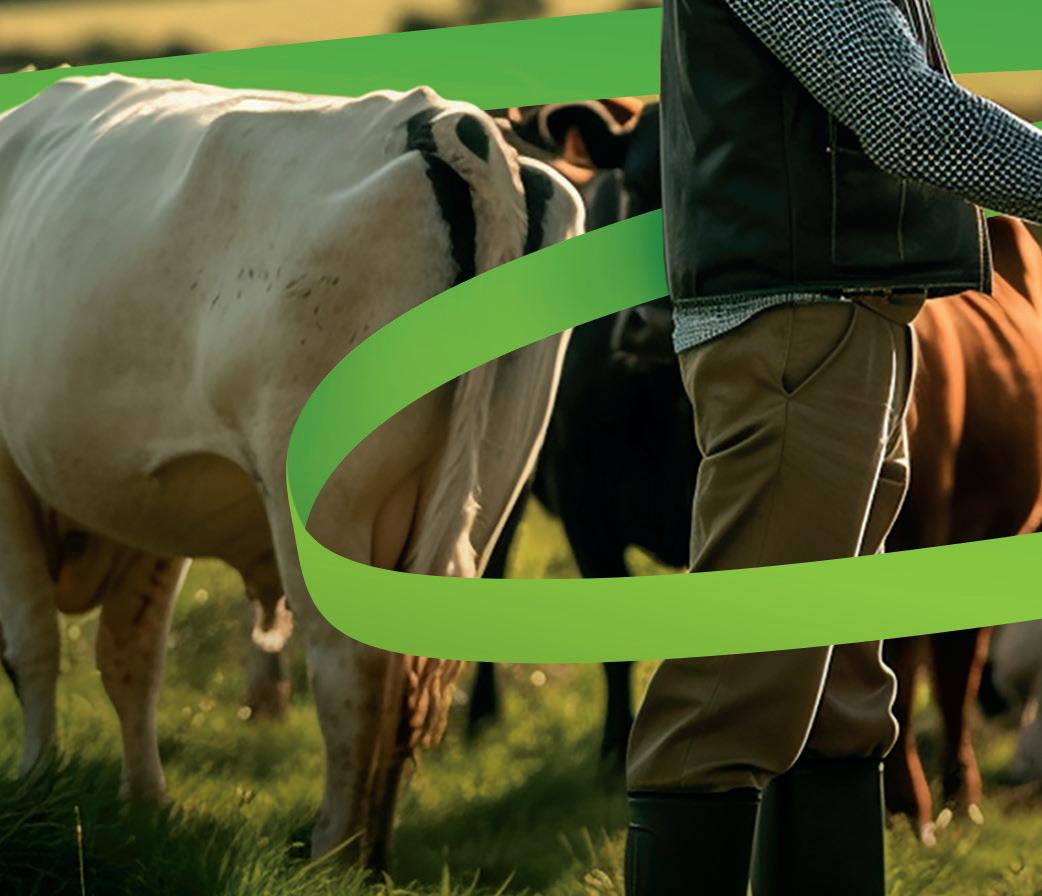









Better communication is a key target for new AHDB chief executive Graham Wilkinson. Rachael Brown reports.
DELIVERING value to levy payers is ‘front and centre’, with AHDB also needing to communicate its work better, particularly when it comes to environmental research.
That was the message from AHDB chief executive Graham Wilkinson. Two months into his role, Mr Wilkinson’s vision for the organisation ‘first and foremost is to be levy payer obsessed’, adding the organisation’s voice and the way it communicates its work had not been loud enough in the past which ‘absolutely must change’.
Mr Wilkinson said: “We need to be an organisation that continues to hold a mirror up to itself to look at opportunities to improve and get better.
“But we need to step up and demonstrate leadership. In too many cases, our voice is not as loud as it should be.”
Mr Wilkinson acknowledged he was joining AHDB after a period of ‘significant change’, but emphasised it was now ‘out of that period’.
And, with the industry support for an increase in the levy, the board was now in a position to expand its offering to levy payers.
Drawing on his time as global vice-president, agriculture, for Arla,

Mr Wilkinson said instilling a culture which was about working with farmers and for farmers was something he would continue at AHDB.
When probed about AHDB’s research work into the industry’s net zero ambitions, he said it was ‘working intensely’ on a number of areas within the environmental brief, adding it was a ‘key’ priority for AHDB and that he hoped to share an update with levy payers ‘soon’.
“This is an area at AHDB that we cannot be a passenger in. We need strong and effective leadership.
“We are insight rich; it is then how we turn that data into some practical actions that really motivate change across the whole of the industry,” he said.
“It comes down to the ‘what’ and the ‘how’: we know why we need to do this, but what does that mean and how we will deliver that? We will lose them [levy payers] if we do not get the messaging right.
“How we communicate and talk is critical to the success of these programmes.”
When probed about where he saw the future of farm assurance, Mr Wilkinson said it was a ‘key part of the future’, adding the industry should never be afraid when consumers want to know more, because there was a ‘fantastic story’ to tell.

“But we need to make sure it works across the supply chain and make sure that farmers see the value in it as well,” he said, adding there was an opportunity for ‘earned recognition’, which he thought should be considered in any future assurance proposal.
He said he ‘firmly believed’ there was a need to ‘streamline’ auditing, a model where you ‘record it once and it is used multiple times’, suggesting the UK was behind in some areas.
“Working across Europe, I have witnessed and been part of examples where it is streamlined or simplified, and in some parts the data is supplied by others in the supply chain,” he said.
When asked about the current distrust in Red Tractor and concerns surrounding governance, Mr Wilkinson said it would be
[AHDB] needs to be an organisation that continues to hold a mirror up to itself to look at opportunities to improve and get better
GRAHAM WILKINSON
‘unfair’ for him to comment but said ‘trust has to be the foundation of any organisation’.
He added: “I know if I have not got the trust and support from our levy payers, I will not be able to deliver half of what I want to deliver as AHDB. In any organisation, even from a retailer perspective, if you have not got the trust of consumers, they will start walking through someone else’s door.”
With the challenges the industry had been facing, Mr Wilkinson believed AHDB was ‘needed now more than ever’.
“I want to bring back some of that pride from our people perspective and levy payer perspective.
“It is a purposeful organisation. I am coming here to make a difference,” he said.

CLAAS tractors with Connect package
Access to all machine data at all times
Precise and efficient with CEMIS 1200 terminal
Automatic Documentation and online Task Management








The ARION 600 CMATIC o ers:
Seamless acceleration and deceleration between 0-50kph.
Uninterrupted power for maximum productivity and fuel e ciency.
3 simple drive modes.
Auto stretch brake.
Tractor implement control.
Engine droop adjustment.
Contact your local CLAAS dealer today or go to o er.claas.com














ANIMAL welfare, public health and the entire food supply chain could be put at risk unless the Government takes urgent action to protect the availability of veterinary medicines to Northern Ireland, the House of Lords has warned.
A letter to Cabinet Office Minister Steve Baker from the Lords Windsor Framework sub-committee said it was estimated about a third of veterinary medicines currently used in Northern Ireland were at risk of discontinuation, posing a serious threat to both animal and public health.
The Windsor Framework, which updated rules for Northern Ireland following the UK’s exit from the EU, ensured the continued flow of human medicines but the concessions did not extend to animals. The sub-committee

said this was of serious economic concern owing to the impact it would have on Northern Irish producers.
The Ulster Farmers’ Union (UFU) said the Lords’ findings were ‘extremely concerning but not surprising’.
Alexander Kinnear, parliamentary

A grace period has been secured to safeguard the supply of veterinary medicines to the end of 2025.
ability there is a real risk to animal and public health, not to mention the serious economic consequences.”
In its letter, the committee advocated a number of recommendations. These included asking the Government to provide an updated assessment of the number of veterinary medicines at risk of being discontinued; submit analysis of the potential economic consequences linked to any reduction; and confirm whether an assessment had been made of the impact on human health and the food supply chain, plus what progress had been made in reaching a solution with the EU.
A spokesperson for the Cabinet Office said it had now ‘secured a grace period’, which would safeguard the supply of veterinary medicines through to the end of 2025.
officer at the UFU, said: “This is a very dangerous moment – the UK Government is playing with fire.
“Farmers in Northern Ireland need market access – it is as simple as that. Disease knows no boundaries, and without vaccines or antibiotic avail-
FARMING in Northern Ireland has been left ‘on life support’ as farmers battle high inputs, low farmgate prices and environmental issues, a new study has revealed.
The Gosling Report was written by award-winning journalist and author Paul Gosling, and it was produced for Farmers for Action (FFA) on behalf of Northern Ireland farm groups. The
reporthighlighteda36percentreduction in locally-owned working farms since 1981, and urged politicians in the UK and Northern Ireland to do more.
The study called on the recently reinstated Stormont Assembly to intervene and draw up legislation to ensure farmers received fair prices.
FFA Northern Ireland co-ordinator William Taylor said the report reflected

everythingfarmersinthecountrywere experiencing and made it clear ‘food security could no longer be ignored’.
MrTaylorsaidFFAhadmetDaera MinisterAndrewMuirtodiscussthereportandpresenteditsFarmWelfare Bill,whichwascompiledusingviews fromfarminggroupsacrossNorthern Ireland.The document has been in development since 2013 and has been updated to include provisions to protect farmers from processors
“We have also set up the Veterinary Medicines Working Group, which is making positive progress towards identifying the steps needed to secure supplies for the long-term. It is due to report in the coming months,” the spokesperson added.
which fail to offer a fair price or which might seek cheaper imports.
The proposed Bill was, according to Mr Taylor, ‘oven-ready’ and he called on Stormont to ‘stand tall and take the Bill forward’.
He said: “There is an opportunity hereforNorthernIrelandtobefirstand to set an example as to how farmers are treated in terms of its effect on farmgate prices, not just across these islands but for Europe too.”
THE Welsh Government has committed £20 million to support farmers in becoming compliant with the ‘Agricultural Pollution’ regulations in Wales by enabling them to invest in on-farm infrastructure.
The Nutrient Management Investment and Small Grants – Yard Covering schemes will offer support for additional slurry storage capacity and the prevention of rainwater entering slurry stores to reduce the farm’s storage capacity requirement.
The announcement has been described by the Farmers’ Union of Wales president Ian Rickman as a statement of ‘co-working’ by which industry concerns have resulted in ‘prompt action’.
The schemes provide a maximum 50 per cent contribution towards certain project costs and are expected to open by summer.
Welsh Government said more ‘detailed guidance would be published shortly’.
rDevastating impact on attacks highlighted
By Chris BrayfordOWNERS of out-of-control dogs have been urged to undertake training, as farmers highlight the burden livestock worrying is placing on their business.
Walkers will no doubt be out in force in the countryside once again this Bank Holiday weekend, with forecasts suggesting warm, if not dry, weather.
It follows concerns that lockdown puppies have led to an increase in dogs which owners struggle to control.
Tobin Bird is a Kent farmer who
started Sheep Proof Your Dog, which provides training courses to raise awareness about the damage dogs can do to livestock, after seeing the ‘devastating’ impact first-hand.
“It is a burden to a farm business. I have experienced it many times and that feeling of pain never leaves you,” he said.
He added he had been told by many farmers of injuries they had sustained during livestock attacks.
“Often, the owner of the dog just has no idea how to control their pet.
“In some cases, they just do not care and it is that mindset which needs to change,” he said.
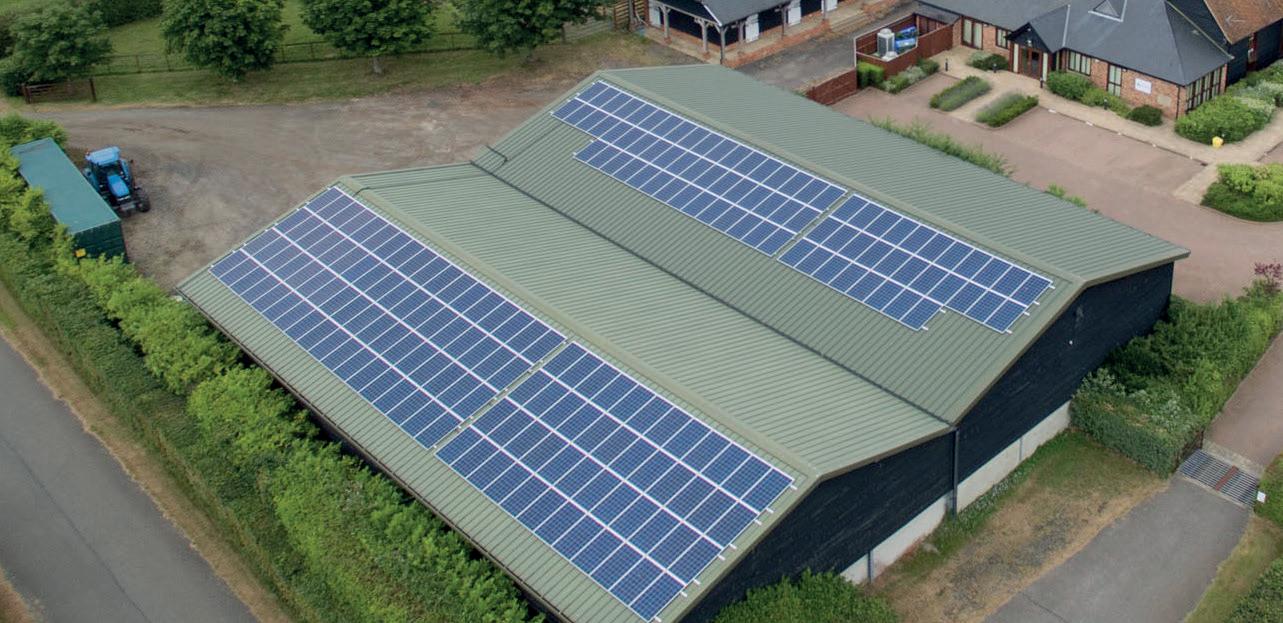


He also called for greater fines and prison sentences for those involved in attacks.
It comes as farmers continue to deal with attacks around the country.
In Cheshire, police said livestock worrying incidents had been occurring on a ‘frighteningly regular basis’.
Recently a farmer shot a dog to protect his livestock during a sheep worrying incident near Macclesfield. Cheshire Police Rural Crime team said the attack took place on April 20 on land between Alderley Edge and Mottram St Andrew.
A number of lambs were attacked and killed during the incident.
FREEsignswarning dogownerstokeep theirdogsonalead nearlivestockare availablethrough Farmers Guardian’s TaketheLead campaign,in associationwiththe NationalSheep Association.

Torequestyours, sendastampedself-addressedA4 envelopeto:FGTaketheLead, FarmersGuardian,Unit4Fulwood BusinessPark,Preston, Lancashire,PR29NZ

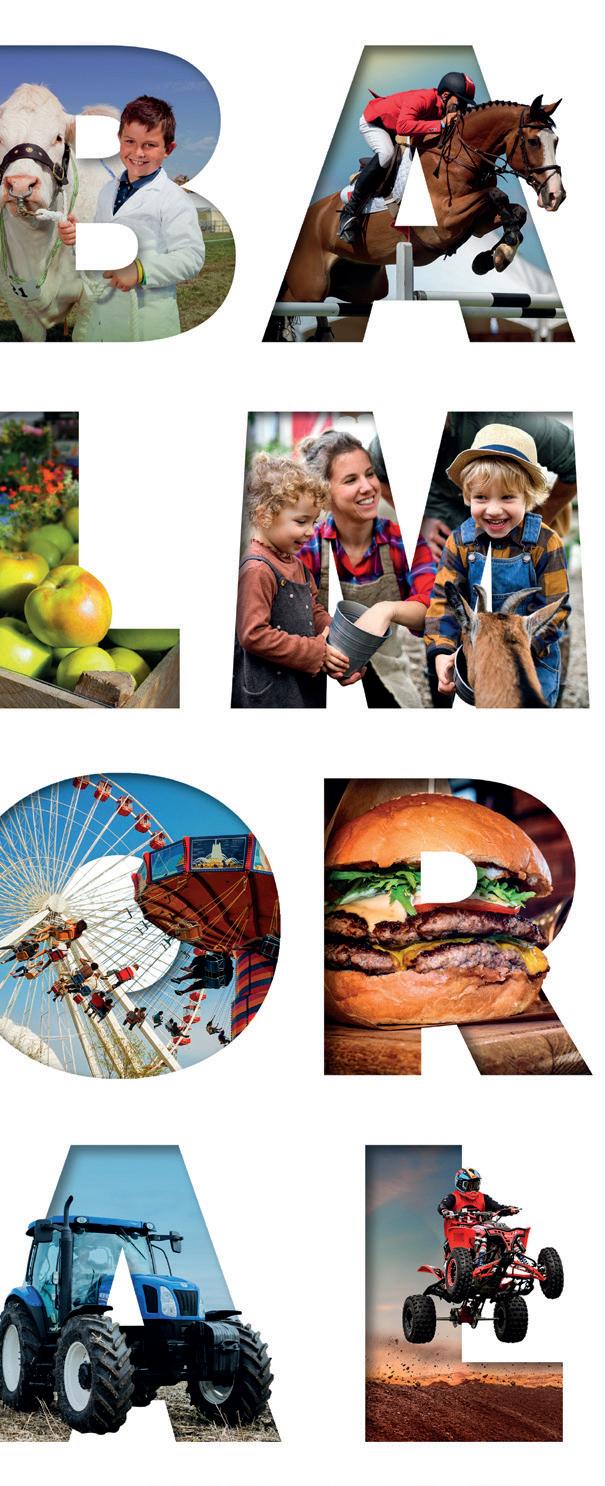

And finally...
With more than 23,000 members of Young Farmers’ Clubs across the country, new National Federation of YFCs chair Drew Bailey says the organisation is for ‘everyone’. See p108-109.
AFTER facing a proposed vote of no confidence in his organisation’s leadership just hours before, many would have expected Red Tractor (RT) chief executive Jim Moseley to ‘empty chair’ last week’s Tenant Farmers Association (TFA) seminar, which posed the question ‘What benefit is RT to British farmers and growers’?
Instead, he appeared on-screen and unabashed, defiant not only about the value of RT to farmers and the wider supply chain, but also about the scheme’s role in the controversial development of the Greener Farms Commitment (GFC) module and the subsequent fallout which has led to a review of RT’s governance and also the whole assurance scheme caboodle.
He criticised the ‘knee-jerk reaction’ by the NFU and the subsequent squabbles of who knew what and when. He insisted the module was now ‘dead and gone’. But after the flip-flopping communication and the secrecy called out by the farmers from the beginning, GFC seemed destined to fail. However, all this sudden frankness begs the question: if farmers had not found out about the


GFC through a British Retail Consortium statement which was claimed had ‘not been gated’ online, then when would they have been told? Or was the plan all along to launch without consultation?
Any future environmental module proposal can clearly not be developed ‘in-house’ and by Mr Moseley’s own admission any such move would need consultation with sector boards. But it may be a question of words versus deeds, as Mr Moseley also revealed he had no plans to publish minutes from board meetings.
For many farmers they see the ‘ratcheting up of standards’ as a one-way street as retailers fail to give sufficient value back to the industry. So Mr Moseley’s remark that people – presumably farmers – are ‘ignoring the value of RT’, will not sit well.
As TFA chief executive George Dunn put it, if farmers could see ‘those billions of pounds of retail spend’ which bear the RT logo supporting farming businesses with a ‘fair return’, there would be a chance they could forget recent wrongs and begin to embrace the value. But until RT can demonstrate that, many will continue to lack confidence in it.
‘I always
Background: ItookoverAlandale Farm,ourfamilybusiness,frommy grandfatherwhenIwasonly16.
My parents were too busy with other parts of the business, so I stepped up and have never looked back.
Opportunities: Now aged 28, I have grasped opportunities, worked exceptionally hard and taken the farm from strength to strength.
Since I took over the business, I have invested heavily into the farm’s infrastructure and built our own on-farm butchery, Leigh and Co, which has been a soaring success.
It all started in January 2021, when I bought my first breeding shorthorns from Tina Russell and Simon Bradley of Stanford Park Farm.
I wanted young, in-calf cows, which had been put to a bull which I knew would also produce something suitable for today’s consumer in terms of meat.
Growth rates are also key and estimated breeding values are studied in detail.
Genetics: I believe genetics are so important. Iwouldliketogointo breedingsomethingdifferent,using acombinationofourBritishgenetics andperhapsNewZealandorCanadian genetics.
Now I have my own herd of 12 pedigree breeding Shorthorn cows under the Follyfox prefix.
Diversifying the farm with a butchery will hopefully grow the demand and resource for buying more stock. I always try to grasp every opportunity. However, one of the biggest challenges I face is cashflow.
Development: The intention is to keep developing the herd to support the growing demand for Shorthorn beef, which we sell to wholesalers and food outlets, as well as from
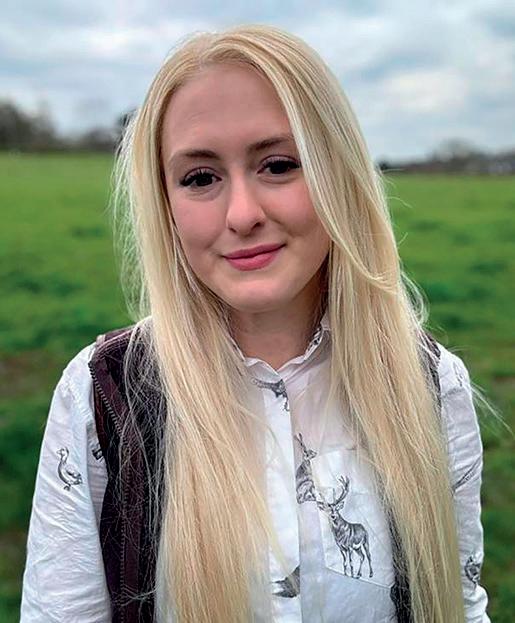
our own butchery. I hope to sell some of quality females from the Follyfox herd for pedigree use through one of the supportive Shorthorn sales at Welshpool or Melton Mowbury later this year.
One of my greatest mentors has been Ms Russell from Stanford Park Farm. When I first decided I wanted Shorthorns, Tina did not just try to sell me cattle, she wanted to find out what I wanted out of my pedigree herd.
Kirsty Leigh, 28, is a fourthgeneration farmer from Wolverley in Worcestershire. She has recently been appointed a board apprentice for the Beef Shorthorn Society.
Her input has been invaluable, she has supported me along my journey and has also helped me with show preparation and showing cattle.
Serving as an apprentice board member for the Beef Shorthorn Society has been amazing. I wanted to get involved within the society as I believe that there is a place for a beef shorthorn on any farming enterprise. What is really important is to help spread the word and to give something back to the society which has supported me tremendously.
MORE INFORMATION
If you would like to be featured, email chris.brayford@agriconnect.com
I ASK, how soon will it be before we see food rationing in the UK? It may not be so long off, and many do not even think about it.
With the wet winter, much of the winter corn crops are rotting in the ground. If farmers plough the crops in, to replant with spring corn, which yields less than winter crops, if it then becomes a dry period, we will be short of grain.
Early potatoes are already not available as they have rotted in the ground from the wet weather.
Landlords do not reduce the rents on farmland if the tenant gets a 50 per cent crop.
We may be importing food, but, for example, salad crops in Spain are leaving Spain short of water. Importing food from afar is adding to climate change and pollution. We need to address food security by not building on food-producing land.
Especially in southern England, with climate change, we will have an advantage in the warmer weather to grow vegetables and fruit.
But over many years most of our orchards and horticultural land has been sold for developments. We need to stop building houses to sell for developers’ gains, and instead restrict developments to local needs. A Minister for Horticulture is needed, before we see food queues and rationing.
Striking for higher wages will not produce more food, as it will not be there in the first place.
Laurence Keeley, Herstmonceux, East Sussex.
■ IF you would like to send us a letter for consideration, please note that our email address has now changed to fgeditorial@agriconnect.com Contact us


A FARMERS Guardian Farming Matters opinion column written by Norman Bagley, asking if Red Tractor and other third-party assurance schemes should be ‘consigned to an old shed’, attracted dozens of comments on online. Here are three of the most popular Facebook posts: ■ “Great to see that Norman
A SPOKESPERSON for the Department of Energy and Net Zero said: “In some cases, solar farms can increase the local abundance of bees, birds and butterflies.”
continues to be an industry leader, speaking good old common sense.”
MITCHELLS LAND AGENCY
■ “Farmers are in business to make money.
“It is all well and good for Red Tractor to rabbit on about world beating standards, but without a
They were speaking in a Farmers Guardian story (Farmland solar fight taken to Parliament, FG April 19).
Where is the evidence for this statement?
On how many farms out of how many?
What percentage is due to the presence of the solar farm or to


premium to reflect the extra effort involved, it is pointless.”
STEVEN TOLHURST
■ “It is time someone helped farmers to get better value for all the work that is put into a 10-16 hour day. Stop the big guns taking all the profit — Tesco, Asda and so on.”
R.A AND J. FAULDERthe prevailing weather conditions that year? Where are these farms, so that we may visit and wonder at the plethora of birds and insects there? Or is this just an opinion with nothing to back it up?
Gillian Herbert, Linley Green, Herefordshire.
controller of personal data provided to us. We are a UK company specialising in providing information services including news, analysis, data, pricing, insight and market intelligence to agribusiness professionals across the globe. This policy sets out how we do this and applies the use of your personal data that you disclose to us by entering into our competition to win £200 for the Stockjudging Competition or £20 Love2Shop vouchers for the weekly Crossword Competition, referred to throughout this statement as the “Competitions”. How we collect your information: We collect the personal data you have provided to us by filling in the form on our website www.fginsight.com OR printed form when entering the Competitions. If you have entered the Competitions via our site we may also collect some technical information about how you use our site, for example, the type of device you are using, your operating system, IP address, uniform resource locator (URL), clickstream and length of visit. How we use the information you provide: We will use your personal information: • to administer the Competitions, on the basis that the use of your personal data for this purpose will be necessary to enter you into the competitions and, if you are successful, contact you to notify you of your prize; and, • if you are new to Farmers Guardian and where you have agreed to this, to provide you with news and updates from time to time about our services; and, if at any point in the future you do not wish to receive any news and updates from us or from, you can unsubscribe from our marketing list at any time by following the steps below. To unsubscribe from any communications using the link on the email we send you or by emailing us at dataprotection@farmersguardian.com. We will not use your information for any purposes except those listed in this policy without letting you know and getting your permission, if necessary, first. Who do we share your information with? We will not disclose your information to any third parties without your consent, except where: • it is necessary to enable any of our staff, employees, agents, contractors, suppliers or commercial partners to provide a service to us or to perform a function on our behalf; • we have a legal obligation to disclose your information (for example, if a court orders us to); or • there is a sale or purchase of any business assets, or where Farmers Guardian or any of its group companies are being acquired by a third party. Where we use third parties as described above to process your personal information, we will ensure that they have adequate security measures in place to safeguard your personal information. For how long do we keep your personal information? We keep your personal information for 36 months for the purposes for which it was collected or for any period for which we are required to keep personal information to comply with our legal and regulatory requirements, or until you ask us to delete your personal information. Your rights: You have a number of rights in relation to your personal information. These include


While farmers were achieving high prices and positive results for the industry, auction marts were still feeling the pressure from business rates, pressure on livestock numbers and uncertainty from the top. Chris Brayford reports.
rConfidence in the sector ‘extremely fragile’
DESPITE sky-high sheep prices and positive sales figures, the failure of Scottish Government to back auction marts or to provide clear policy direction, has left this thriving sector facing a crisis of confidence.
According to the Institute of Auctioneers and Appraisers in Scotland (IAAS), auction marts have played a vital role for farmers and the economy for more than 150 years, generating £664.5 million of livestock from sales last year.
In the week ending April 20, GB deadweight sheep prices saw further strength, with prices reaching 861p/kg, up 10p/kg on the week and 174p/kg on 2023, according to AHDB.
Tom Dracup, lead red meat analyst, said the theme of tight supplies was continuing, with the latest estimated slaughterings data suggesting supplies were now back 9.3 per cent on a year to date basis.
He said: “The latest AHDB production forecast continues to echo the sentiment of the current tight market across 2024, forecasting a slight increase to the old season lamb kill compared to our initial predictions. This is a sign potentially of some breeding replacements now supporting the kill. Longer term, declines in the breeding flock suggest domestic supplies will remain pressured across Q3 and Q4 of 2024.
“While price increases have been seen across the latest week’s data, more recently the market appears to be showing some signs of a slight
The challenges auctioneers have faced over the past 12 months have provided hurdles and obstacles to the industry.


Neil Wilson, executive director of the Institute of Auctioneers and Appraisers in Scotland.

correction, with anecdotal reports suggesting the live trade is currently providing a more mixed picture.”
However, the challenges auctioneers have faced over the past 12 months have provided hurdles and obstacles to the industry.
Neil Wilson, executive director of IAAS, said the marts had been forced to deal with a range of issues, including increasing business rates, a shortage of staff, Government policy, increased regulation and reduced livestock numbers on farms.
He said: “One of the biggest challenges has been business rates. In 2023, Scottish auction markets paid more than £2.25m in rates which we think is out of line in terms of other farming industry service providers.
“It takes a lot of money out of the sector. Cashflow costs in terms of running auctions can be detrimental.”
He highlighted the increase in in-
We have such a positive story to tell, but we want to know the Scottish Government has our backs
NEIL WILSON
terest rates over the past year, which has added further pressure on to the running cost of markets across the country.
He said: “It is one of the largest restrictions on business growth and investment in the auction sector.
“Disease management, transport

issues and welfare changes continue to add operational costs to farmers and auctioneers.”
Mr Wilson said confidence in the sector was extremely fragile without the support of Scottish Government. He added that was ‘not about money’.
He said: “It is the general support of messages for farmers, auction markets, butchers and everyone working in Scottish agriculture.
“We have such a positive story to tell, but we want to know the Scottish Government has our backs.”
Ellis Mutch, an Aberdeenshire auctioneer from the Aberdeen and Northern Marts Group, also said auction marts had experienced problems in gaining support of Scottish Government.
He said: “Farming takes months and years to plan. Farmers are hesitant to move livestock on-farm or make a big decision, because if it is the wrong one it could make or break their business.
“Gaining clarity from Scottish Government and how they will help us move forward is critical.”
He added the industry was currently in ‘no man’s land’.
He said: “The uncertainty farmers face at the moment is ultimately risking their decision to stay or move on. Some will have just taken too much and they may sell,” he added.
Mr Wilson had highlighted problems with Scottish Government no longer taking livestock market

data from IAAS, which he said could be ‘detrimental’ to farm businesses.
Risk
He said: “As of last year, Scottish Government does not take any data from us about the livestock industry.
“It is a big industry risk. Just take bluetongue as an example and how that has affected our trade with Northern Ireland. If the Government does not know what is happening in the livestock markets, how is it supposed to respond effectively?”
He questioned what would happen if there was a wider outbreak of a disease or a market breakdown.
He said: “From a broader Scottish market perspective, there are 2.75m
animals coming through from livestock markets which they are not having a view on.
“How do they know the best way to act? It impacts confidence in the livestock sector.”
He also said the management of the Scottish Suckler Beef Support Scheme had been a challenge point for farmers.
“In terms of the suckler beef support scheme, we were clear that it was set out as a support scheme and not an efficiency scheme. It has been a disaster.
“With suckler numbers decreasing, it has posed many problems to farmers. We want to encourage and support farmers to stay. Just looking
MULLER dairy farmers will receive a milk price of 38ppl from June 1, 2024, a 0.5ppl increase. This includes the 1ppl Muller Advantage premium, which is paid quarterly in arrears.
Richard Collins, head of agriculture at Muller Milk and Ingredients, said: “We recognise the challenges being faced this spring and will continue to monitor supply and demand in the coming months to ensure we support our supplying farmers.”
Arla has also announced a rise in its May price, with a 0.45ppl increase for its conventional price to 40.45ppl.
Organic farmers will see a 1.34ppl increase, taking the price to 49.98ppl.

Sheep going through the ring at St Boswells.
at the challenges of the weather this spring, things such as this place another hurdle in someone’s way and push them towards the exit door.
“It would have impacts on the wider supply chain. We have lost two key markets over the past 12 months, including Forfar, and it is really concerning for us.
“A lot of farm systems will be knackered if they cannot gain support with calving intervals of 410 days of less. It is another barrier to many farmers.”
Rural Affairs Secretary Mairi Gougeon said there would be ‘no cliff edges’ in support of farmers, crofters and the farming industry in Scotland, with high-quality food production remaining a necessity.
Arla Foods amba board director and Arla farmer, Arthur Fearnall, said: “Global milk supplies continue to be slightly lower, retail sales continue to rise and commodity markets are stable. In the UK, the organic milk price increase is driven by growing demand. Overall, the outlook is stable.”
We recognise the challenges being faced this spring and will continue to monitor supply and demand in the coming months
RICHARD COLLINS

ONE of the longest sugar beet campaigns in history has finally concluded, with British Sugar hailing a ‘record-breaking’ campaign.
And despite aphid pressure and the threat of virus yellows, British Sugar agriculture director Dan Green said he was optimistic for the next campaign as this one drew to a close.
The 2023/24 sugar beet campaign was completed, with its Cantley site slicing the last sugar beet on April 19.
British Sugar’s four factories processed more than eight million tonnes of sugar beet during the campaign from September 2023 through to April 2024, producing about 1.1mt of sugar.
The Wissington plant experienced its second largest campaign, with more than 3mt of beet processed and Newark was thought to have experienced the longest sugar beet campaign in Europe totalling 217 days.
Mr Green said it had been a chal-

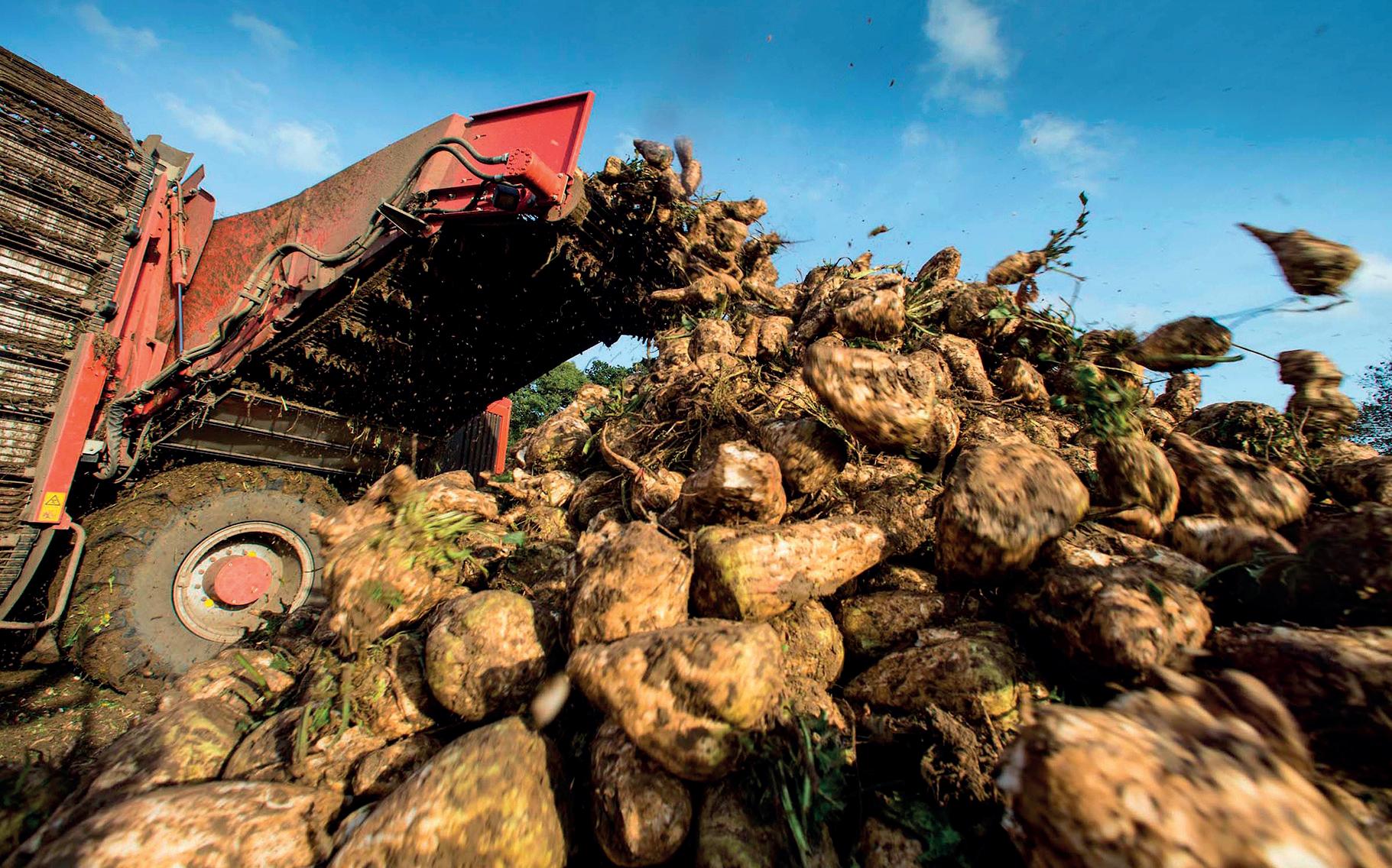
British Sugar’s four factories processed more than eight million tonnes of sugar beet during the campaign from September 2023 through to April 2024.

lenging year for the whole industry and recognised the effort of growers, harvesting contractors and hauliers.

“We are delighted with how well the factories have run over the campaign, showing that the investments we continue to make as a business ensure we are one of the most efficient processors of beet in Europe.”






Looking ahead to the next campaign, Mr Green said: “This is the fourth year in a row where we have seen drilling take place during mid-spring. As of this week, we are over 85 per cent of growing area drilled with sugar beet seed and we expect all crop to be sown by the end of April.
“I am optimistic about the coming season despite the higher aphid pressure we are seeing this year and obvious concern over potential levels of virus yellows. The crop area will be over 100,000 hectares, slightly ahead of last year.
This is the fourth year in a row where we have seen drilling take place during mid-spring
“Providing we have some favourable weather during summer, we expect to see some good crops, good yields and some good margins for our growers. This should encourage further investment in the industry, which is what we all want for the long-term,” he added.
FARM businesses have been warned to be alert to fraudulent activity on
farm to continue receiving these refunds without interruption.












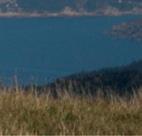



HMRC is said to be seeing an increase in fraudulent activity, according to property VAT authors Martin Scammell and Chris Nyland. It was suggested fraudsters were disguising themselves as taxpayers to alter bank account details on HMRC’s online portal.
Gary Frear, agriculture expert and partner of accountancy firm Price Bailey, said: “Given that most farming entities are receiving monthly or quarterly VAT refunds, it is essential for the cashflow of the
“We are also now entering a period when farms are typically purchasing inputs like sprays and fertilisers and the refunds could be much larger.”
Greg Mayne, Price Bailey VAT partner, said it had been suggested larger businesses were the primary target.
“Despite this, we are hearing some smaller businesses have also been affected and so, for the time being, taxpayers submitting repayment claims must be especially vigilant and check that their bank account details have not changed, ” he added.
CRIMINALS are increasingly targeting farm shops, with two-thirds of retailers in rural areas being affected over the past 12 months.
According to research from NFU Mutual, this has cost shops in those areas an average of more than £40,000 in the period. One-in-20 rural retailers lost between £200,000 and £500,000 to crime over the same period.
It comes amid warnings shoplifting rates have dramatically increased across the country, with suggestions the cost of living crisis was behind the rise.
More than half of rural retailers have had to implement security measures in the past year, with 59 per cent installing CCTV and more than four-in-10 training employees on safety and self-defence.
Those preventative measures come
as almost three-quarters of rural retailers said they believed crime had increased in the last 12 months.
David Harrison, farming specialist at NFU Mutual, said it showed a ‘worrying number of retailers’ were falling victim to crime and urged farm shop owners to ‘stay vigilant to protect their stock, staff and premises’.
He said: “Farm shops have sadly been targeted in the past due to their remote locations, so it is vital owners take all necessary and appropriate preventative steps to try and deter thieves.”
The most common type of crime retailers have suffered was the theft of goods from the shop floor or stockroom in working hours, with verbal violence or assault against staff and customers, overnight theft, criminal damage and theft of money from tills or safes also featuring highly.
NFU Mutual suggested shops should ‘use customer service as a tool to deter thieves’ as greeting people may deter them as they have been identified, make store layouts org-

More than half of rural retailers have had to implement security measures in the past year.

anised and tidy with high-value or desirable items in monitorable areas and limiting the number on display.
Retailers were also urged to train staff on shoplifting tactics and how to keep themselves safe.
Minimising cash takings and using


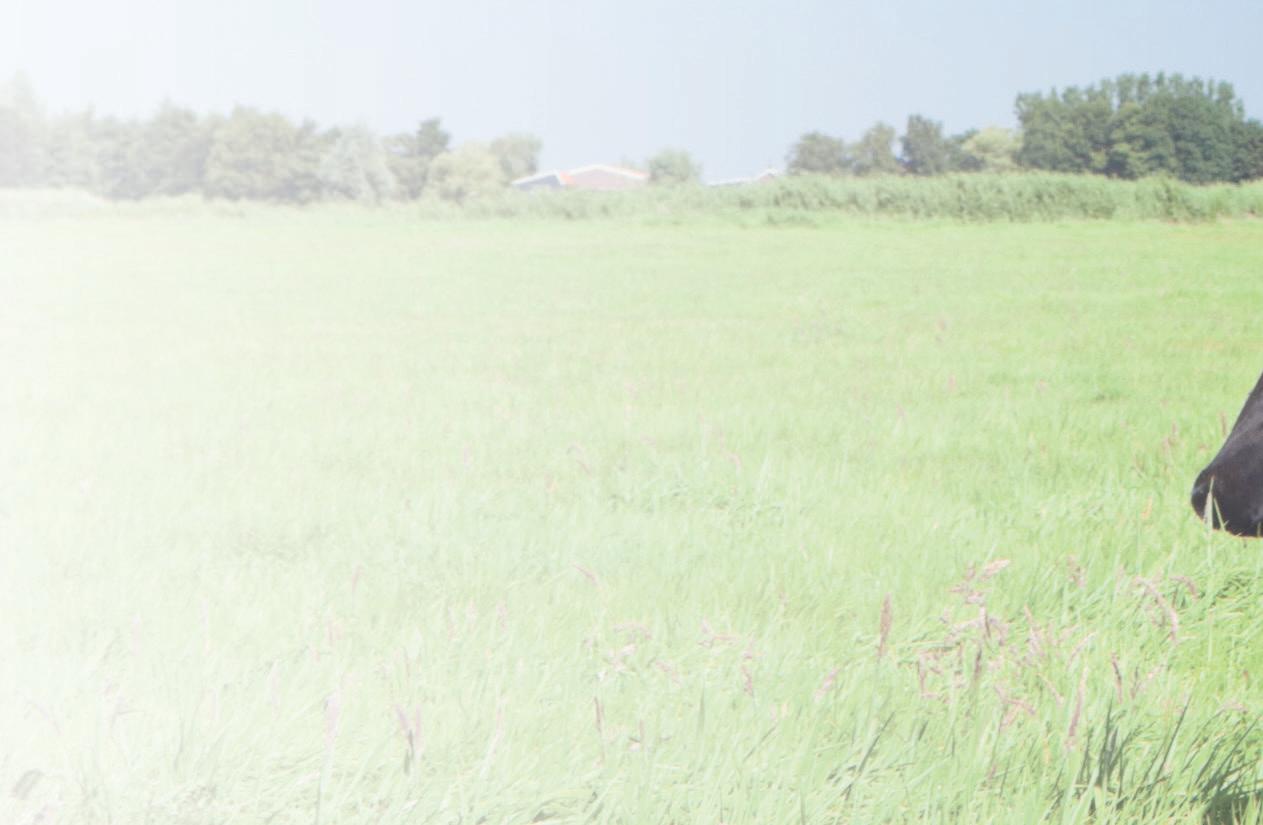





counter caches to deposit cash during opening hours was also suggested, alongside a good quality safe.
Other recommendations included good quality locks, investing in shutters and bars on doors and windows and being aware of cyber threats.






DISCOUNT supermarket Lidl has announced it is investing £500 million in the UK pork industry in order to ensure its customers continue to benefit from a cost-effective, high-quality product.
The retailer is the fourth-largest vendor in the fresh pork category with an 11 per cent market share, and has said the move was designed to combat recent sector-wide challenges, including rising costs, a Chinese import ban on EU pork and butcher shortages.
It has introduced a new ‘Lidl Pork Standard’, which has moved pork producers to an open-book producer costing model. This includes the onfarm cost of production, guarantees minimum producer volumes and includes a fixed margin for farmers.
The standard was developed in collaboration with pork producers through its newly created ‘Lidl Pork Producer Group’.
rUK prices rose last week before easing
By Alex BlackDOMESTIC wheat prices have increased to their highest point since January, with the November 2024 contract tipping over £200/tonne.
Last week, UK feed wheat futures for November 2024 gained £11.60/t on the week, and the May contract also gained £10.35/t. But with the last trading day approaching on May 23, technical factors were influencing the contract, according to AHDB.
On Monday, November 2024 prices closed at £205.35/t, which was down £2.75/t from Friday’s close, with some potential relief from the dry weather on the agenda for Russian crops.
Richard Bourns, chief commercial officer at Lidl GB, said the supermarket had ‘recognised the need for intervention and the development of a bespoke solution addressing these challenges’.
Lidl will fund research and development projects aimed at improving pigs’ overall well-being and invest in assessing the carbon footprint of all the farms in its pork producer group. It has also pledged £250,000 in at-risk UK catchments to support river health and water quality, while working to achieve deforestation-free soy sourcing by the end of 2025.
Lizzie Wilson, chief executive of the National Pig Association, welcomed the introduction of producer contracts and Lidl’s ‘continued commitment to ensuring a sustainable domestic supply’.
!
* BOUNDARY & TITLE
* ACCESS PROBLEMS
* EASEMENTS
* LAND REGISTRY
* PARTNERSHIP& INHERITANCE PROBLEMS
* DIVORCE & SEPARATION


Lidl is the fourth-largest vendor in the fresh pork category with an 11 per cent market share.

Senior analyst Helen Plant said dry weather in Russia had been one of the main factors supporting wheat prices.
She added the 2024 Russian crop was projected to be ‘another large one’ at 93 million tonnes.
“While this is up on last year’s 92.8mt, it is 1mt lower than forecast in late March due to dry weather concerns,” she said.
“After below-average rainfall in March, the key areas remained dryer than usual this month.
Yes that’s right! FREE LEGAL ADVICE on all matters involving land and business disputes. Whether it’s a new matter or a second opinion on an existing case call now and find out what we think and where you stand.
For a FREE down to earth opinion on any land or commercial dispute please contact Specialist, Ian Procter (Solicitor) direct at 01254 822330 Green Solicitors 07970 404 536 supporting the Farming Community. 79 King Street, Whalley, Clitheroe, BB7 9SW.
Continued dry weather poses a risk to the current large crop projections and SovEcon reports that the coming weeks are important.”
However, rain has been forecast in key Russian crop-producing regions, easing supply worries a little.
Rupert Somerscales, Agri-Analytics UK analyst, said there was a sense the world wheat market had ‘switched from being a buyer’s market to one in which sellers now have the upper hand’.
“For now, at least,” he added.
He said global wheat futures markets were very ‘short’, with speculators expecting grain prices to fall.
“They had been correct until,
well, they were not. Panic buying from this fraternity to take cover shows the power of this class of traders,” he said.
Mr Somerscales said Russia continued to degrade Ukraine’s port infrastructure, with Odessa in the spotlight, and he questioned whether Ukraine would eventually have no Black Sea access to export grain. He also highlighted the northern hemisphere grain harvest would soon begin, bringing fresh supplies onto the market.
“This should have a dampening effect on values into the second half of the calendar year,” he said.
THOMAS Bell and Sons has announced the acquisition of the Mole Valley Farmers fertiliser storage and blending facility located in Newport.
It said this acquisition, combined with additional storage capacity, would compliment its existing
operations at Immingham, Grimsby and Sharpness and strengthen its position in the fertiliser market. It added the strategic decision represented ‘a significant milestone and emphasises our commitment to provide a wider range of fertilisers and service to UK farmers’.
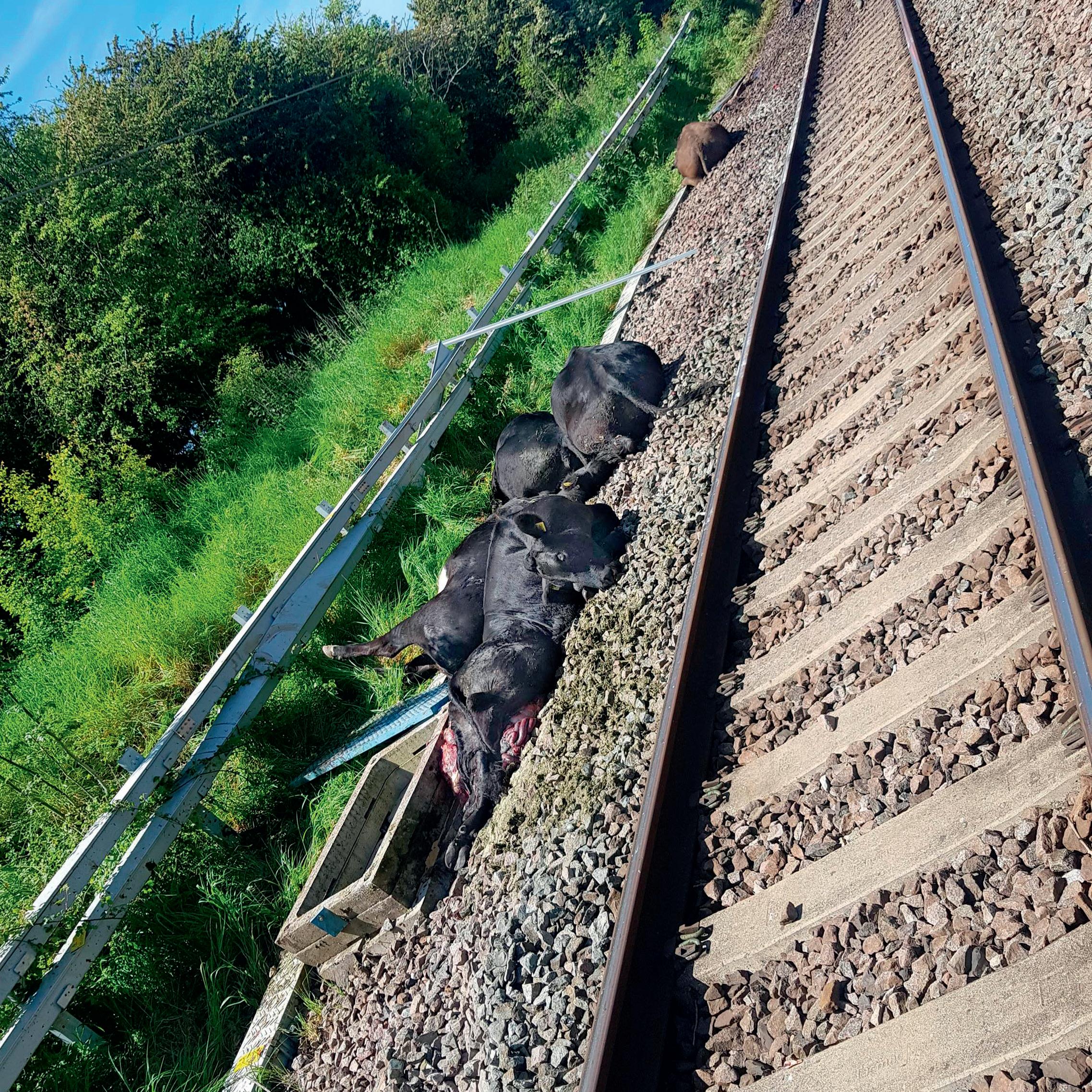
Help keep your animals and the railway safe.
We’re working with landowners and farmers to continually improve the safety of the railway by ensuring our boundary fencing is secure. As part of our fencing inspection regime we are keen to work closely with our rural lineside neighbours collaboratively.
To report any concerns please call our 24-hour National Helpline 03457 11 41 41






Holly Atkinson started her career in agriculture as a farm vet, despite not coming from a farming background. However, a change in career path has still allowed her to apply her previous skills in her day-to-day work.
Holly is now based on a seven-site organic dairy unit in South Devon, working as part of a large team and helping manage the youngstock with the farm manager and farm owner.
She described winning Farm Worker of the Year at last year’s British Farming Awards as a ‘complete honour’.
Holly says: “It was an absolute honour to be nominated for the award, but I genuinely thought that would be as far as it went. To be shortlisted and interviewed was even more unexpected, let alone going on to win the award. I am incredibly grateful.
“Farming is so important; we feed a nation and beyond. There are misconceptions in the industry, especially with the wider public, but through awards like this we can raise awareness and show what we really do and the truth of why agriculture is so important.
“Evenings like the British Farming Awards are a brilliant excuse to get some of the industry together, and we
XAfter working as a vet, Holly Atkinson now plays a key role on a large-scale dairy farm
XThe British Farming Awards judges commended her for her daily work, but also maintaining training and development
XTeam mentality and health is a priority for Holly



Working alongside her family on a dairy farm in the South West can bring its challenges, but Holly Atkinson provides a positive attitude to deliver for the livestock and her colleagues. Ellie Layton reports.

can celebrate the good work within the industry.”
The farm she is a key part of spans more than 405 hectares (1,000 acres). Caulston Farm is part of the Carswell Group, a family dairy business covering 1,214ha (3,000 acres) across Devon, Cornwall and Somerset.
The farm is managed as a team by Adam, Holly and their son, three-year-old Abel.
A powerful combination of data-driven farm management is used by Adam, which is complemented by medical insight from Holly.
XShe works alongside her husband Adam and their two children
XHolly has played particularly close attention to resolving calf pneumonia
XSpring block-calving system across the multi-site farm system
XFarm averages just shy of 5,000 litres, milked in a 48/96 parlour
For more information, go to
This is resulting in a thriving, forage-based system across their 600-head herd made up of Kiwicrosses, a cross between Holstein Friesian and Jersey.
This New Zealand-originated breed strives to provide the best of both breeds, high butterfat and a light frame from the Jersey, along with the higher output from the Holstein Friesian.
Holly’s good work has not stopped at the farmyard, as she has the welfare of both
XThe Isuzu D-Max, with more than 100 years of specialist engineering, is the 2023 Pickup of the Year, according to What Van? – the fifth time in the last six years.
Combining smart design, solid efficiency and towing power, it excels in styling, off-road performance and the latest safety technology.
The pickup offers capability

her animals and workmates in mind. This led her to train as a mental health first aider to promote mental health with her colleagues.
Carrying on her work on social media she has created her Instagram page ‘Face Your Thoughts’ to help support the farming community.
With a keen eye for drawing, she captures the struggles many farmers face by doodling about the thoughts which go through farmers’ heads daily and how to overcome them.
and elevates comfort and finesse. Packed with features, it tackles tough jobs and off-road terrain.
Explore the range and arrange a test drive with your local dealer to experience the excellence of the multi-award-winning Isuzu D-Max.
By focusing on multi-species swards and reducing nitrogen usage, Chris and Bella Mossman are building a financially and environmentally sustainable business. Angela Calvert reports.
For many years, Chris Mossman, who farms with his daughter Bella near Llangrannog, Ceredigion, had farmed profitably, running what he describes as ‘a traditional farming system’, but bovine TB breakdowns and other cow health issues led to a change of plan.
Since 2018, the aim has been to find different ways to manage the farm and move away from dependency on chemical fertilisers, purchased feed, wormers and antibiotics, without any grant or support, and remain profitable.
Over time the herd has expanded from 100 to 400 cows, which have been specifically bred for grass-based production.
They are spring calved in an eight-week block ahead of the grass growth curve to maximise grazed grass producing a high milk solids output.
The first 11 hectares (27.1 acres) of multi-species were sown in 2018 and since then all reseeds have been diverse swards with both cutting and grazing mixtures used.
There is also a nitrogen reduction plan in place.
Having traditionally used 300kg/ha (121.4kg/acre), by 2022 this had reduced to 126kg/ha (51kg/acre) with the eventual target being 50kg/ha (20.2kg/ acre), with none used on the
X Grazing from February to December
multi-species swards. This progress has been made by correcting soil chemistry, moving away from monocrop ryegrass to mixed species pasture, no ploughing, foliar applied fertiliser, limiting slurry use and only using a trailing shoe.
The future challenge is to continue to reseed the whole farm with diverse pastures, learn how to manage them and sustain their diversity.
Chris says they need to learn what the farm’s sweet spot is (maximum sustainable output) cashing-in on the free energy of sunlight and photosynthesis and reducing the need for expensive fossil-derived energy.
By default this will reduce climate change emissions, restore soil health, improve water infiltration and water holding capacity.
Bella says: “Innovation is crucial for our business to survive – we have to keep reinventing the wheel. We were surprised and delighted to win the award; it was very unexpected.
“But entering the awards has been a great process – it really makes you think differently about your own business and get excited about the industry in general.
“The awards night was great fun and it was so nice to meet so many people there.

“Being part of this industry and producing food for the nation is something very special.”
With the changes already implemented and Bella’s ideas
X Germinal pioneers innovative grassland varieties for the UK, Irish, and New Zealand markets.
As a sixth-generation family business, Germinal supports farmers with progressive products and technical advice.
Committed to sustainable food production, it collaborates with partners to drive a responsible future for agriculture, developing

for diversification and beginning to invest in renewables, the family are confident they will be farming their improved land for generations to come.
climate-smart products and sharing knowledge.
For more on Germinal’s climate-smart forage solutions, visit germinal.co.uk, or follow @wearegerminal and @GerminalUKAgri on X, Facebook and Instagram.
rIFA says tillage sector is fighting to survive
By Alex BlackMAJOR falls in the production of the main cereal crops in Ireland have illustrated the pressures on the sector.
Cereal production fell by almost 21 per cent in 2023, according to figures from the Central Statistics Office.
In 2023, two million tonnes of oats, wheat and barley were produced, down 500,000t on 2022.
Potato production was down by 12 per cent at 322,000t.
Yields were hit in 2023, with oat
yields down 1.5t/hectare, barley down 1.3t/ha and wheat decreasing by 1.4t/ ha. Potato yields were down from 43t/ ha to 39t/ha.
However, oilseed rape production increased by 25 per cent, with bean and pea production also up.
Irish Farmers Association (IFA) president Francie Gorman said the figures were further evidence of the pressures on the sector.
He highlighted a Tillage Survival Scheme proposal put forward by IFA, which he said was urgent.
It has proposed a €250/ha (£213/ ha), five-year payment for arable


Irish barley yields were down 1.3 tonnes/ hectare last year.
farmers and said it was essential this funding was secured in 2024 to prevent a decimation of the national tillage area.
“We raised this again with Taoiseach Simon Harris on a tillage farm in Kilkenny last week. No time can be lost in putting together a support package that provides some hope for the sector,” he said.
“Tillage farmers have faced a perfect storm since summer 2023,
with falling grain prices; input costs remaining high; loss of rented land; and heavy rainfall in the period since.
“There is no question that our tillage sector is fighting for its very future. The Government says it wants to have more tillage production and this will only happen if they step up and support growers. What was announced recently by the Minister for Agriculture is inadequate,” he added.
Farmers Guardian delivered directly to your door every week including full digital access. Plus, check out our brand-new features exclusive to Farm Futures members.
Future-proof your farm business, gain insight and exchange knowledge with a Farmers Guardian Farm Futures membership.

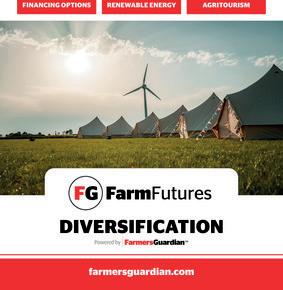




Included in your membership:




Insight – Quarterly, in-depth, analytical reports into the latest agricultural trends. Recent topics include, diversification and low carbon agriculture Exchange – A series of digital events focused on learning from real case studies and exchanging knowledge with agricultural thought leaders Weekly Digest email – From the desk of FG’s editor every Sunday morning, discover exclusive insights which impact the business of profitable farming Members’ Lounge – Enjoy an exclusive space for members to network at leading events, such as LAMMA, CropTec and Farm Business Innovation.
 Edited by Angela Calvert – 07768
Edited by Angela Calvert – 07768



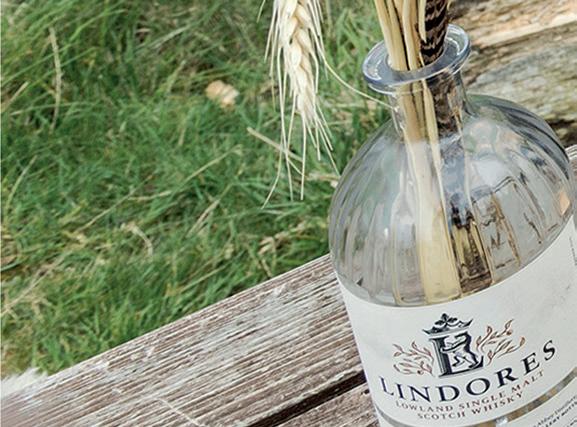



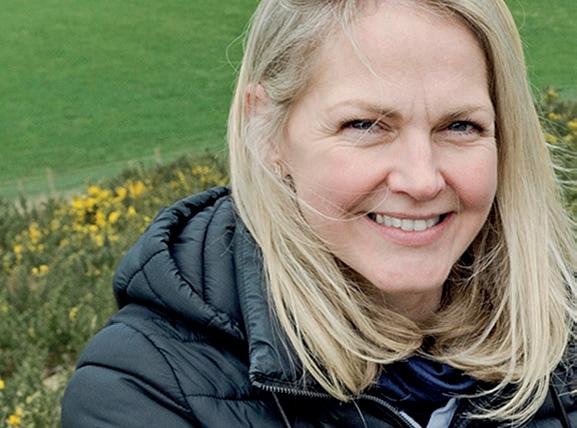





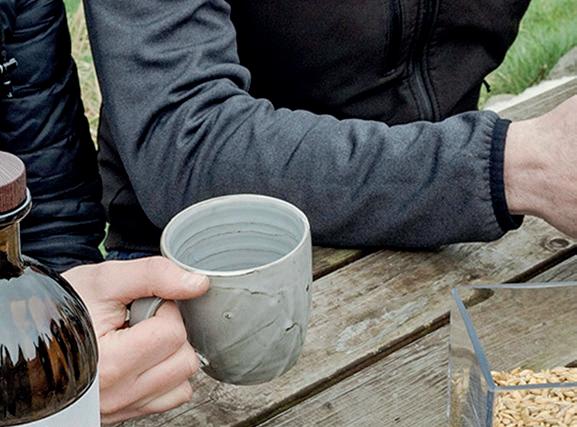






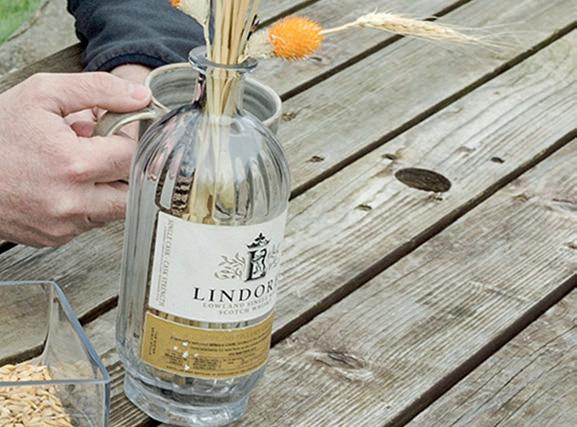

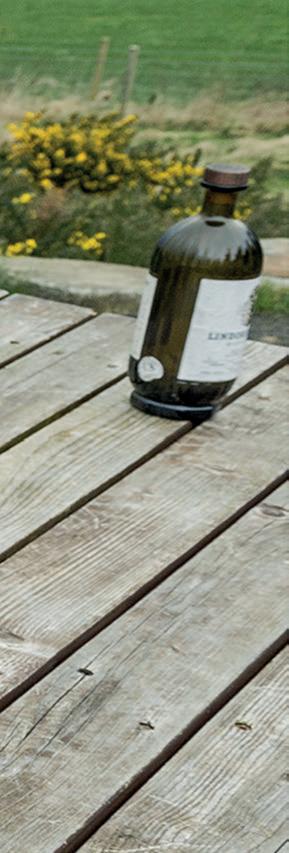


Making the most of their unique location in North Fife has enabled the Black family to develop a sustainable business to hand on to future generations. Ewan Pate reports.
The topography of North Fife is unique and very much dictates what type of farming is suitable for the area.
Its defining feature is a line of low but steep sided hills running from west to east along the south bank of the Firth of Tay.
The bottoms of the valleys are fertile and the soils light enough to be suitable for field vegetables and cereals, but they soon give way to steep hillsides only suitable for grazing.
This means there is little option to mixed farming, but that need not be a disadvantage, as the Black family, of Braeside of Lindores, has proved.
They have used the terrain to real advantage, not only in their farming but in a range of diversified activities across the 223-hectare (550-acre) farm.
Richard and Anna Black, along with Richard’s parents, have carefully built up a business which not only embraces the concept of ‘field to fork’,
but also ‘seed to sip’, with the latter emphasising a close working relationship with Lindores Abbey Distillery at nearby Newburgh.
Anna says: “We were delighted to win Visit Scotland’s best self-catering accommodation experience at the regional Thistle Awards.
“The judges said we represented a truly circular sustainable agritourism
business. That is exactly what we have been trying to achieve on-farm.”
The way the spring barley crop is handled is a good example.
Most of the lower arable ground is devoted to spring barley for malting and sale to the distillery, which is less than two miles from the farm.
The draff from the whisky -making process is brought back
for feeding to cattle and sheep, which is a neat enough local supply chain in itself.
But the Blacks go further with some of the home-produced Lindores lamb being used in the tourist business which includes farm tours linked to the distillery.
The link has been made even stronger with the farm providing
bonded warehousing for storing up to 10,000 barrels of maturing whisky.
Richard says: “That came about from a chance conversation with one of the distillery managers. I told him I was considering putting up a building for either poultry or pigs, but he said why not use the site for whisky storage.
“So that is exactly what we did and now we have two new purpose-built bonded warehouses.”
The distillery itself is modern with its first single malt being bottled as recently as 2021, but it is thought that whisky was first produced by the monks of Lindores Abbey in 1494. This is believed to make it the oldest whisky-producing site in Scotland.
Spring barley takes up 101ha (250 acres) of the 121ha (300 acres) of cropping land at Braeside, with Laureate being the favoured variety in recent years.
Cover crops are used as part of the rotation as frequently as possible and established using a Claydon drill.
The crop is then either grazed by sheep over winter or ploughed in before sowing the next crop. Cover mixes vary, but often include phacelia, Italian ryegrass, vetch and sunflowers.
The barley is established with a one-pass drill on to ploughed land.
The only other arable cropping consists of broccoli grown by a neighbouring farmer. Again, the stalks and crop residue make useful sheep feed.
The hill ground, a mix of grazing with some forestry, is home to a 400-ewe flock, a small herd of Aberdeen-Angus suckler cows put to an Aberdeen-Angus bull and four recently purchased pedigree Highland cows.
The ewes, which lamb outdoors in April, are Texel crosses with some more recently introduced Highlander Aberfield crosses.
Richard says: “We run them with Highlander or Texel tups and finish all the lambs, often on broccoli aftermath.”
This would seem a conventional use


Braeside of Lindores Lodge looking over the town of Newburgh and the River Tay.

for this type of land, but there is far more to it than that. The hill is the centrepiece of some very imaginative and award-winning diversification projects which, when put together, offer visitors something Anna describes as ‘a truly immersive experience’.
It all began back in 1989 when her mother-in-law Frankie began to lay out an equestrian cross-country course.
The terrain is ideal because although the sides of Lindores Hill are steep, the plateau on the top is rolling and varied offering plenty of opportunity to create imaginative jumps.
The course now offers 160 jumps
and has become a training ground for riders from all over Scotland.
This side of the business has now been expanded to the extent that it has been rebranded from Lindores Cross Country to Lindores Equestrian and is now a British Horse Society-approved training centre.
This reflects a widening of the offering to include all aspects of riding and horse care by means of residential or day courses.
This might see up to 24 young riders and their ponies attend a two-day course staffed by qualified tutors.

■
They make full use of the all-weather jumping arena and dressage ring and there are also talks on horse care and the opportunity to have horses and ponies weighed to make sure they are not being overfed.
There is a bunkhouse and camping accommodation available, as well as stabling for up to 36 horses in converted sections of the farm steading. There is a lot of flexibility in the offering, but everyone has to bring their own horse or pony.
Anna began to build up the diversified aspects of the business back in 2014 while working for a bank and bringing up her two children – Rosie, 11, and Alistair, eight.
Anna left full-time employment in 2017 to devote her full energy to developing the diversified aspects of the family business and since then it has two wings, each with their own website.
The equestrian business has now been joined by a business concentrating on luxury accommodation and local food.
This started following a set back when plans for a wind farm failed to
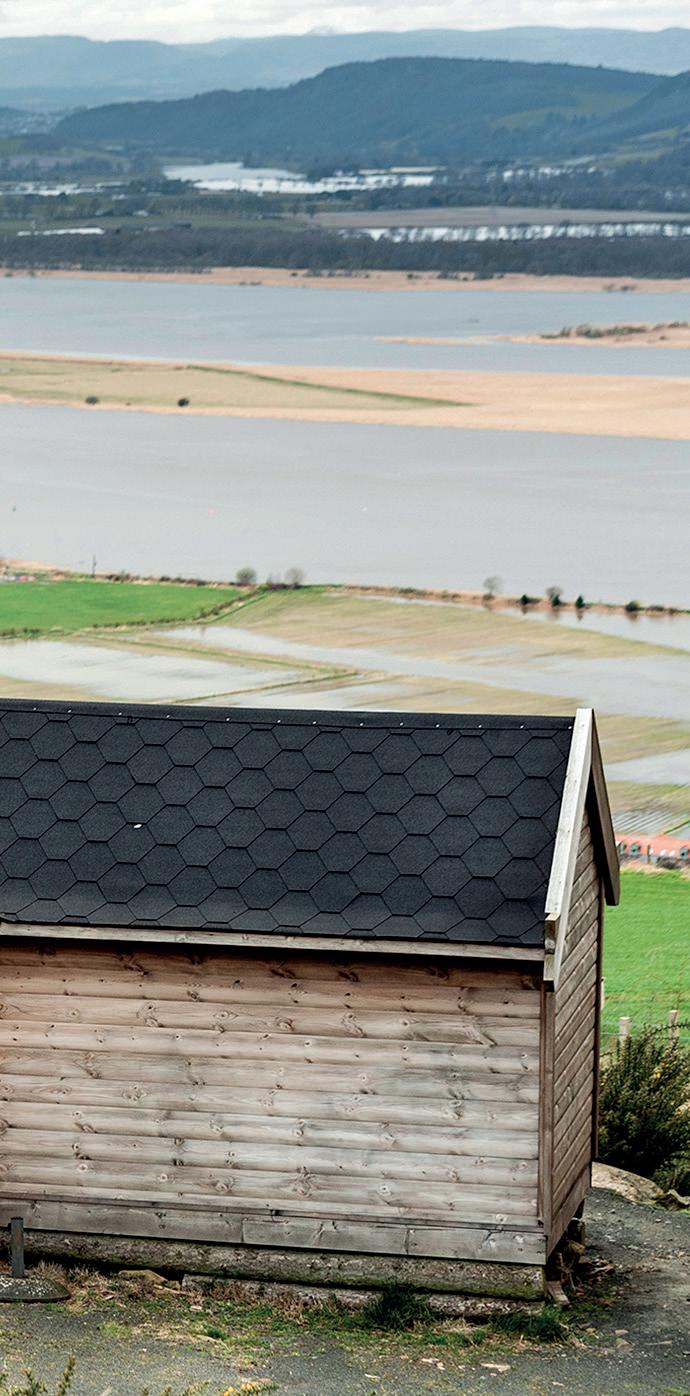
■
■ Equestrian diversification
■ Luxury self-catering accommodation
■ On-farm catering using local food
gain council approval. After a rethink, it was decided to make the most of the views across Fife by constructing self-catering lodges.
The initial thought was that these could be linked into equestrian holidays, but it was soon realised that there was a much bigger market to cater for.
The result is that now there are four lodges on the farm, two new builds and two renovated properties.
Anna says: “Between them, the four lodges can sleep 18 people. We can cater for anything from multi-generational family holidays to newly married couples.
“The lodges all have hot tubs and one has a private sauna. Two of them have increased accessibility.”
A more recent addition is The Hide, a quirky hilltop hut equipped with its own wood-burning barbecue.
Set at an altitude of 160 metres (520 feet), it has panoramic views up the River Tay and far into Highland Perthshire. It is an ideal place to eat,
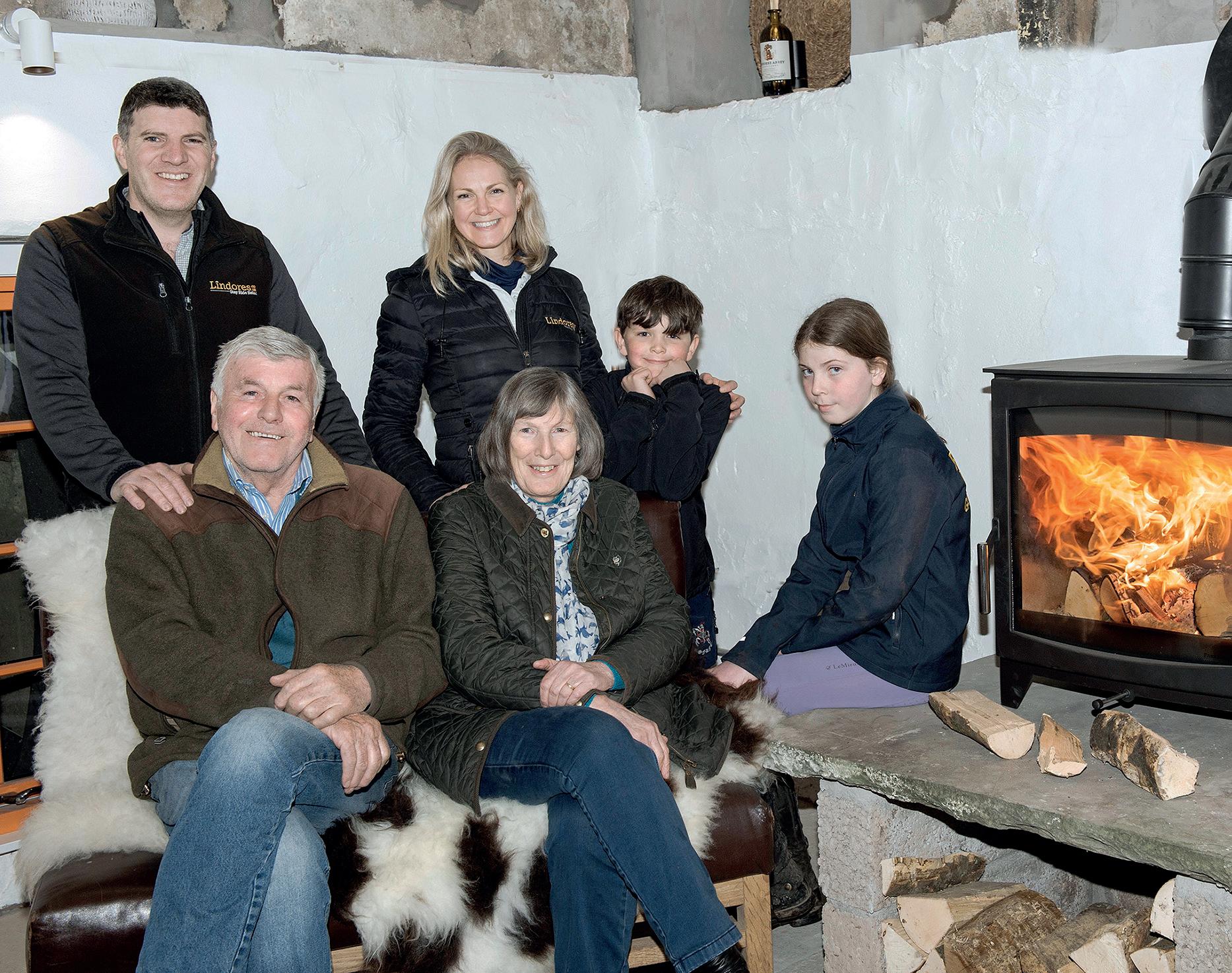


with local food and drink provided for the party to cook themselves.
This includes lamb produced on-farm. Alternatively, a chef can cook the meal and a sommelier can serve the drinks and, as an extra touch, a bagpiper can welcome guests.
It has also proven to be a popular lunch venue for shooting parties over winter. There is a shoot on the farm, but it is under commercial management and is combined with others on neighbouring farms and estates.
Earlier this spring, Braeside of Lindores reached the final, and then won, the ‘Foodie’ section of the BBC’s Scotland’s Greatest Escapes.
Anna says: “Richard and I are quite passionate about making the most of the assets here and passing them on to the next generation in good heart and, fortunately, we love innovating.”
The latest development is the conversion of the original farmhouse into what is to be known as The Barley House, a flexible space for events,

training and activities. Previously, it housed a grain dryer and before that was a tractor shed.
In keeping with the ethos of the business, all the work is being undertaken by local tradesmen. The Black family all work in the business and their team includes manager Katy, administrative assistant Becky and farm worker Aaron.
There is certainly plenty of interesting work for all of them on this busy Fife farm.


An SDHI fungicide claiming to offer potency, stamina and yield benefits for crops including wheat and barley has been granted authorisation into the market. Ash Ellwood reports.
rYield gains also reflected in trial work
A NEW fungicide claiming to provide potency and stamina, alongside yield benefits, received authorisation for use in Great Britain on April 5. Syngenta’s Miravis Plus, containing new SDHI active ingredient pydiflumetofen, is being launched for the T2 fungicide spray timing and will be available in a co-pack with triazole fungicide Era (prothioconazole).
Syngenta cereal fungicide portfolio manager Lizzie Carr-Archer says the new fungicide works by penetrating through the surface of the crop leaf, creating a reservoir of active ingredient in the waxy layer of the tissue.
This enables even distribution and long-lasting protection of the plant as it grows.
She says: “It offers GB farmers a step change in performance against cereal diseases, such as septoria in wheat and net blotch in barley. It can also control a wide range of pathogens, such as fusarium head blight.”
Trials run by Syngenta laboratories demonstrate the potency offered through Miravis Plus through an EC50 test, investigating what dosages of various fungicides are required to create a control response against septoria.
Jason Tatnell, technical manager at Syngenta, says: “We looked for the dose required to slow the [septoria] growth in wheat by 50 per cent. The smaller amount of product required to do that, the more potent it is.”
EXAMINING disease control in more detail, Mr Tatnell says in the field, T2 application of Miravis Plus + Era has given visibly improved green leaf area retention versus leading fungicide standards.
Drone imagery from independent ADAS trial plots has also shown the green leaf protection from Miravis treatments remained visible long after other treatments.

Using a range of wheat samples infected with septoria from UK, Ireland and northern Europe, the trial demonstrated the level of potency Miravis Plus carried compared with competitor SDHI fungicides.
Mr Tatnell says: “We saw 100 times less Miravis Plus fungicide required to deliver the same level of control in these real-world septoria field populations compared with any of its predecessors.”
To test the stamina offered by the product, separate trials compared wheat crops sprayed with different types of SDHI fungicides, all applied at full rate before the flag leaf had emerged. The crops were left for 14 days for the flag leaf to emerge.
Mr Tatnell says: “At the T14 sample time [T2 spray timing], we took samples of the flag leaf, chopped them up and looked for how much active ingredient we could find in the samples.”
At this T14 timing, a portion of the fungicide active ingredient had moved into the emerging flag leaf. However,
Mr Tatnell says: “What is also particularly useful is the reduction in fusarium head blight and DON mycotoxin achieved from treatment at T2.
“While an appropriate T3 ear fungicide remains key for fusarium management, using Miravis Plus + Era in the programme at T2 can make it more likely that the T3 fungicide will keepthecropbelowaDONthreshold.”

where Miravis Plus stands out against the competitors for stamina is closer to the T3 timing, says Mr Tatnell.
He adds: “We do a second sampling at T28 sample timing, which is around T3. If we look at all of the alternative SDHI products, the active ingredient is still there, but it is declining in concentration, whereas Miravis Plus is increasing in active ingredient right to the T3 timing.”
Yield gains
Yield gains against other fungicides have featured in both Syngenta and independent trials.
Mr Tatnell says: “In wheat trials from 2020 to 2023 at like-for-like doses, Miravis Plus treatment gave an average of an extra 0.5 tonnes per hectare over fluxapyroxad/mefentri-


New T2 fungicide Miravis Plus claims to provide certainty for growers due to the combination of active ingredient potency and stamina.
fluconazole in 244 comparisons, and an extra 0.3t/ha over fenpicoxamid/ prothioconazole in 156 comparisons.
“At a grain price of £170/t, these differences equate to £85/ha and £51/ha of extra income, respectively.
“Similarly, Miravis Plus treatment has improved barley yields by an extra 0.45t/ha against a range of SDHI fungicide standards.
“In barley trials from 2020 to 2023 at like-for-like doses, Miravis Plus treatment gave an extra 0.51t/ha over fluxapyroxad/mefentrifluconazole in 112 comparisons.”
Miravis Plus + Era target diseases
FOR WHEAT CROPS
■ Fusarium head blight
■ Septoria tritici
■ Septoria nodorum
■ Tan spot
■ Mildew
■ Brown rust
■ Yellow rust
FOR BARLEY CROPS
■ Fusarium head blight
■ Net blotch
■ Rhynchosporium secalis
■ Ramularia collo-cygni
■ Mildew
■ Brown rust
Source: Syngenta
rGrowers advised not to go off the calendarBy Ash Ellwood
WITH steady progress being made in light soils due to the much-needed weather windows presented, independent agronomist Paul Cawood, of Soils First Agronomy, says that roughly 50 per cent of spring drilling has been completed within his area of south Lancashire, Cheshire and north Shropshire.
He says: “It is a game of patience at the moment, essentially waiting for conditions to be right.”
The key crop to have been drilled is spring barley, with some being used to patch poorer winter wheat crops which became patchy mainly due to the waterlogged soil conditions.
“Winter wheat has been patched up with either spring barley or very late germinating winter wheat, which
is going to mean they are going to be all out of kilter, but it is better to get something in the ground that you have chosen to grow,” says Mr Cawood.
Although there have been some brighter, windy days in the North West, drilling conditions are still challenging.
“The top two inches are either rockhard and panned out, or just like PlayDoh, and that is the problem,” he adds.
“We are trying to work with soils that are not ready to be worked with, so we have got some crops in, in lessthan-ideal conditions.”
Fields which are more free-draining have had crops drilled, others with a higher clay content are still waiting to dry out.
“The easy wins have been taken, so now it is just waiting for the trickier ground that has held onto water a lot longer to dry out.
“So, this year, my advice to farmers





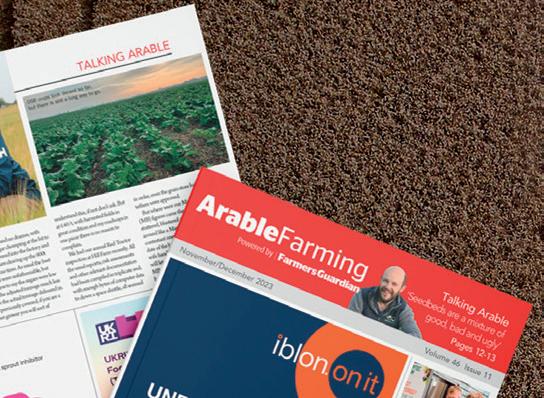



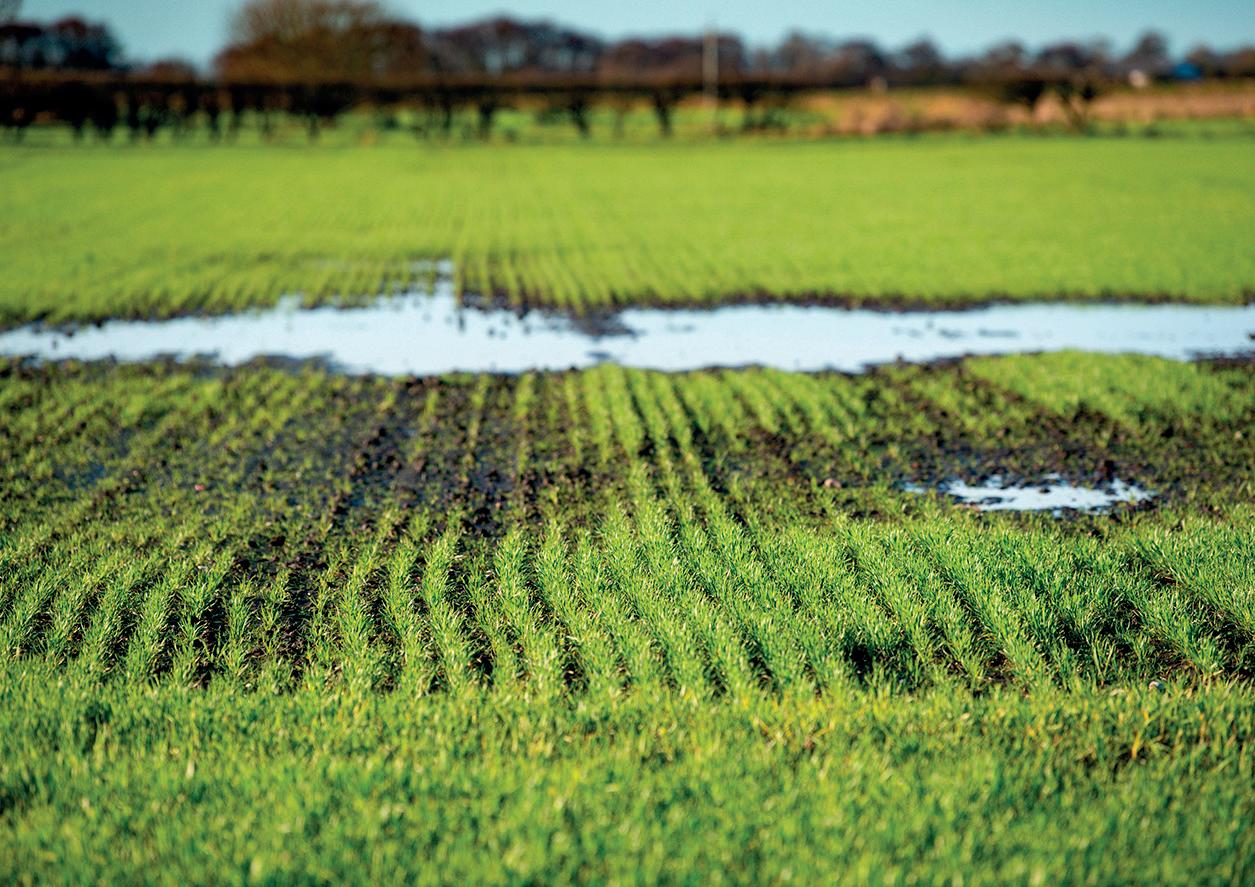
Many growers are currently waiting for the trickier ground that has held onto water to dry out, says independent agronomist Paul Cawood.

is, do not go off the calendar for drilling, go off conditions. If you have got a plan, stick with it and be patient,” says Mr Cawood.
In west Shropshire, Dr Edward Dickin, crop production lecturer at Harper Adams University, has been drilling plots at the university for a European intercropping trial, Crop Diva (climate-resilient orphan crops for diversity in agriculture), currently in its third year.
Although drilled later than originally planned, plots including an intercrop of naked barley that Dr Dickin has bred at Harper Adams, Laureate barley as a control and peas have been drilled alongside separate plots of naked barley, Laureate and oats. These crops are hoped to be harvested




and sorted on-farm, then sold for human consumption.
Dr Dickin says: “The trials have been delayed later than what we intended due to the weather, but we have managed to drill the plots on April 23.”
Luckily, the soils are light with a high sand content making drilling conditions more susceptible for these spring trials.
“We have got kind soils here and the field was in lucerne before as one of the previous crops, so we have been lucky there,” he adds.
Keep an eye out for Farmers Guardian updates on the Harper Adams trials later in the season. For more information on the trials, visit cropdiva.eu



Potato growers are being warned that continued wet soils over winter and spring could increase the risks of soil structural damage and pest outbreaks as potato planting progresses. Ash Ellwood finds out more.
rCountry behind on planting this spring
DUE to the wet weather, much of the potato planting is taking place later than usual and although starting around March 15 in Kent, progress has since been intermittent, according to Graeme Skinner, independent potato agronomist and director of Provenance Potatoes.
Although the weather conditions seem to be improving moving into May, many growers are facing structural compaction issues due to wet soils.
Mr Skinner says: “The biggest issue we are facing in fields is the damage to the soil structure at depth as we are working with wet soils with clay contents, which tend to be fairly detrimental to the potato’s root system and overall yield.”
The compaction is largely caused by bed tillers and de-stoners, but with weather uncertainty continuing into May, some growers are trying to move the soil before planting to try and aid drying at depth, but this is happening with varied success, adds Mr Skinner.
“Patience has been quite important as we are now into May and we do not know what the weather is going to do. At this time of year, it is about choosing fields that are the fittest, so it is a compromise unfortunately,” he says.
In East Anglia, independent

Some fields are suffering from soil compaction which is largely caused by machinery working in wet soils at depth, says independent agronomist Graeme Skinner.


agronomist Graham Tomalin, of VSC Potatoes, says growers are roughly 70 per cent planted up, with the lightest soils also planted from the first week in March.
“Nationally the country is behind on planting, but since April, the east has had a reduced amount of rainfall when compared to the west and north of the country,” he says.
Nevertheless, parts of the East with heavier soils are also struggling with compaction and Mr

Tomalin says this is due to the difficulty of getting the soil to dry to enable a good seedbed.
“There are several fields where [growers] have had to leave sections of them fallow as it is just too wet.”
In crops that have been planted, Mr Tomalin has seen evidence of free-living nematode (FLN) damage, which he says is always worse in particularly wet and cold seedbeds.
“I expect to see a little bit more of FLN. It is not always easy to pick
out until they have emerged as they create patchy emergence, but I have already observed some within emerging crops,” he says.
Once the potatoes are planted, there is little that can be done in terms of control and it is more about monitoring.
He adds: “Damage depends on the variety and if it is spraing susceptible, internal issues potentially saleable yield reductions due to misshapen tubers.”
COUPLED with other risk factors of reduced cultivations in autumn last year and the capability for overwintering cover crops to harbour wireworm populations, there is a double whammy of potential problems in potato crops planted this spring, says Syngenta technical manager Andy Cunningham.
“Wireworm is an increasing issue in cereal rotations, particularly where there are grass-weeds in stubble or left as cover — be that with stewardship scheme compliance or limited chance for cultivations in the autumn that disrupt the pest,” he says.
After planting, wireworms are
attracted to the seed tubers and Graham Tomalin has seen the pest attacking seed tubers on a number of fields in Suffolk.
He says: “They will not damage the seed tuber so that it will not emerge, but at this stage, it is more of an indication that they are present in the field.
“Some useful guidance is if [growers] see wireworm damage in seed tubers, look to harvest at the earliest opportunity as the longer the crops are in the ground, the higher the likelihood that the crop will be damaged.”













A Lancashire-based fertiliser company has completed nutrient-focused research in potatoes to understand how ‘smart’ compounds can improve resource use efficiency without compromising yield. Farmers Guardian reports.
Many growers will all share the same desire of wanting to minimise chemical inputs within potato production, without compromising yield or quality. Lancashire-based ‘functional fertiliser’ company Levity Crop Science has based its recent research around incorporating ‘smart’ compounds which help growers improve resourceefficiency while maintaining yield.
Potatoes have featured heavily in Dr David Marks’, managing director at Levity Crop Science, research.
He says: “It is in everyone’s interests to grow potatoes with better use of resources, reducing their impact and to improve marketable yield from every hectare.”
Dr Marks’ nutrition-focused research has been centred around how plants handle acquisition, transport and use of essential nutrients and some of the trial findings have enabled new ‘smart’ compounds to become available to the market.
Distinguishing between the various uses of nitrogen – nitrate, ammonium, amine – and their optimum time for application reduces the risk of applied nitrogen not reaching its target.
Dr Marks says: “On average, growers apply two-thirds more nitrogen than the crop receives, because it is lost to the atmosphere and water.”
When crops absorb nitrate, they transport it to the leaves. Here, struc-

Every potato grower chasing yield is familiar with the challenge of balancing top growth against tuber development,

tures called chloroplasts turn it into ammonium, the building block for the essential compounds of amino acids and chlorophyll.
“There are two problems with this, it is energy-intensive, consuming about 12 times more energy than non-nitrate forms of nitrogen.
“Second, accumulation of nitrate in the leaf stimulates auxin production.
“This encourages vegetative, vertical, leafy growth – leggy, open crops with poor lateral root production, and thus sub-optimal tuber production.”
Amine and ammonium, processed in the roots, require no energy for transport or enzymes.
“For protein synthesis, the plant uses amine and ammonium immediately. There is no processing lag,” he says.
An added attraction is that like nitrate in leaves, amine in roots also stimulates hormone production –cytokinin – which triggers reproductive growth.
To allow crops to benefit from this energy-efficient growth boost, Levity
developed a nitrogen delivery technology called Limin, which allows the crop to absorb amine by preventing it coming under attack from the soil bacteria that turn it to nitrate.
“Inhibitors can affect mineralisation and our approach – a cross-linkage between the NH2 amine and a monovalent or divalent cation – it is technical, but in simple terms it makes this stabilised amine nitrogen all but invisible to soil bacteria,” says Dr Marks. Incorporated into the product Lono, Limin technology produces higher levels of photosynthesis, shorter plants with more roots – and a yield increase that is around 5 per cent, according to Dr Marks.
He adds: “By using amine to revise fertiliser schedules, we have shown that growers can manipulate tuber size distribution in the field, to meet contract requirements for salad potatoes, chipping, crisping, maincrop, etc.”
In UK trials, early (pre-tuberisation) applications of amine increased the percentage of smaller 40-60mm tubers.


By using amine to revise fertiliser schedules, research has shown that growers can manipulate tuber size to meet contract requirements.






Conversely, excluding early applications and concentrating on a bulkingstage timing increased the proportion of large 60-80mm tubers. Mean marketable yield increased by between 4.8 and 5.8 tonnes/ha.
Calcium solution
In a 35t/ha crop of potatoes which are affected by internal rust spot, the difference between the affected and healthy tissues is only 4mg/kg of calcium.
Dr Marks says: “That is equivalent to just 2.8g/ha. So why do growers see calcium-related problems like internal rust spot, browning and hollow heart, and increased susceptibility to rot and bruising post-harvest, even where applications have been made?”
He adds that often, calcium that is applied to the leaves will stay in the leaves.
“Foliar calcium will not correct root deficiencies. It is only transported in the xylem and only moves upwards.”
A further complication is that plant cells need auxin for calcium absorption. Most calcium is therefore absorbed by new leaves and young roots, rather than the maturing tubers – exhibiting low auxin levels – where it is most needed.
In search of a calcium solution, Dr Marks turned to a group of naturallyoccurring compounds which stimulate calcium uptake in the absence of auxin.
For use in potatoes, the granular calcium fertiliser Albina, which incorporates Levity’s LoCal, can be applied at planting and supplies granular calcium via chemistry that allows active uptake by roots.
Small-scale trials in 2022 not only reduced incidence of calcium-related defects, but also showed calcium’s effect on optimum tuber growth and development.
“Against a grower standard control,


Albina significantly increased the number of potatoes by 23 per cent,” says Dr Marks, with overall yield rising by 56 per cent.
He says: “We could attribute this to the greater number of larger tubers. The Albina-treated crop produced far fewer tubers at 55mm and below, and far more at 65-90mm.
“In boron, we have yet another nutrient that influences auxin. While boron deficiencies rarely result in visible symptoms, auxin levels increase. And when boron is abundant, production of cytokinin – the ‘root-friendly’ hormone – increases.”
Boron’s strongest attribute is in the starch that constitutes a potato tuber. It is made from sucrose, the end-product of photosynthesis – and boron is the all-important element involved in transporting sucrose from leaf to tuber.
“Boron not only stimulates production of hormones directing the plant to focus on root and tuber development, but ensures the plant can pack those tubers full of starch,” he says.
Getting sufficient boron into the potato plant can be difficult, compounded by a very fine line between deficiency and toxicity.
Dr Marks pursued a novel approach: formulate a low-rate product to avoid toxicity but combine it with another stimulant to trigger the plant into absorption and use.
The company then produced a high efficiency boron product, Demu, for use during periods of excess vegetative growth.
Independent agronomist John Sarup, of Spud Agronomy, says: “It is a useful trigger for bulking and has the added advantage of opening up the canopy –something that growers see as very valuable since the loss of diquat.”


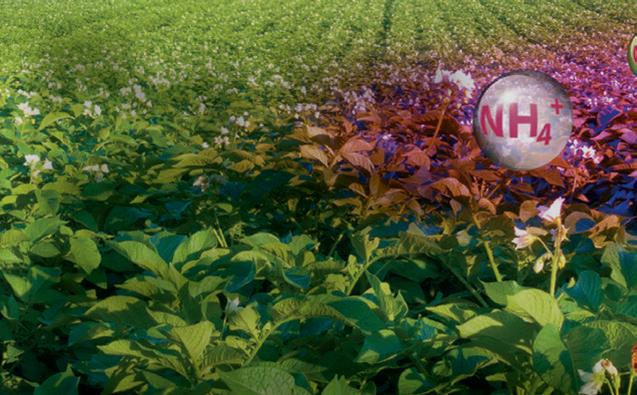


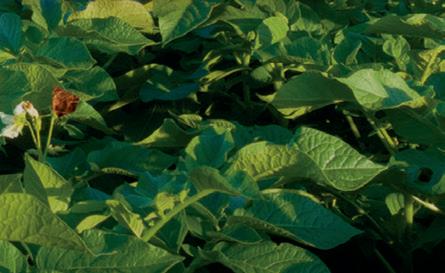


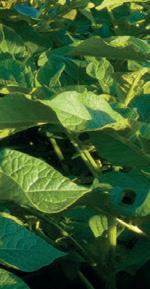

captures nitrogen from the air for use by the crop throughout the growing season. BlueN can be used on a wide range of crops including potatoes.
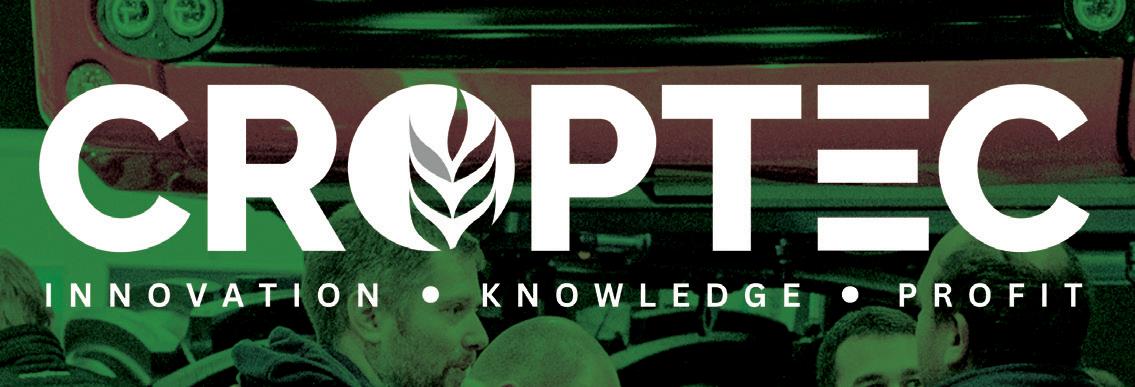



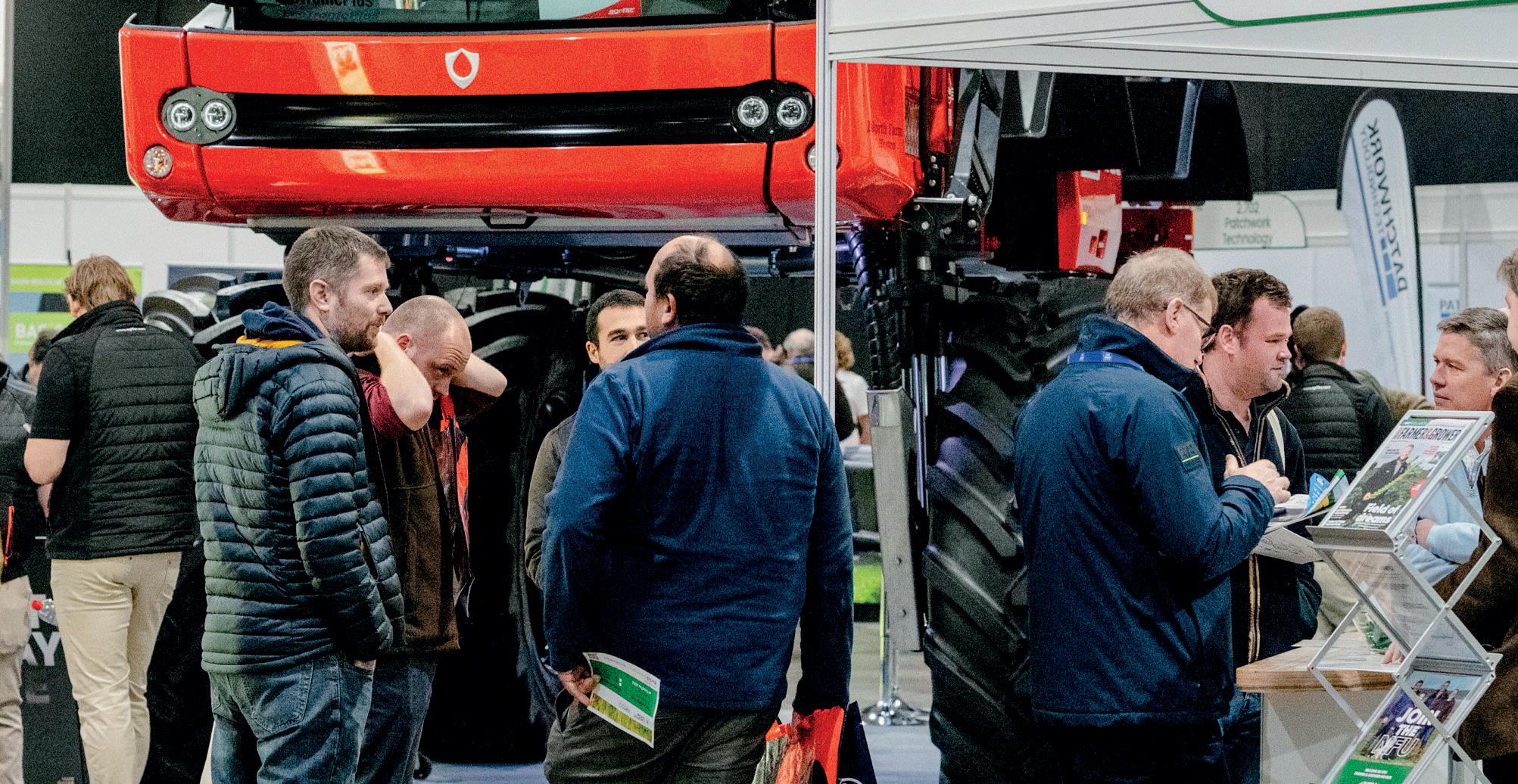
Have you considered exhibiting at The CropTec
Why should you exhibit at CropTec?
• Reach a targeted arable farming audience
• Generate sales and sales leads
• Meet current customers
• Launch a new brand, product or service
• Undertake key market research
Key stats from CropTec 2023
3,000+ attendees 153 exhibitors 6 partners/ sponsors 89% of exhibitors see CropTec as important to their business 80% of attendees meet their objectives
82% 59% 70% 90% of attendees are arable farmers of attendees have over 300 hectares of farming land of attendees are looking to make a purchase in the next 12 months of attendees are decision makers or have an influence




We’ve been exhibiting at CropTec for the last 6 years. It’s always a worthwhile show and we get good quality leads for it.
-Exhibitor Testimonial-
I met lots of suppliers that will help to grow my businesses and there are lots of techniques I will use to enhance my existing methods.
-Visitor Testimonial-
For more details on how to book a stand, please scan the QR code and register your interest:

agrc.im/ugAp0
Powered by:




rReserve champion sells for 9,000gns
THE champion from the pre-sale show led the trade at 10,000gns at the British Charolais Cattle Society sale at Welshpool.
This was January 2023-born Esgob Ugo, a Solwayfirth Peterpan son from G.M. Jones, Bala, which sold to D.A. Jones and Co, Llandidloes.
The reserve champion, from the same home and by the same sire, was December 2022-born Esgob Trebor which sold for 9,000gns to B.A. and O.L.L. Jones, Criccieth.
Second prize winner, October 2022-born Chameran Transformer by Goldies Romeo from Highfields Park Farm, Sussex, sold for 7,500gns to G.W. Miles, Merthyr Tydfil.
Four lots hit the 7,000gns mark. Firstly, from David Thornley, Dise-
worth, was first prize winner, Dooley Tonto, a single Q204X carrier by Rosanna Jupiter which was bought by T.T. Jones and Son, Llanidloes.
Dooley Uber, another Jupiter son from the same home, also sold for 7,000gns, this time to H. Salt, Anglesey.
Bull
Brynffanigl Uhtred, a February2023 bull by Caylers Hustler from R. Roberts, Abergele, made 7,000gns to J. Jones and Co, Bala, and A. and A. Thomas, Bangor, went to the same money for November-2022 born Trefaldwyn Thunder by Oakchurch Maximus from R.A. Owen, Welshpool.
AVERAGES 44 bulls, £5,460 (+£220 on 2023 with an 80 per cent clearance). Auctioneers: Welshpool Livestock Sales.


Pre-sale champion, Esgob Ugo, from G.M. Jones, Bala, which sold for 10,000gns to D.A. Jones and Co, Llandidloes.
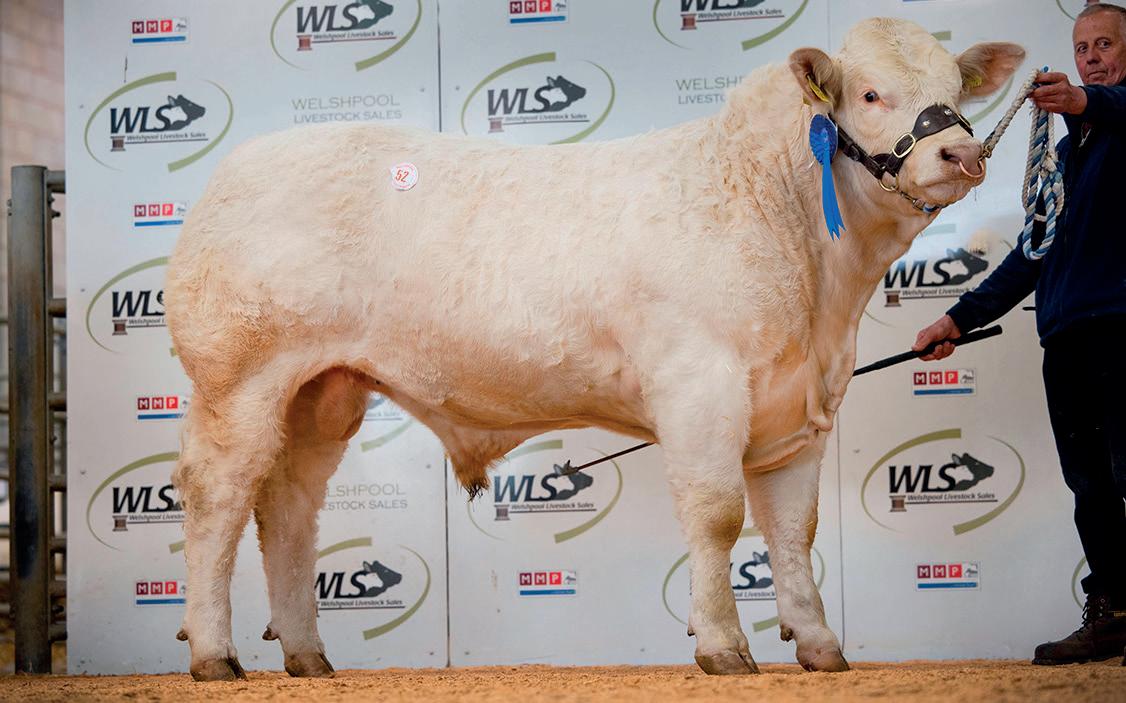
THE Blue Wednesday sale of British Blues at Skipton topped at 4,400gns for Maidenlands Superman, a May 2022-born son of Almeley Marhez, bred from the natural calving Maidenlands Holly from Dean Saunders, Ulverston. The buyer was Henry Dixon, Haverfordwest.
Next, at 4,300gns, was Valley Pacha, an October 2020-born bull by Tweeddale Ironman from Richard Carruthers, Brampton, which was knocked down to the Dean Partnership, Selby.
Stewart and Joel Gill, Dacre, sold third prize winner, Hallfield Sowers by Greystone Noveltee, for 3,800gns to D. and J.D. Beadle and Son, Staindrop.
Also making 3,800gns was JRJ Stormzy, a Crowell Fendt son consigned by Paul Johnson, Torrington, which went to J.G. Bamforth and Sons, Kirklees.
Local breeder John Stephenson sold Bordley Superman, a June 2022born son of Topside Maverick for 3,600gns to I.D. Brown, Richmond.
The Gills headed the female prices at 3,000gns with their first prize senior heifer, Hallfield Sophie, by Sandyvale Jagerbomb and in-calf to Hallfield Mojo, which sold to Bill Stephens, Turriff, Aberdeenshire.
They also had the overall and female champion, Hallfield Tia, an April
2023-born daughter of Hallfield Puma, which went on to sell for 2,400gns to Daniel Thackray, Fewston, who also took home two further Hallfield maiden heifers at 2,400gns and 1,800gns.
Also making 2,400gns was another red rosette-winning maiden heifer, Hallfield Sienna, again by Puma, which sold to Mike Thuey, Easingwold, while the runner-up in the same show class, Hallfield Sunflower, by Hallfield Otto, made 2,500gns to D. Walbank, Oakworth.
AVERAGES
Bulls, £3,465; heifers, £2,387. Auctioneers: CCM.
AT Thirsk’s spring primestock show and sale the judge, Charles Ashbridge, of Taste Tradition, Hutton Conyers, awarded the spring lamb championship to 42kg Beltex cross Suffolk lambs from Dan Stainthrope, Mickelby, which sold for
£247.50 (589p/kg) to Andrew Atkinson, Harrogate.
The cattle championship was won by Ian Bowe and Lee Swann, Gatenby, with a 559kg British Blue heifer which sold for 372p/kg (£2,072) to R. Pearson and Son, Bradford. Frank and Ann Jackson, Whitby, had the champion pigs, which were a pair of 107kg gilts. They went on to sell for 260p/kg (£278/head) to the judge.
Auctioneers: Thirsk Farmers Auction Mart.
THE youngstock dispersal of pedigree Holstein Friesian heifers from the Robanne herd on behalf of R. and A. Jolleys, Cabus, at Brockholes Arms saw heifers due to calve in mid-summer in strongest demand, regularly selling between £1,600 and £1,750. The sale topped at £1,820 for Robanne Chase Sherbet, followed by £1,780 for Robanne Santos Imperial.
Recently served heifers due late autumn sold in the £1,300 region. Bulling heifers sold to a top of £1,220 twice. Maiden heifers sold to £1,120 for nine-month-old Robanne Donte Cassie and £1,120 for seven-month-old Robanne Chase Minto. The calves and weanlings sold to £820 for six-monthold Robanne Chase Christmas.
AVERAGES
In-calf heifers, £1,485; served heifers, £980; bulling heifers, £921; maiden heifers under 12 months old, £782. Auctioneers: Brockholes Arms Auction Mart.
rSecond top price was 6,000gns
KILLIWORGIE North Star 22 (P), a September 2022-born bull from Steve and Gill Gummow, Newquay, sold for 7,500gns to top the Simmental sale at Worcester.
The heterozygous polled bull by Curaheen Gunshot (P) out of the Killiworgie Emperor daughter, Killiworgie Elderflowers Ivy EX92 – which had been second in the show to the champion – sold to C.M. Mercer,
Bowley Court Farms, Leominster.
The same buyer then paid 6,000gns for the October 2022-born heterozygous polled bull Bosahan Nankervis 22 (P) by Kinclaven Infusion 17 (P), from John and Bridget Olds, Falmouth. Its stablemate, October 2022-born Bosahan Nightfall 22, another by Kinclaven Infusion 17 (P), made 5,000gns to D.W. Price, Presteinge.
Selling for 4,000gns was November 2022-born Beanhill Nightrider 22 from R.J. and B.E. Kimber, Chippenham. By the AI sire Ballinalare Farm Galaxy, it sold to Top
THERE were more than 900 store cattle on offer at Kirkby Stephen’s May Day show and sale which topped at £2,450. This was for the reserve champion, a 13-month-old British Blue cross heifer from W.A. and G.R. Sedgley, Barbon, which was bought by the judge, Mr Wynne, Snitterton.
The overall championship went to a 10-month-old Broadhead Rolly-sired Limousin cross heifer, also consigned by Messrs Sedgley, which went on to sell for £1,850 to the judge.
Messrs Brass, Soulby, sold their second prize British Blue cross heifer for £2,350 to Messrs Grainger, Wigton. Messrs Dixon, Dent, sold Limousin cross heifers to D. Barker, Scarborough, for £2,105. Messrs Sowerby,
Ormside, sold Limousin cross heifers for £2,100 to Messrs Barnett, Shap, and 14-month-old Limousin cross steers to £1,865. They also sold a pair of 12-month-old Limousin cross steers at £1,845/head.
Aberdeen-Angus steers topped at £1,830 for a 15-month-old steer from Messrs Hodgson, Soulby. Charolais cross heifers sold to £1,800 for Messrs Atkinson, Bleatarn. A pen of four Fleckvieh steers sold to £1,405 for Messrs Chippendale, Kirkby Stephen, who also topped the black and whites at £1,375.
Steers, £1,335.30 (+£52.29 on 2023); heifers, £1,303.99 (+£26.04).
Auctioneers: Harrison and Hetherington.
May 4. NEILSTON, AgriculturalShowSheepdogTrials, 8amstart,LandsofHolehouse,Neilston,G783LE,only twodogspermittedperhandler,£5entryfeeperdog, first60paidentriesaccepted,entriesmadeby contactingthesecretaryonsecretary@neilstonshow. co.ukorJemmaReid,BurnhouseFarm,Waterfoot Road,NewtonMearns,G775RU. BUTTERTON MOOR, open,9amstart,£10pre-entrytoStevenAllen,tel: 07805903665,postcode:ST137TF.
May 5. MID SHIRES SHEEPDOG SOCIETY, theJohn ThomasOpenMemorialTrial,EastcoteHallFarm, Solihull,B920JA,includestrophyforhighest-placed qualifyingdogwhichhasnotwonanopentrial,top10 dogsfromSundaytrialandtopfivedogsfromMonday
TREIALON CWN DEFAID LLANGADOG
SHEEP DOG TRIALS , Llangadog, final, 1, Kevin Evans, Brynmoel Jet, 7; 2, Dewi Jenkins, Meg, 19; 3, David Howells Wyverne Jet, 20; 4, Angie Driscoll, Kinloch Carlos, 47.

Killiworgie North Star 22 (P), from Steve and Gill Gummow, Newquay, sold for 7,500gns to C.M. Mercer, Bowley Court Farms, Leominster.
Farm, Aston Somerville, Worcester.
Females sold to 2,900gns for the champion, Midhope Melinda, an October 2021-born heifer by Denizes Kingston 19, out of the Woodhall Everhart daughter, Midhope Kitty, and incalf to Corskie Nomb, from W.J. Hollingsworth, Sheffield. The buyer was S. and D. Shapland, Barnstaple.
The reserve female champion, Newton House Majesty, a November 2022-born heifer by Lissadell Los Angeles, sold for 2,800gns to the
judge, Wayne Davies, Newtown.
The draft of females from the Dinton herd of S.V. Francis, Warminster, Wiltshire, topped at 2,600gns for five-year-old Dinton Kiwi 11VG 88 by Coose Gambler (P) which sold with its fourth calf at foot, a heifer, to R.G. Elliott and Son, Brockhall, Northants.
AVERAGES
5 bulls, £5,250 (+£551 on 2023); 7 females, £2,640; 9 Dinton females, £1,703. Auctioneers: McCartneys.
THE senior and reserve overall champion, Seawell Selector, topped the sale of Salers at Welshpool at 4,500gns. The March 2022-born son of Omarsy out of Seawell Kama, consigned by P.M. and S.M. Donger, Towcester, was knocked down to G.J. Williams, Glasbury. Second prize winner and reserve senior champion, Gentons Solardo, a May 2022-born bull by Gentons Pablo Polled from Bertand Facon, Banbury, sold for 3,600gns to D.A. Williams, Capel Isaac. Another second prize winner from Messrs Facon was Gentons San Francisco, a January 2022born bull by Murphy, which sold to P.J.
Carrington, Ashbourne, for 3,500gns.
The junior and overall champion was March 2023-born Preenbank Toro by Cleuchhead Pedro from Fred Robinson, Church Stretton. It sold for 2,900gns to A.J. and J.M. Abberley, Llandrindod Wells.
Leading the pedigree female trade at 3,100gns was March 2022-born Preenbank Snowdrop, with a heifer calf at foot, from Messrs Robinson, which sold to A.J. and J.A. Powell, Knighton.
AVERAGES
4 bulls, £3,806; 15 pedigree females, £1,710. Auctioneers: Welshpool Livestock Sales.
morning trial to qualify for double gather on Monday afternoon, dogs can run on both days but only one dog/ handler can qualify, pre-entry required, entries open April 3, max three dogs per handler, 8am start, contact Gill Burbidge, tel: 07950 738 732.
May 6. WENNINGSIDE OPENS, Wenningsidefarm, Keasden,LA28ET,pre-enterfirst50dogs,topfive placedenteredintoadoublegatheratNorberonMay10 intheafternoon,twodogsperhandler,£10perdog,preentrytoHannahTaylor,tel:07375057621. MID SHIRES SHEEPDOG SOCIETY, theJohnThomasOpenMemorial Trial,EastcoteHallFarm,Solihull,B920JA,top10dogs fromdaytrialandtopfivedogsfromMondaymorning trialwhichwillberestrictedto30dogs,doublegather finalofthese15dogstoberuninafternoon.
May 8. WENNINGSIDE, open trial, Wenningside Farm, Keasden, LA2 8ET, pre-enter first 50 dogs, top five places entered into a double gather at Norber on May 10 in the afternoon, two dogs per handler, £10 per dog, pre-entry to Hannah Taylor, tel: 07375 057 621.
May 10. WENNINGSIDE, Norber, Austwick, LA2 8DJ, open trial, 30 dogs (followed by double gather), two dogs per handler, £10 per dog, top five dogs placed each day on May 6, 8 and 10 to be entered into double gather in the afternoon, pre-entry to Hannah Taylor, tel: 07375 057 621.
May 11 and 12. AVON VALLEY FARM, AMandPM sessionsbythekindpermissionofFrankandDee Hodgkin,LE176DH,What3Words:Foster.Vanish. Originals,30dogspersession,limitoffourdogsper handlerpersession,thesamedogscanrunineach session,£8perrun,pre-entrytoCaileigh,tel:07860716 467,entriesareonlyacceptedonreceiptofpayment,if youchoosetowithdrawyourrunsthenarefundwillbe issuedifwecanfillyourspace. ESCRICK PARK ESTATE TRIALS, EstateOffice,EscrickParkEstate, Escrick,York,YO196EA,enteronthefield,9.30amstart, nolimittothenumberofdogsyoumayenterbutweask ifyouenterthreeormorethatyouenterthem throughouttheday,contactJohnAtkinson,tel:07850 710837. TRETHERN TRIAL, classes:opendriving, Trethern,Delabole,PL339DA,offtheB3314near Delabolebythewindfarm,What3Words:Local.earth. replayed,8amstart,eighttrialsovertheweekend withtwodifferenttrialfields,bothwithmorningand afternoontrials,handlerscanonlybookinonedogper trial,entriescloseMay7,contactsecretaryJane Summers,tel:07835926009,janesummers1@live.co. uk,orLittleHurden,Altarnum,Launceston,PL157SN. May 11. YORKSHIRE SDS ANNUAL OPEN TRIAL WITH CHAMPIONSHIP, venuetobeconfirmed, enquiriestoC.Mellin,tel:07891871298,7amstart,limit
fortwodogs(onetobebookedinby11amandtakethe nextavailablerun),totallimit75dogs.
May 12. SPRINGHILL OPEN TRIAL, heldat Coldingham,TD145TX,8amstart,first60entriesto JohnRobinson,tel:07903936799.
May 4. RHOSGOCH, NorthWalesSheepDogSociety AffiliatedSocietiesTrials,opentrialsonly,Rhosgoch, LL669AA,8amstart,contact07703483863.
May 4 and 5. ERWOOD (SWSDTA), Sunday,localonly within14mileradius,contactAnnaProthero,tel:07795 178451oremailanna_prothero@hotmail.com,pre-entry required. NANT-Y-MOEL (SWSDTA), Pontardawe, contactAnnaProthero,tel:07795178451oremailanna_ prothero@hotmail.com.
May 6. CWMDU (SWSDTA), Crickhowell,Powys, contactAnnaProthero,tel:07795178451oremailanna_ prothero@hotmail.com. May 12. NORTH WALES SHEEP DOG SOCIETY AFFILIATED SOCIETIES TRIALS, opentrial,Bala, LL237NP,contact07949957670,8amstart.


















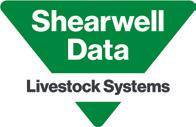



In this careers special, we look at building longevity and how we can keep people in the countryside
If there is something this careers special highlights, it is that with the right support and the right mindset, a long and fulfilling career can be found in farming. Those coming into the industry have different priorities. On the flip side, those who have carved out a career for themselves can offer their insights into what opportunities there are in the sector, and what we as an industry might need to look at to attract new people.
On pages 36-37 we hear from Steven Baxter, a Lancashire vet who has recently celebrated 40 years in the business.
He has worked his way up, creating vibrant partnerships and establishing himself as a key part of the farming community. But if the veterinarian sector is to thrive, offering a work-life balance is crucial.
Something else which stands out is the idea of changing your perspective. Tracey Roan, from well-known

Scottish dairy business Roan’s Dairy, spoke to hundreds of children at a careers event and showcased that your career path does not have to be linear. It can take a while to find your feet and that is okay.
Oli Pilbeam is the perfect example of this too, on p38-39. Working between roles as an agronomist and a consultant is ideal for him. But to allow people to thrive, whether just starting out or wanting to push their careers to the next step, financial and

social support is vital. Whatever you are looking for though, farming will have a place for you and can offer you a job for life.




AT its recent National Farm Groups Support conference, supported by Aldi UK, the Royal Countryside Fund (RCF) hosted a special discussion focused on the next generation.
Its research from its 2021/22 research paper, titled ‘Opening the gate’, highlighted some significant findings – some of which it hopes to change through its various farm support and resilience programmes.
It found that 3 per cent of farmers in the UK at the time were under 35, and 70 per cent of respondents said they thought it would be difficult or near impossible for people to get into the industry.
Common issues included access to land, finance and networks.
Katherine Williams, of the Exmoor Hill Farming Network, works with the RCF and has established the network’s next generation groups.
Katherine says these meetings give Young Farmers an opportunity to freely ask questions; questions they sometimes feel they cannot ask in front of more established farmers.
She also highlighted the age barrier – what does a next generation farmer really mean?
She says: “Next generation for us means under 40. The 30-40 age bracket is really important. They are often coming back to the farm, making the decisions or going into partnerships.”
The work-life balance in farming is also going to be key in ensuring farming has a workforce in the future.
Gillian Reid, of Rural Support, says there is a labour shortage. For example, dairy farmers do not have access to relief milkers, so to get a few days away is near impossible and ‘that is what young people want’.
The other question posed was whether the role of a farmer was seen differently, given new policies and changes to the agricultural landscape. And how can people coming in be better supported?
Key elements discussed included recognising that the next generation wanted to do things differently to those before them, offering better quality opportunities to tenants and ensuring financial stability so the next generation does not have to use off-farm jobs to keep farming businesses going.

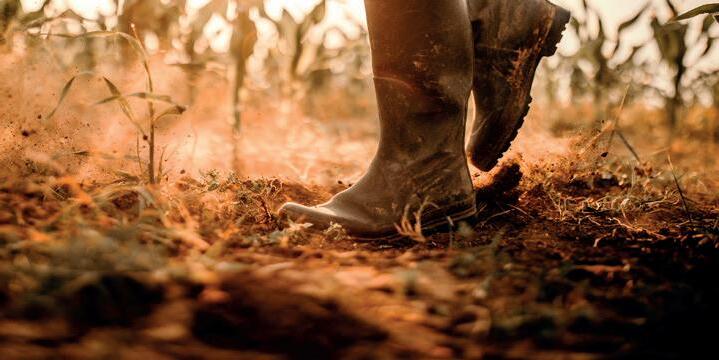

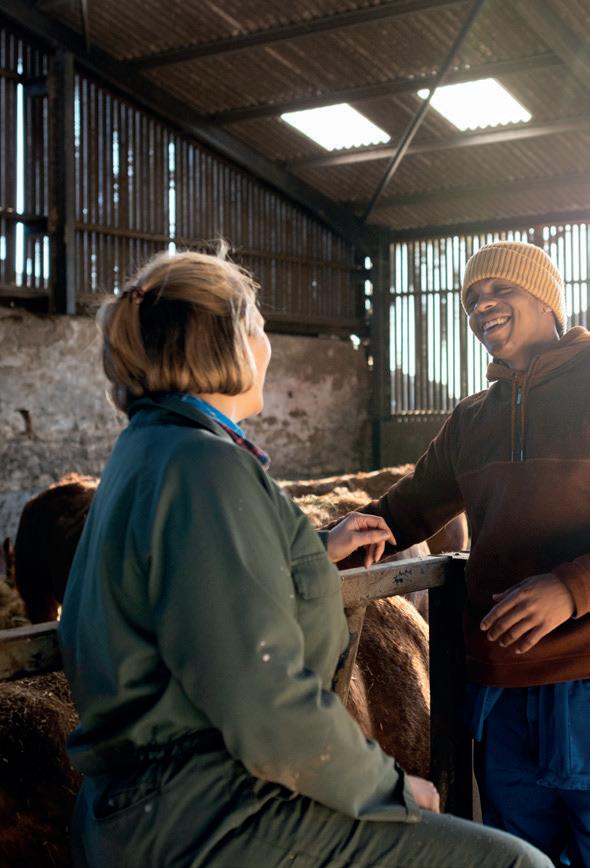
Apprenticeships offer a world of benefits, providing hands-on experience and industry-relevant skills that are invaluable in this vital sector.
• Individuals can earn while they learn, gaining practical skills with educational advancement
• Apprenticeships help cultivate a dedicated and skilled workforce, enhancing productivity on the farm
• This contributes to the innovation of the agriculture industry and ensures the transfer of knowledge for the future.
Find out more in our Agriculture Apprenticeship toolkit, simply scan the QR code to download.
Vet Steven Baxter has dedicated his life to the sector and has cherished being a key part of his local farming community. Amy Wilkinson finds out more.
Vets are an integral part of farming, with huge amounts of trust being built between vet and farmer.
These relationships can withstand the test of time, sometimes lasting decades.
This is certainly true for Steven Baxter and his clients at Ribble Vets in Preston, Lancashire.
But after more than 40 years in the business, Steven is now hanging up his stethoscope.
Born and raised on a small dairy farm near Morecambe, Steven’s father urged him to go and get a regular nine-to-five job with weekends off, but it was not meant to be.
Determined from a young age, at 14 he decided he wanted to become a farm vet after losing a cow to milk fever.
Knowledge
He wanted to gain the knowledge to help prevent this from happening again.
He qualified in 1981 after four years of study at Liverpool University alongside Television’s The Yorkshire Vet, Peter Wright.
At the time, veterinary courses were massively oversubscribed due to the popularity of the James Herriot stories, with 1,400 applicants for only 45 places the year the two applied.
■ What key skill do you need?: It is all about being able to communicate and show empathy with clients, both pet owners and farmers.
Steven says it is key to be able to understand the importance of the animal being treated to that individual client, from an emotional or economic point of view, as both can factor into what treatment may occur.
■ How can we encourage more people in?: Steven believes that there is no problem with
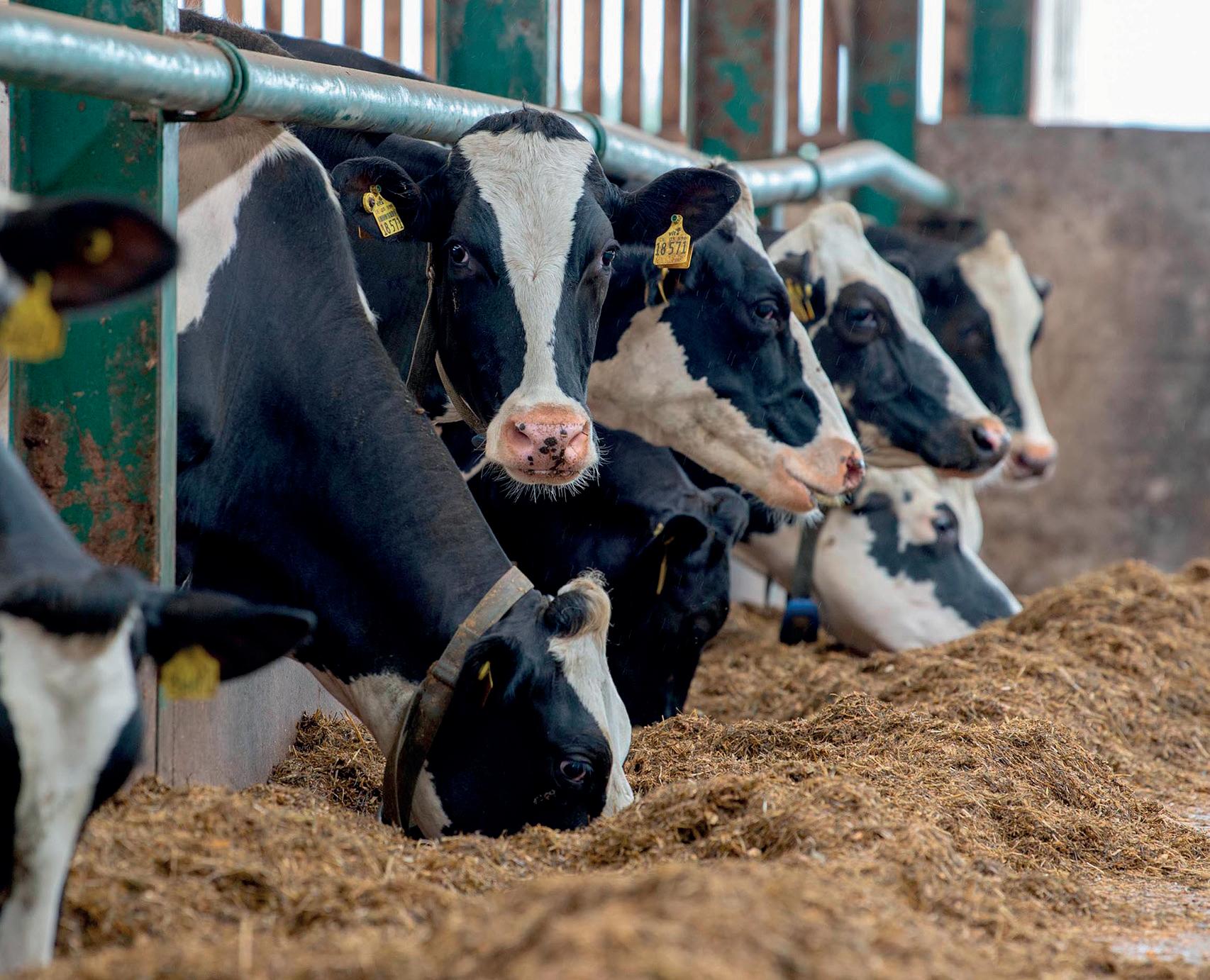
Soon after qualifying, Steven joined Andrew White’s veterinary practice in Preston, the organisa-
encouraging more people into the industry.
He says: “There are lots of talented people in the industry already, but it is keeping them in it. To do so, the work/life balance needs to drastically improve.”
■ Favourite part of the job?:
Steven says dealing with farmers and making the connection with them and building up the working relationship is what he enjoys the most.
He has been the presiding vet on some farms throughout his entire career.
tion he would spend his whole career with. He became an instrumental part building it into the business it is today.
To begin with they were just a two-vet practice covering a vast farming area.
Steven says: “We travelled around 25-30,000 miles a year mainly working on sheep and cattle.
“As the business grew, we began to collect more small animal clients and we slowly became a mixed practice.”
Over that time period, the practice, which has always been proudly independent, has grown and so has his role.
In 1993 Steven became a partner in the company, which was re-
Losing a
14

named White and Baxter. He went on to become a senior partner in 2005, forming Baxter and Marwood and, a few years later, with the addition of Robin Brown, it became Baxter, Marwood and Brown, finally being known as Ribble Vets, a limited company, in 2012.
Steven says the proudest moment of his career was when they converted an old police station on Penwortham High Street into what is now a state-of-the-art, purpose-built practice that opened in December 2015.
It received hospital status from the Royal College of Veterinary Surgeons.
The new practice includes a large animal ward and also hosts many farmer meetings in its conference rooms – including the
We have been very lucky to have Steven [as a vet]. He has never let us down, even turning up to an awful calving at 3am on Boxing Day morning
very competitive Christmas quiz that attracts 50-60 farmers every year. The growth of the practice cannot be underestimated.
Steven says: “When I first became a partner in 1993 there were only four or five staff. Compare this to the modern practice with the additional two branches, which now employs 15 vets, 20 nurses and 20 reception and admin staff.”

The practice, and Steven in particular, has always remained very supportive of its farming roots and loyal clientele. The support is not one sided either.
Dairy farmer David Riding, of Wrightington, Lancashire, says: “We have been very lucky to have Steven [as a vet] and he has continued the farm veterinary practice when many have shut their doors to us.
“He has never let us down, even turning up to an awful calving at 3am on Boxing Day morning.
“I would like to say thanks for his years of amazing service.”
This sentiment is continued by Joey Drinkall, a beef and sheep farmer from Chorley, Lancashire.
He says: “Steven is no-nonsense and would tell you straight, I have always liked that about him.”
Although he may have been in the wrong county to make a hit TV show, ‘Steven Baxter the Lancashire vet’ does have a ring to it.
But it is clear he will be greatly missed in his retirement by his farming clients.



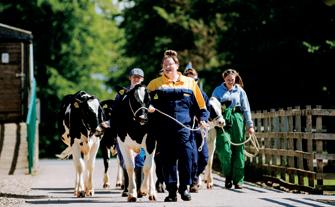
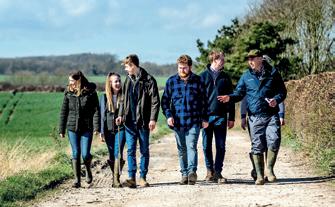








There is no such thing as a quiet day for Oli Pilbeam. He splits his time between the farm, environment advisers CLM and independent agronomists Chichester Crop Consultancy, along with helping run the East Sussex family farm.
He says: “Agronomy really puts you at the coalface; you are making decisions on the ground, often quickly, which have an immediate impact on a business’ bottom line.
“A consultancy role, meanwhile, gives you the chance to think about the big-picture aspects which affect an entire business.”
Oli began this twin-track career last year, following a 10-year spell with Velcourt, having joined its training programme after leaving Harper Adams University with an agriculture with mechanisation degree.

A career in agronomy and business consultancy offers the perfect mix for Oli Pilbeam. Tim Relf reports.
The training programme was invaluable and, within six months, he had progressed to managing a farm.
He says: “That was exciting, but also a challenge. I knew I would be judged by my results, and it is quite right that I was, but it was a bit
daunting too. I was lucky that an opportunity became available. Managing a significant-sized mixed business at a young age was a sink or swim moment and it meant I needed to work even harder to get up to speed.”
He soon began studying for his FACTS
and BASIS qualifications, and he says that passing these were another key milestone, because seed, fertilisers and sprays are among the biggest costs for arable enterprises. He says: “You need to properly understand them if you are going to control them.”
Agronomists must also have good communication skills and empathy too, plus a practical understanding of what is happening on-farm.



Being a consultant makes me a better agronomist and being an agronomist makes me a better consultant OLI PILBEAM
He says: “Ultimately, you have to know that any advice you give is feasible and be able to communicate your recommendations clearly to farmers.”
While still in his early 20s, Oli landed his first management role at a Velcourt dairy, beef, sheep and arable farm, and a few years later was promoted to manage what at the time was the firm’s largest arable contract farming business.
On both occasions, he found himself leading a team.
He says: “Some of the guys working there were 20-plus years older than me, so I had a team with a lot more experience than I did to influence and keep motivated.
“My approach was simply to get stuck in. If a job needed doing –whether it was a nice job or a horrible one, regardless of whether it was 1pm or 1am – I would do it with the team. If you show you are willing to do any-

thing and can demonstrate you are capable of doing it well, that goes a long way.”
It was also vital to harness the skills and knowledge of the staff, he says.
He adds: “If someone has been on a farm for decades, they understand every nook and cranny of that farm. It is vital to listen to them, take it all in, then give clear decisions to ensure everyone is pulling in the same direction.”
Nowadays, the function of an agronomist is changing, he says, needing to find alternative ways to farm more sustainably. And he adds the answer is not always in the way we used to think it was.
He says: “There are not as many active ingredients as there were, and the appetite to use chemicals has lessened anyway, so we need to think outside the box.
“It is about thinking about the whole business and, indeed, the effects our decisions might have beyond the business.”
Oli’s current role is a juggling act, but he enjoys the environmental
side – one of the reasons he joined CLM was due to its involvement in helping commercial farm businesses incorporate environmental schemes and projects.
He says: “My role is to offer practical advice to link all these aspects to increase business profitability and longevity. That feels like the future to me.
“A hot topic with a lot of arable farmers currently is how to use the Sustainable Farming Incentive to effectively replace unprofitable break crops, such as oilseed rape and winter beans.
“In some cases, this can free up infrastructure, create diversification openings or provide opportunities to reduce running costs and working capital.
“Farmers need to find new ways to replace their disappearing Basic Payment Scheme revenue, plus take some of the risk out of their businesses. Diversification can be an option, and biodiversity
net gain is potentially another big income stream.”
The fifth generation to have grown up on the family farm, Oli always knew his career would be in agriculture, having helped on-farm since being a child.
He says: “My first proper harvest job was when I was 14. My father always encouraged my two brothers and I to spend time away, either in agriculture or in an unrelated industry, to bring some fresh ideas back to the farm.
“The [next generation] is interested in environmentally-friendly farming and it is an exciting time to be coming into the industry. Being a farmer is such a varied role these days, but you need to be comfortable – and excited by – change.
“I like having the two roles. It is exciting joining the dots, being able to influence farm businesses’ performance in the field and in the office. Being a consultant makes me a better agronomist and being an agronomist makes me a better consultant,” he adds.




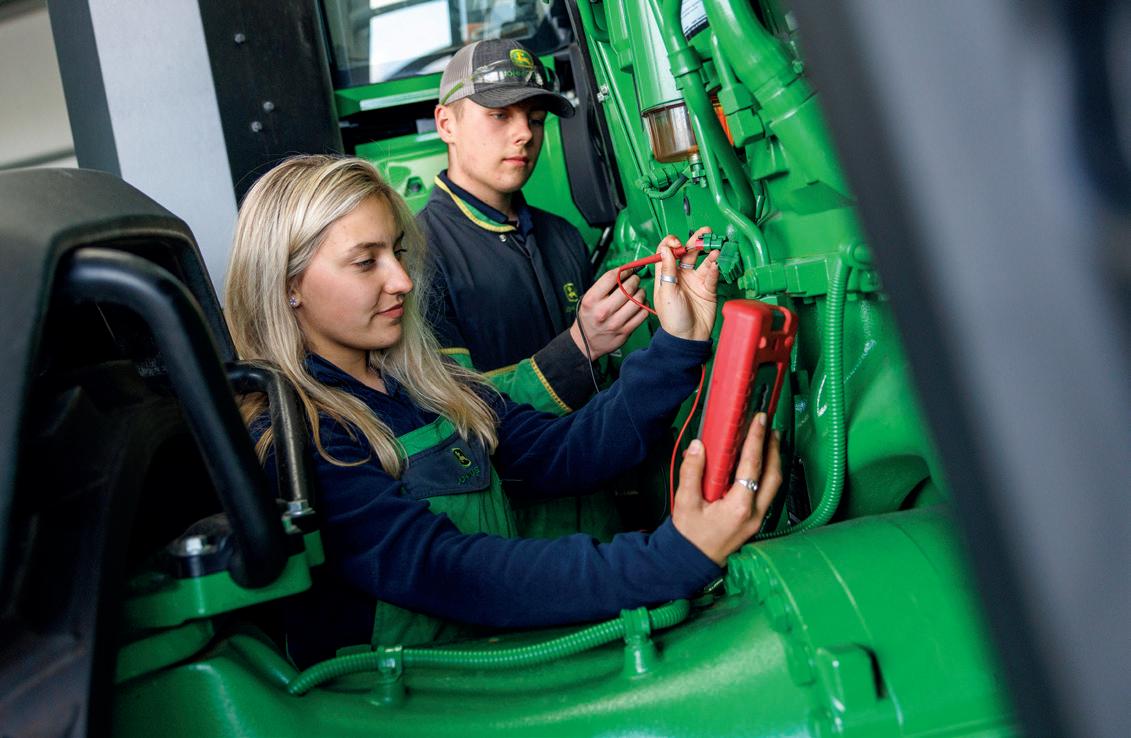
A new event showcased careers in the dairy sector. Farmers Guardian reports.
In a first for Harrison and Hetherington auction mart in Carlisle, Digital Dairy Chain launched its new careers event
Think Dairy UK Dairy Careers Expo in conjunction with SRUC.
With a view to expose the next generation to all the possible careers the dairy sector can offer, about 400 secondary schoolchildren from Cumbria and the south and west of Scotland attended the event, where they met exhibitors such as Muller, AHDB and First Milk to find out about opportunities ranging from apprenticeship schemes to haulage or foot-trimming.
Laura Miller, head of strategic projects and communications at Harrison and Hetherington, believes it was a positive day and that the youngsters were all engaged.
She says: “They got to see all the different roles – everything about being


Schoolchildren who attended the event took part in a mock live auction with auctioneer Glyn Lucas.
a dairy farmer, because it is more than just that. It is about changing the narrative. Farming is a business, and you have to be on top of your business plan.”
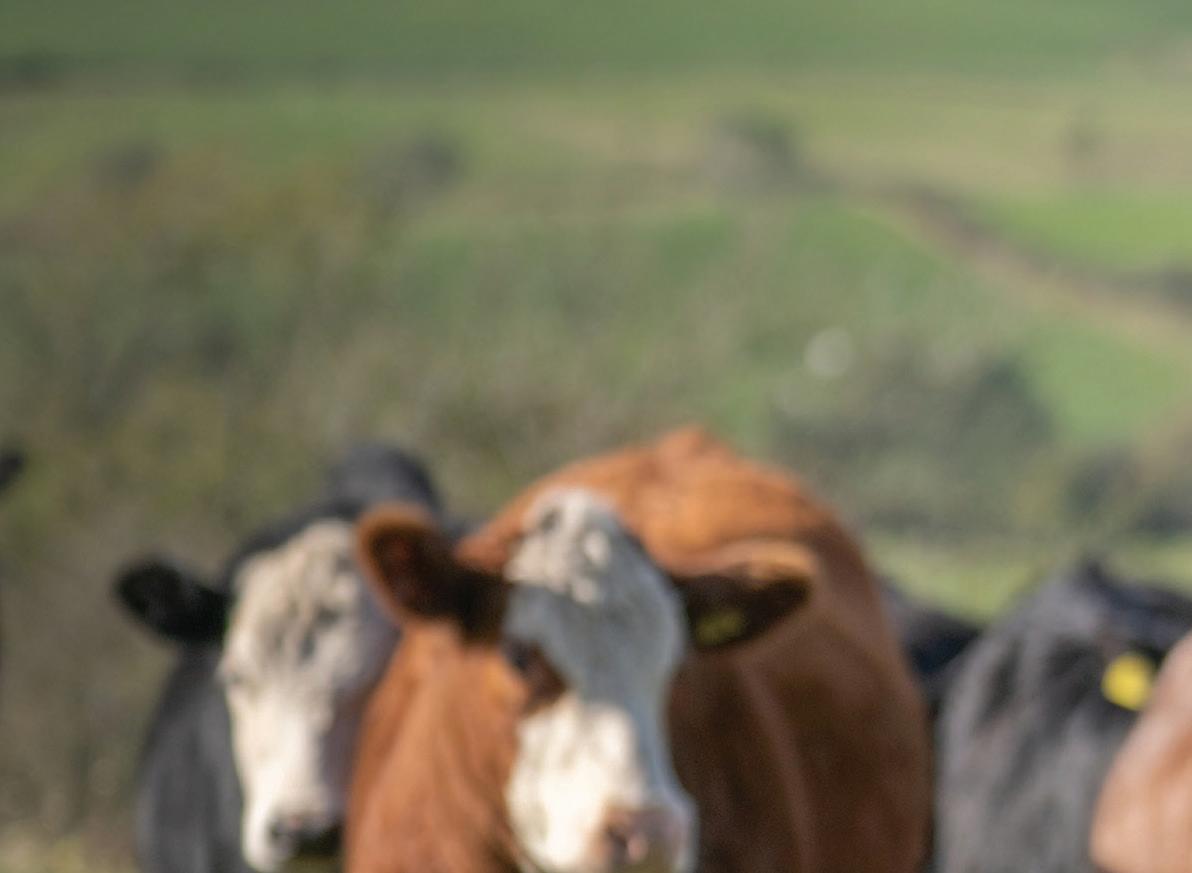
With skills sessions, practical lessons and presentations, the highlight of the day was where the children entered the auction ring to take part in a mock live sale. They were given
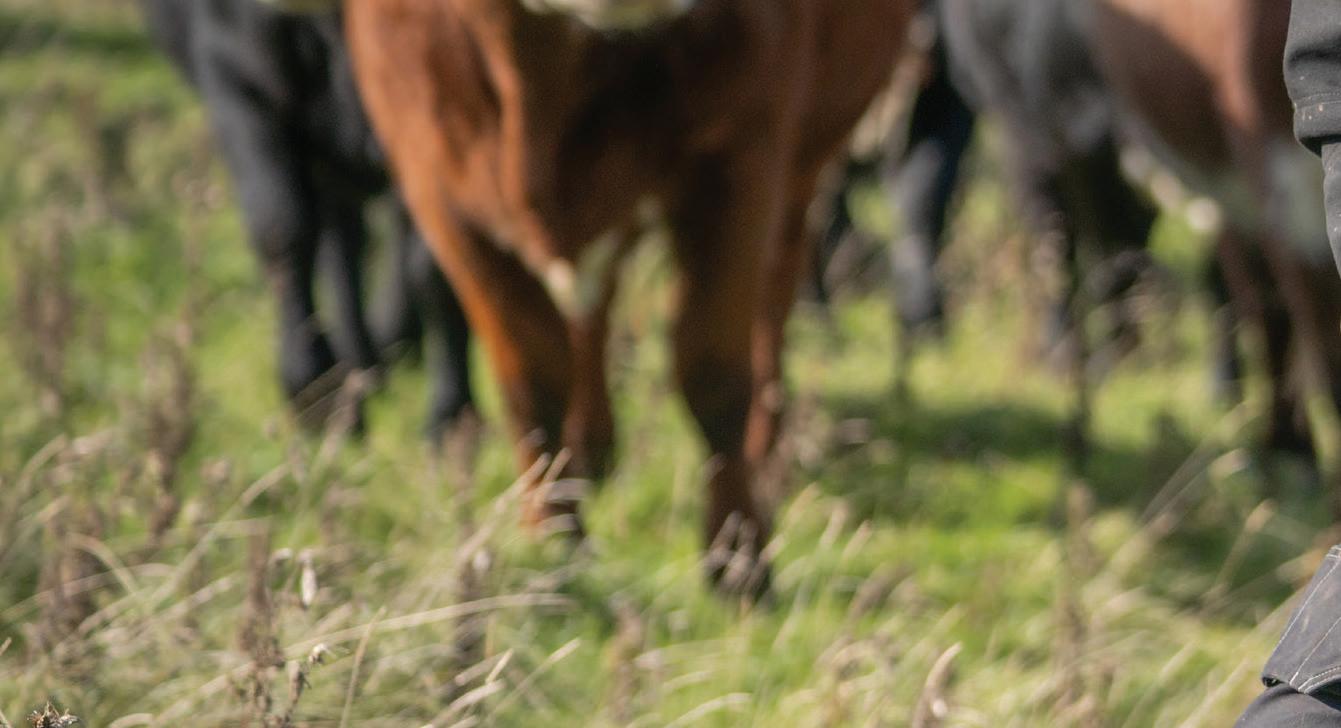
The Agriculture and Horticulture Development Board is recruiting for sector council members in:
• Beef & Lamb
• Cereals & Oilseeds
• Dairy
• Pork
plastic money and could bid on a cow, with the sale headed up by wellknown and well-respected auctioneer Glyn Lucas.
Glyn also gave a presentation to provide an insight into his own career, as did Tracey Roan, of Roan’s Dairy.
Tracey highlighted how career paths are not always linear and how, having worked her way through various roles off-farm, her career journey has been somewhat ‘chaotic’. She expressed, though, that this is okay, and encouraged the children to have enthusiasm, knock on doors and have fire in your belly.
Glyn’s passion for cattle has taken him all over the world, but his main piece of advice was to do something you love and find a job that inspires you every day.

Working with AHDB, you won’t just be helping our farmers produce the food we eat and looking after our environment, you’ll be shaping the future of food production and leaving a legacy for the next generation.
Appointments are for three-year terms, starting in November 2024. The role requires a commitment of up to two days per month, including attendance at sector council meetings.
To find out more and to apply for a role, visit the AHDB Careers site: careers.ahdb.org.uk

At the end of 2023, leading parts dealer
Kramp launched its Cultivate a Generation initiative to support those in the industry who are either just starting out in their career or need to invest to progress.
There are seven main categories, which include agricultural engineers, arable farmers, livestock farmers, Young Farmers, contractors employing less than five people, contractors

Visit farmersguardian.com to read more about the seven students who won the Royal Agricultural University grant.

employing more than five people and family support. The £30,000 available across the year is intended to help recipients of the grant invest in essential equipment.
Des Boyd, sales director at Kramp UK, says: “As a large family-owned company, Kramp feels responsible for helping new entrants find their way in agriculture. After all, that is how the business began in the Netherlands more than 70 years ago.
“There are barriers people from
outside the industry have to cross to build their career in agriculture. Some of these are cultural and educational, but there is also frequently a considerable capital outlay to get going.
“That is how we believe Kramp can make a difference. Cultivate a Generation is designed to award winners access to grant funding for workshop equipment. This might be essential tools for new entrants or to help
the productivity of people further into their careers.
“Encouraging people from more diverse backgrounds to enter the industry, combined with supporting the hugely talented individuals already in agriculture, will help us all grow in the future.”
Although the grant is open to all, there is also a special grant for students at the Royal Agricultural University which is supported by Clarkson’s Farm star Kaleb Cooper.

MALACHI FISHER
■ MALACHI Fisher has a military background, with his parents serving in the forces, but his passion for farming began when working on dairy farms in New Zealand while travelling.
This brought him to the Royal Agricultural University, where he is currently in the second year of a degree in agriculture.
“I would love to get into dairy farm management,” says Malachi.
“I have a placement coming up on an arable farm near Banbury. Winning the grant has been amazing, because if I need some extra gear for my placement I can use it for that.”
■ MATTHEW Easton is from White River, Mpumalanga, east of Johannesburg in South Africa.
His family has a forestry enterprise growing eucalyptus trees, with a proportion also growing macadamia nuts and avocados.
After a recommendation from a friend’s father, who had attended the Royal Agricultural University, he decided to study for a degree in agriculture. Matthew’s parents encouraged him to travel for his studies to explore something new.
“I will most likely use the grant to buy equipment for my farm, perhaps some power tools,” says Matthew.
“I am still working it out, but whatever I get will have to be small for me to take it home in my luggage.”
JACK Sowerby lives and works on his family’s dairy farm, milking 180 cows near Appleby-inWestmorland, Cumbria. His family has been on the farm for nearly 21 years, and Jack hopes there will be many more years to come. Working alongside his parents and brother, he hopes the grant can help his family invest in their future.
He says: “The grant would either go towards a new calf shed, as it is something that we have looked at doing for quite a while, or towards
■ HALEEM Tumilty is in his second year of his agriculture degree. Not from a farming background, the experience of the Covid-19 pandemic led him into agriculture; he was shocked by his family’s reliance on the big supermarkets and thought there could be a more sustainable way of living if he learned about food production.
Haleem hopes to start farming himself once he has graduated, and the grant will help him set up.
Growing up, Haleem says agriculture was not a profession that many people considered.
“I was saying to my careers adviser that I did not want to be stuck behind a desk and that I wanted to do something positive,” says Haleem.
“So, she mentioned farming. I had never really thought about it, but I did some research and found the Royal Agricultural University.
“I applied, but I did not expect to have the grades to get in. When I got a place, it was a nice surprise.
“At the start, I was a little nervous. Other than the very basics, I had no knowledge about farming, and the terminology was all strange to me. My confidence grew after my first year, and I started to think about what I wanted to do in the farming industry.
“I was surprised when I got my work placement. They were happy to take me on, knowing I had no practical experience, and told me that the only way I would get experience was by starting somewhere.”
a robotic milker, which is something we are really interested in to help grow the business.”
The grant would either go towards a new calf shed or a robotic milker
JACK SOWERBY
CAMERON Merryfield received the first agricultural engineer grant, having worked for the John Deere dealership Mason Kings, which covers the South West, since 2012. He began on the John Deere AgTech apprenticeship, and since graduating he has established his career as a skilled agricultural engineer. Acquiring workshop equipment is something many young engineers struggle with when they start as apprentices.
“Acquiring tools is a slow burner. It is something you have to keep ticking away at every month when you can spare the money; it is what you have to do to get started,” says Cameron.
“You might go out on a job early on [in your career] and have to get by with a socket set, a spanner and a hammer. I was about five years in
Acquiring tools is something you have to keep ticking away at CAMERON MERRYFIELD
before I could say I had everything I needed to keep me going, and by then, you are talking about £15,000 worth of equipment.”
Cameron plans to spend his grant on axle stands to help with safer working when he is out at a breakdown. Promoting safety for agricultural engineers is something he feels strongly about.



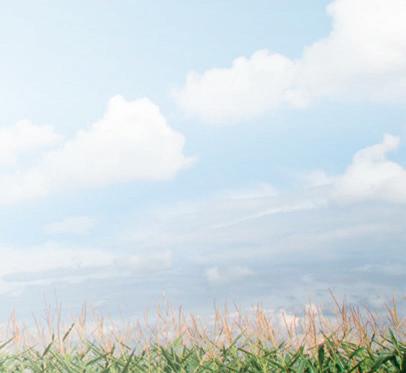

An exciting opportunity has become available for a Manager/Auctioneer at Gisburn Auction Mart
Gisburn is one of the leading Livestock Auction Centres in the North of England, with twice weekly sales of all classes of stock. The successful candidate will be responsible for the day to day running of the market and will be expected to have:
• Experience managing a large and diverse team of staff.
• An excellent knowledge of Health and Safety and experience in managing compliance
• The ability to communicate effectively and report to the Board of Directors
• Experience in credit control
Auction and Rostrum experience, although beneficial, is not essential and a lack of this experience should not deter applicants
Remuneration Package will be dependant upon experience
Interested applicants should contact the Chairman Geoff Eccles on 07966 201345 All applications will be treated in the strictest confidence.

Tortworth Estate, South Gloucestershire.

350 cow pedigree British Friesian herd calving in two blocks, the herd supplied by the Estate owners (part ownership considered). Muller organic milk contract.
Forage based system with approximately 570 acres of organic land available to the dairy, additional organic forage or cereal crops may be available on an annual licence.
Comprehensive facilities including new 24:48 herringbone parlour and single rate cake feeders, cubicles, silage pits and slurry storage.
The contract will operate for a term of 5-10 years by agreement.
The successful applicant to supply all labour and non-fixed equipment for the day to day operation of the dairy.
Substantial, five bedroom farmhouse and three bedroom annex are available for the use of the successful applicant.
Please contact Emma Bradshaw on emma.bradshaw@kiteconsulting.com for further details.
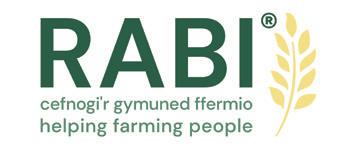

If you want to use your skills and experience to make a real difference to the lives of farming people, consider becoming a RABI Trustee. Please apply via https://rabi.org.uk/about/job-vacancies/
We currently have a wide range of positions available nationwide to include:-
• Autonomous Unit Manager, Mid Devon, 350 cows
• Calf Rearer, Yorkshire, 600 cows
• Relief Herdsperson, West Sussex, 260 cows Relief Herdspersons Nationwide
LKL provides the perfect solution for finding the very best herd carers and managers.
Visit our website for a full list of our current vacancies.
Web: www.lklservices.co.uk Tel: 01722 323546

We are a leading land based College with a 300 hectare mixed farm including arable, sheep, beef and pig enterprises. As an educational institution specialising in supporting the land based industries, the Farm is at the core of our activities.
Annual Salary
£60,712 | 37 hours Per Week
We seek a highly professional business manager to take on the role of Farm Director accountable to the Principal and Board. The role with lead and support the work of the Working Farm Manager and their team. The postholder will have proven people skills and will be able to demonstrate the achievement of high standards in all aspects of business performance and administration. A background of strong financial management and control, allied to technical knowledge and experience, will be essential. The role with lead and support the work of the Working Farm Manager and their team.
Salary Per Annum
£26,367- £27,748 | 37 Hours Per Week
We are looking to employ a graduate with a range of skills and knowledge in agriculture to become a lecturer at Bishop Burton College. You will work in a department with excellent facilities, developing teaching and training skills while studying for a teaching qualification which will be funded and supported by the College.
Annual Salary
£46,076 | Full-Time
We are seeking an experienced, forward-thinking manager for its 300 hectare mixed farm, supporting students to develop their higher level technical skills. The new post-holder will be well-supported and this opportunity would suit someone who wishes to fast-track their farm management career.
If you are interested in this role please visit bishopburton.ac.uk, scroll to the bottom and select ‘Work for Us’.
If you have any queries please contact the HR Team at human.resources@bishopburton.ac.uk or telephone 01964 553167





in the Northwich, Cheshire area. 12 years experience. Call April Goodier on 07900 241274









Content
Social Media Executive
Insightful Communications Content Solutions Producer
Marketing
Events Copywriter/PR Manager
Sales
Business Development Executive - Publications
Business Development Manager - Digital Salesforce Administrator
Agriconnect is the largest multi-platform agricultural information business in the UK. Our brands reach deeply into all the major agricultural sectorsarable, dairy, livestock, agricultural machinery, finance, and equipment.
We offer an excellent package including:
• 25 days holiday increasing to 27 after two years
• Hybrid Working (minimum 2 days in the office each week)
• Flexible working hours available
• An extra day off on your birthday
• Matched pension contribution up to 6%
• Employee assistance programme
• Long service awards and employee of the month
• Employee discount scheme
• Employee referral scheme
• Exceptional career progression. We are ever-evolving, if you work hard and do well - with our help and support there are no limits to your speed of progress
For more details on any of our vacanies, or to apply, please scan the QR code or call on 01772 799500.
Our Brands


Brand new website Visit jobs.farmersguardian.com for the latest job vacancies in agriculture


A fantastic opportunity has arisen for an enthusiastic and conscientious operator to join our small team in North Hampshire. The estate covers around 550ha, of which around 360ha is cropped. We have just started a Higher Tier Countryside Stewardship agreement and also have forestry operations and a shoot.
We are looking for someone who can carry out all the major arable operations. In addition, they will be a key member of the wider estate team, assisting with machinery maintenance and work in the woodland.
THE SUCCESSFUL CANDIDATE WILL HAVE:
· A high level of attention to detail.
· An ability to work autonomously
· A strong awareness of health and safety.
· PA1 and PA2. Telehandler, Chainsaw and PA4s are also desirable, but training will be given.

· The ability to keep complete, accurate, records. In return, we offer a competitive remuneration package with accommodation, opportunities for further training and continuing professional deve opment. The role is available from June 2024.
PLEASE APPLY BY EMAIL SENDING A CV AND COVERING LETTER TO DAVID ULLYOTT AT JOBS@ROUNDWOOD.CO.UK OR CALL 07534 847385 FOR FURTHER DETAILS
Future-proof your farm business, gain insight and exchange knowledge with a FG Farm Futures membership

a year
Farmers Guardian delivered directly to your door every week including full digital access. Plus, check out our brand-new features exclusive to FG Farm Futures members. Included in your membership:











Insight – Quarterly, in-depth, analytical reports into the latest agricultural trends, from diversification, to climate-friendly farming and understanding the latest grants available.
Exchange – A series of digital events focused on learning from real case studies and exchanging knowledge with agricultural thought leaders


Weekly Digest email – From the desk of FG’s editor every Sunday morning, gain insights into how the week’s news impacts your business.
Members’ Lounge – Enjoy an exclusive space for members to network at leading events, such as LAMMA, CropTec and Farm Business Innovation.


































































































Saturday 11th May 2024 at 10:30am
BRIDGEFORD FARM
Bellingham, Hexham, Northumberland, NE48 2HU
On Behalf of Messrs D & I Wallace (Retiring).
The company are delighted to have been instructed to conduct a complete farm stock dispersal sale on behalf of this highly respected North Tyne family farming enterprise which will see a productive commercial breeding sheep flock and a modest field of machinery brought under the hammer. The sale will begin with a catalogue of the 200 head flock of home-bred Texel cross and Mule ewes in young ages and running with their Dutch Texel and Beltex cross March born lambs at foot. Also Texel & Beltex stock rams from Woodhead, Hard Riding, Haggate & Yatesfield. The flock is managed within the ‘Heptavac P’ vaccination system and is farm assured.
Followed by a selection of small tools, livestock requisites, tractor & machinery to include; Zetor Proximo 4wd Tractor with Sigma Fore-end Loader (2010/1300 hrs); Attachments inc. single and double spikes, bucket & grab; Ifor Williams 12ft Livestock Trailer; ATV Sheep & Tipping Trailers; Swaledale Cleated Tyre Snacker; Claas Volto Tedder; 12ft Cattle Hurdles; Calving Gate; 3 Cattle Ring Feeders; Qty Galv. Sheeted Sheep Hurdles; Lambing Hurdles; IAE Shedding Gate; Adopter Gates; 3 Trolley Hay Hecks, Lamb Weigh Crate; 2 Shearing Machines, Cordless Shearing Machine, Double Wool Packing Crate; 17 Sheep Ring Feeders; Sheep Troughs; Gates; ATV Mounted Sprayer; Karcher Pressure Washer; Compressor; Alum. Extn. Ladders; Grinders; Fencing Materials; Small Tools & Livestock Items etc, etc.
Additional Items Strictly by Permission –Contact Chris Armstrong 07808 721957.
PLEASE NOTE – THIS WILL BE A LIVE AUCTION SALE ONLY –NO ONLINE BIDDING
Refreshments & Bar in aid of N.T.H – Loading Facilities Available on Sale Day Only.
ALL LOTS BECOME THE RESPONSIBILITY OF THE PURCHASER AT THE FALL OF THE HAMMER, SHEEP MUST BE REMOVED ON THE DAY OF THE SALE UNLESS BY PRIOR ARRANGEMENT.
Directions – Bridgeford Farm Lies 1 mile South of Bellingham just off the B6320 and the farm entrance will be signposted Please be aware if the weather is inclement 4x4 vehicles are advisable and lorries by arrangement only. Contact the auctioneers for further details. Images of selected lots can be viewed at www.hexhammart.co.uk and on our facebook page.
Tel. 01434 605444. • Mart Offices, Hexham • Tel: 01434 605444 • e-mail info@hexhammart.co.uk • www.hexhammart.co.uk

Telephone: 01824 705000
BALA SHEEPDOG SALE OF - 24 DOGS (22 Working Sheepdogs & 2 Young Dogs) At The Rhiwlas Estate, Bala LL23 7NP ON SATURDAY 11th MAY 2024 @ 10am
Catalogues available from the Auctioneers Or view on line @ www.ruthinfarmers.co.uk *** *** *** *** *** CLWYD WELSH PONY & COB ASSOCIATION
Annual Spring Sale
Of Registered Welsh Ponies, Cobs & Part Breds (To Include Ridden entries) On SATURDAY 11th MAY 2024 @ 11am
Subject to Welsh Pony & Cob Society conditions At the Vale of Clwyd Agricultural Centre, Parc Glasdir, Ruthin. LL15 1PB Catalogues available from the Auctioneers Or view on line @ www.ruthinfarmers.co.uk
ALSO SAME DAY
SALE OF ALL CLASSES OF UNWARRANTED EQUINE PONIES
Pre – entries encouraged for advertising – Entries on the day also accepted





Saturday 4th May ON FARM SALE
On Farm Dispersal of Machinery & Implements at Owlet Hall Farm, Austwick for JR & DL Ogden List of entries online Sale 11.00am Monday 6th May
SALE OF REARING CALVES Sale 10.30am PRIME, CAST & FEEDING CATTLE
Sale 11.30am (TB exempt section available)
MONTHLY SHOW & SALE OF SPRING LAMBS & PRIME HOGGS
Sale 12.30pm followed by CAST EWES
ANNUAL SHOW AND SALE OF 1234 BREEDING SHEEP
Show & Sale of 556 GELD GIMMER HOGGS
Sale 10.30am Main Ring followed by 254 HOGGS with LAMBS at Foot & 424 SHEARLINGS/EWES with LAMBS at Foot
Wednesday 8th May
160 FEEDING BULLS Sale 10.00am followed by 10 PRIME CATTLE, 50 BEEF FEEDING COWS, 470 STORE BULLOCKS & HEIFERS & 5 BREEDING CATTLE
CRAVEN LIMOUSIN DAY
Annual Show & Sale of 59 PEDIGREE LIMOUSIN CATTLE
Comprising 39 Bulls & 20 Females
Show 9.00am Sale 11.30am Inc Tuesday 7th May
NORTHERN LIMOUSIN EXTRAVAGANZA
Saturday 11th May
SKIPTON MACHINERY SALE
Grassland Equipment, Machinery Lines. Reclamation & Salvage, Stone, Timber etc
Delivery is Strictly Thursday 9th May
Entries to the Office
Annual Early Sale of 486 BORDER FINE ARTS, BESWICK & CHINA
Viewing 9.00am Sale 10.00am
Online Bidding Available
2nd Grass Day Sale of 300 STIRKS, WEANED/SUCKLED CALVES, BREEDING & CULL GOATS, STORE & BREEDING SHEEP
(Entries close Monday 6th May)
Monday 13th May
SHOW & SALE OF CALVES
Entries & Enquiries to Kyle
Friday 17th May
Spring Sale of 50 WORKING SHEEP DOGS LIVE FIELD SALE
Dairy Cattle
Monday 20th May
Show & Sale of DAIRY CATTLE
For more details on either sale contact Sarah Liddle on 07710 795585
Wednesday 22nd May
Sale of FEEDING BULLS, PRIME CATTLE, BEEF FEEDING COWS, STORE & BREEDING CATTLE
Inc Special Sale of Bulling Heifers, In Calf Cattle & Cows/Heifers with Calves at Foot (Entries close Wednesday 15th May)
LINGFIELDS BEEF CATTLE FAIR
Multi Breed sale of Pedigree Beef Cattle (Entries close Monday 6th May)
Saturday 25th May
SHOW & SALE OF PEDIGREE BELTED GALLOWAY CATTLE
SALE OF POULTRY & HATCHING EGGS
Entry forms available now (Entries close Friday 10th May)
Monday 27th May
BANK HOLIDAY BLUES
Annual Sale of Pedigree Blue Texel, Badger Face Texel & Other Pedigree Ewes with Lambs at Foot & Empty Gimmer Hoggs (Entries close Friday 17th May)
Saturday 1st June
AIREDALE ANGUS ON FARM SALE
Draft Sale of 80 head of Cows with Calves or In Calf, Young Bulls & Embryo’s For D & J Isherwood
Claiming Dates ON FARM SALES
TUESDAY 21st MAY – NORTH CRAVEN
THURSDAY 6th JUNE - SILSDEN
SATURDAY 28th SEPTEMBER -

Saturday 4th May at
Great Annual Show & Sale of 650 HOGGS WITH LAMBS & 200 Geld Gimmer Hoggs inc Mule, Masham, Texel x, Cheviot Mule, Suffolk x
Tuesday 7th May
Bottom Ring at 10.30am 40-50 Feeding & Cast Cows
Followed by 232 STORE CATTLE inc. Bulling Hfrs Top Ring at 12.30pm 4 BREEDING BULLS Followed by 20 COWS & HEIFERS WITH CALVES
Wednesday 8th May
WYNNSTAY DAIRY SHOW & SALE
Newly Calved & In Calf Dairy Cattle & Youngstock Inc. 8 Fleck IC Hfrs due June/July, 2 HF IC Hfrs due Nov, 9 BF Bulling Hfrs, 8 HF Maiden Hfrs, 3 Jersey Maiden Hfrs 11am 100-150 Rearing Calves 11.30am 200-300 SHEEP WITH LAMBS AT FOOT 2.30pm 1500 Cast Ewes followed by 200-400 Spring Lambs & 3000-4000 Prime Hoggs
Tuesday 21st May
Monthly Sale of Farmers Stirks & Young Stores Entries for catalogue close Friday 10th May
Saturday 25th May Whitsuntide Show & Sale of Hoggs with Lambs at Foot & Geld Gimmer Hoggs
Richard Turner & Son



Tel: 01228 406200
Two day show and sale of PEDIGREE LIMOUSIN CATTLE
Kindly sponsored by H&H Insurance Brokers
Friday 3rd May
11.00am – Judging of all classes of bulls and championships
Saturday 4th May
10.30am – Sale of 29 females followed by 184 bulls
Monday 6th May
9.45am Cast sheep followed by Prime Sheep
Including Spring Singles – show and sale of PRIME SPRING LAMBS
Special class for young handlers
Show and sale of 800 EWES & HOGGS with LAMBS & FOOT also STORE SHEEP
Monday 6th May
Show 10am Sale 11.00am
Classes for pens of 5
Mules – Continental – Rare & Minority breed
Please advise entries Joe Bowman 07736 883670, Rory Livesey 07535 001541
Special sale of 600 CONTINENTAL CROSS STORE CATTLE
Wednesday 8th May – 10.00am
WEANERS & YOUNG BULLS – 12.00noon YOUNG CALVES – 10.00am
BORDERWAY’S SPRING YOUNGSTOCK SALE
362 DAIRY YOUNGSTOCK SELL
Wednesday 8th May - 10.30am
102 In Calf Heifers – 226 Bulling/Yearling Heifers - 80 Yearling Heifers Sell
Please Follow Us On Facebook To View Animals
Prior To The Sale
Breeds represented include Holstein Friesian, Irish Friesian & Swedish Red
This is the first of our SPECIAL youngstock sales and features an excellent offering of In-Calf, bulling and yearling heifers.
PLEASE ORDER YOUR CATALOGUE TODAY!
Continued...
This is the first of our SPECIAL youngstock sales and features an excellent offering of In-Calf, bulling and heifer calves all consigned by highly productive herds with excellent health status. grazing systems.
58 HOLSTEIN IN CALF HEIFERS An outstanding group of 30 in calf heifers sell from M REID & SONS, FULTON, WATERBECK, LOCKERBIE due in June/July. The herd is currently averaging 12500kgs 4.1%bf 3.4%p. The WINTON & COPPSIDE herds have 28 quality heifers due from June all bred from high production dams.
46 IRISH FRIESIAN IN CALF HEIFERS sell all due in June to the Angus sell from Cumrew Farming Partners and Walker Dairying Farming Ltd. These are high EBI animals bred to perform well in 190 HOLSTEIN BULLING HEIFERS An outstanding group of 36 bulling heifers sell from M REID & SONS, FULTON, WATERBECK, LOCKERBIE sired by Pine-Tree Butch & Denovo Provo. The herd is currently averaging 12500kgs 4.1%bf 3.4%p. The CROSSFELL herd has 28 well bred heifers sired by Redcarpet, Victor & Summerfest with dams up to 15,000kgs. An exceptional group of 18 Pedigree bulling heifers sell from the WINTON herd many bred from deep cow families. The COPPSIDE herd has 26 yearling heifers from their best families including Vaakje, Honeybee, Corneliske & Pride and 31 well grown yearling heifers all sired by Bomaz Gillgan sell from Old Hall Farm. Other herds include NEWCROFT, BELAW, LINGLANE, WITHERSLACK, AEWATER & LEAVYMOOR.
31 SWEDISH RED BULLING HEIFERS sell sired by Hakvin, Hans & Heeman.
5 PEDIGREE JERSEY BULLING HEIFERS sell from the Moorhouse herd sired by Victorious & Fringe
34 IRISH FRIESIAN HEIFER CALVES sell from Cumrew Farming Partners & Fourth Milestone Farm.
PEDIGREE BEEF DAY
Shows and sales of Continental Breeds of bulls and females
156 PEDIGREE BRITISH BLUE CATTLE
Friday 10th May - Show 10.30am
Saturday 11th May Sale 10.30am
On behalf of Border British Blue Club 96 bulls, 52 females, 2 recipients
88 PEDIGREE CHAROLAIS CATTLE
Friday 10th May - Show 4.00pm
Saturday 11th May – Sale 10.30am
68 bulls, 20 females
Saturday 11th May
Show 9.00am Sale 12.00noon
(Blondes followed by Simmental)
PEDIGREE BLONDE CATTLE
10 bulls, 8 females
PEDIGREE SIMMENTAL CATTLE
36 bulls, 10 females, 50 commercial females
Show and sale of
200 PEDIGREE HOLSTEIN CATTLE
Wednesday 15th May
On behalf of Border & Lakeland Holstein Club includes the DENMIRE DIAMOND sale of 75 Pedigree Holstein cows & heifers
PEDIGREE BEEF DAY
Traditional Breeds 75 PEDIGREE BEEF
SHORTHORN CATTLE
Show Friday 17th May
Comprising 31 bulls and 44 females
6 PEDIGREE HEREFORD BULLS
Friday 17th May
Sale approx. 1.15pm
91 PEDIGREE ABERDEEN ANGUS
Show Friday 17th May
Show 10.30am Sale 1.30pm
Comprising 71 bulls and 20 females
BEEF BREEDING CATTLE
Friday 24th May
Beef breeding cows and heifers in calf or with calves, bulling heifers and breeding bulls
Entries close Wednesday 15th May
Sale of POULTRY, WATERFOWL, CAGED BIRDS, HATCHING EGGS & EQUIPMENT
Saturday 15th June
Entries close 12 noon Monday 13th May
– no late entries will be accepted
KIRKBY STEPHEN MART
Tel: 01768 371385
New Fair show and sale of 1500 BREEDING SHEEP
Saturday 11th May
Judging 10.00am Sale 11.00am
Judging 8:30am – Sale 9:30
Show for 10 Mule hoggs and lambs, 5 Swaledale ewes & lambs and 5 Continental ewes & lambs
May sale of
BEEF BREEDING CATTLE
Also cast/feeding cows and OTM cattle
Monday 13th May
Entries close 10am Monday 6th May
GENETIC BEEF SELECTION SALE
45 lots of Frozen Embryos and 300 lots of Semen
Bidding starts 12noon Wednesday 15th May
finishing from 12noon Thursday 16th May
Tel: 01833 640281
Special prize show and sale of 100 STORE CATTLE
Tuesday 7th May
Show 10.00am Sale 11.00am Followed by MACHINERY
H&H Group plc (H&H) SALE OF 1762 SHARES OF £1 EACH IN H&H GROUP PLC BY AUCTION
Monday 13th May 2024 – 10.30 am in the ring at KIRKBY STEPHEN AUCTION MART
If you are unable to attend the auction or would prefer not to, you can make alternative arrangements to purchase shares either by phone or by leaving commission bids with Margaret Irving on 01228 406334, 07912 485326 or margaret.irving@hhgroupplc.co.uk
Please note that copies of the Annual Report for the period to 30th June 2023 and Interim Report to 31st December 2023 are available on our website at http://hhgroupplc.co.uk/share-news/
Please note that only existing shareholders or restricted investors will be permitted to bid for these shares. If you are Interested in purchasing shares you should contact Margaret Irving to establish whether you meet the eligibility criteria as a relevant investor under relevant legislation.
Investments in shares are for the long term. The value of your investment and the income derived from it can go down as well as up and you may get back less than you originally invested. You should not invest unless you are prepared to lose the money you invest. Investment is high risk and you may not be protected if something goes wrong.
If you are in any doubt about purchasing shares, you should consult an independent financial advisor authorised under the Financial Services and Markets Act 2000.
This financial promotion has been approved by SPARK Advisory Partners Limited (“SAPL”) under s21 of the Financial Services and Markets Act. SAPL is authorised and regulated by the Financial Conduct Authority. SAPL makes no recommendation as to the suitability of shares in H&H Group plc as an investment.

PLEASE SCAN TO VIEW OUR ONLINE CATALOGUES
LANCASTER AUCTION MART
Tel: 01524 63308
Monday 6th May
10am SHOW OF HOGGS WITH LAMBS AT FOOT
10.30am SPRING LAMBS, PRIME HOGGS & CAST SHEEP 11.30am SALE OF HOGGS / EWES WITH LAMBS AT FOOT
LIVESTOCK AUCTIONEERS � VALUERS www.nwauctions.co.uk info@nwauctions.co.uk J36 RURAL AUCTION CENTRE
Tel: 015395 66200

PRIME SHEEP
Every Thursday at Thrapston
STORE & BREEDING SHEEP & CATTLE, CALVES, PIGS & GOATS
Every Saturday at Thrapston
ALL CLASSES OF SHEEP & PRODUCE
Every Tuesday at Stratford
Saturday 4th May
Smallholders Sale
To include: Goats, Pigs & Sundries
No pets can be sold, due to our local Councils instructions.
Friday 31st May
Entries close Tuesday 21st May
For further information contact: Alastair Brown: 07885 804450 Jake Wagstaff: 07487 526803 01832 732241 or visit the website for weekly listings of sale entries



Tractors, Vehicles, Farm Machinery, Equipment & Rural Bygones Delivery: Monday 20th & Tuesday 21st May Sale to Commence: Thursday 23rd & Conclude: Tuesday 28th Collection: Wednesday 29th May

HAWES, NORTH YORKSHIRE, DL8 3NP
Tuesday 7th May
1000 Prime Hoggs & Lambs at 9:30am
Please note early start)
300 Cast Ewes & Rams
Show & Sale of 500 Ewes with Lambs at Foot. Classes for 5 Ewes or Hoggs with Lambs. Judging 10am, Sale at 11.30am. Sponsored by M/s Labbate Agric Eng & Contractors & Paradigm Sharpening, (Combs & Cutters).
Consignment of 80 Ewes with Lambs at foot from S & A Bland, including 10 Pure Texels, 15 Mules with Cont x lambs, 55 Swales with Mule lambs & 4 Texel Gimmer Hoggs
Saturday 18th May
Show & Sale of Store Cattle, Beef Breeding Cattle & Cull Cows.
Entries close Tue 7th May.
Tuesday 21st May
Sale of Tractors, Implements, Tools etc.
Please Enter
Telephone: 01969 667207, 015396 20895, 07974 126397. 07711 469280
Friday 10th May: Show for Hoggs with Lambs Pens of five Sponsored by Dino’s Tyres Judging 12.00 noon. Sale 12.30pm. 100/120 Rearing Calves & Stirks at 11.00am FARM DISPERSAL SALE
Low Houses Farm, Low Row, Swaledale Saturday 11th May Farm Machinery etc. Catalogue online or by request.
Enquiries: 01969 623167



Tuesday 7th May
Tuesday 7th May
Tuesday 7th May
Tuesday 7th May
Sale of Ewes & Hoggs with Lambs at foot
Sale of Ewes & Hoggs with Lambs at foot
Sale of Ewes & Hoggs with Lambs at foot
Sale of Ewes & Hoggs with Lambs at foot
Friday 10th May
Friday 10th May
Friday 10th May
May Term Sale of 800 Store Cattle
Friday 10th May
May Term Sale of 800 Store Cattle
Sale of Cast Sheep & Store Hoggs
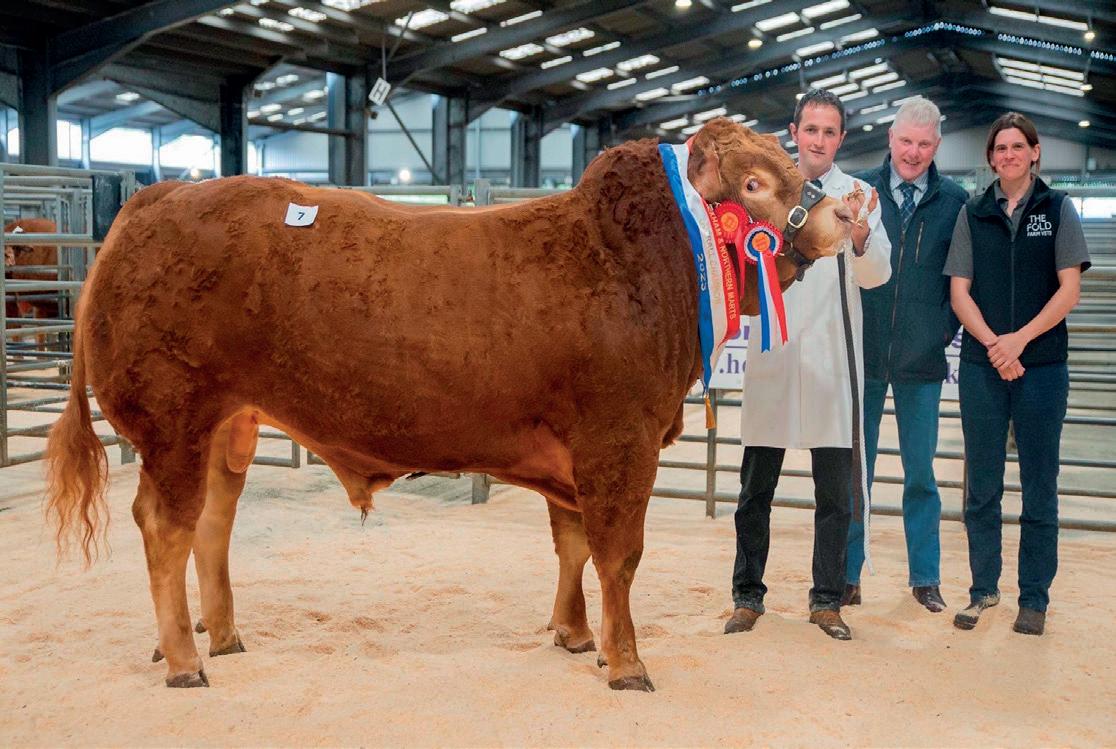


FRIDAY 10TH MAY – 11AM
EXETER LIVESTOCK CENTRE, EXETER, DEVON EX2 8FD
FRIDAY 10TH MAY – 11AM
SALE OF 150 DAIRY CATTLE
EXETER LIVESTOCK CENTRE, EXETER, DEVON EX2 8FD SALE OF 150 DAIRY CATTLE
Dispersal Sale of the Swallowdale & Crystal herds of 70 Pedigree Holsteins & Dispersal of 70 Purebred Jerseys. The Sale will commence with Freshly Calved Cows & Heifers from regular vendors. Followed by the Dispersal Sale of the well-bred Swallowdale & Crystal herds on behalf of Mr CJ Elmes & Catherine Elmes of Swindon. The Sale comprises 37 Cows & Heifers In Milk and/or In Calf, 15 In Calf Heifers, 5 Served Heifers and 15 Maiden Heifers & Calves. Great Cow families with multiple VG & EX’s in their pedigrees. Followed by the Dispersal Sale of 70 Purebred Jersey Cows & Youngstock from W Jeffrey, Truro. Sale in conjunction with Norton & Brooksbank Call Mark Lee 07980924179
Sale of Cast Sheep & Store Hoggs
Entries invited by 11am Tuesday 7th May
Entries invited by 11am Tuesday 7th May
May Term Sale of 800 Store Cattle Sale of Cast Sheep & Store Hoggs Entries invited by 11am Tuesday 7th May
May Term Sale of 800 Store Cattle Sale of Cast Sheep & Store Hoggs Entries invited by 11am Tuesday 7th May
Wednesday 15th May
Wednesday 15th May
Wednesday 15th May
Show & Sale of Beef Breeding Cattle & Bulls
Show & Sale of Beef Breeding Cattle & Bulls
Show & Sale of Beef Breeding Cattle & Bulls
Wednesday 15th May
Early heifer and calf entries include, West Wharmley 30, Paradise 12, Newlands Haugh 8 Bull Entries close Monday 6th May
Show & Sale of Beef Breeding Cattle & Bulls
Early heifer and calf entries include, West Wharmley 30, Paradise 12, Newlands Haugh
Early heifer and calf entries include, West Wharmley 30, Paradise 12, Newlands Haugh 8 Bull Entries close Monday 6th May
Breeding Cattle Entries by Close Wednesday 8th May
Dispersal Sale of the Swallowdale & Crystal herds of 70 Pedigree Holsteins & Dispersal of 70 Purebred Jerseys. The Sale will commence with Freshly Calved Cows & Heifers from regular vendors. Followed by the Dispersal Sale of the well-bred Swallowdale & Crystal herds on behalf of Mr CJ Elmes & Catherine Elmes of Swindon. The Sale comprises 37 Cows & Heifers In Milk and/or In Calf, 15 In Calf Heifers, 5 Served Heifers and 15 Maiden Heifers & Calves. Great Cow families with multiple VG & EX’s in their pedigrees. Followed by the Dispersal Sale of 70 Purebred Jersey Cows & Youngstock from W Jeffrey, Truro. Sale in conjunction with Norton & Brooksbank Call Mark Lee 07980924179
TUESDAY 14TH MAY – 11AM

TUESDAY 14TH MAY – 11AM
EXETER LIVESTOCK CENTRE, EXETER, DEVON EX2 8FD
EXETER LIVESTOCK CENTRE, EXETER, DEVON EX2 8FD
DISPERSAL SALE OF 300 ORGANIC CROSSBRED DAIRY CATTLE
DISPERSAL SALE OF 300 ORGANIC CROSSBRED DAIRY CATTLE
The Sale comprises 300 FRESHLY CALVED Crossbred Cows & Heifers. Fully Organic once a day milked system. Full details available next week. ONLINE BIDDING AVAILABLE FOR ALL DAIRY SALES VIA Full details & Catalogues available on www.kivells.com For further information onj the above sale please contact: Mark Davis 07773371774 or Catalogues from 01392 251261
The Sale 300 FRESHLY CALVED Crossbred Cows & Heifers. Fully Organic once a day milked system. Full details available next week. ONLINE BIDDING AVAILABLE FOR ALL DAIRY SALES VIA Full details & Catalogues available on www.kivells.com
For further information onj the above sale please contact:
Mark Davis 07773371774 or Catalogues from 01392 251261
Breeding Cattle Entries by Close Wednesday 8th May
Bull Entries close Monday 6th May Breeding Cattle Entries by Close Wednesday 8th
Early heifer and calf entries include, West Wharmley 30, Paradise 12, Newlands Haugh Bull Entries close Monday 6th May
Entries to the Office 01434 605 444 www.hexhammart.co.uk info@hexhammart.co.uk
Breeding Cattle Entries by Close Wednesday 8th May
Entries to the Office 01434 605 444 www.hexhammart.co.uk info@hexhammart.co.uk
to the Office 01434 605 444 www.hexhammart.co.uk info@hexhammart.co.uk
Entries to the Office 01434 605 444 www.hexhammart.co.uk info@hexhammart.co.uk





Bakewell Market Results - Monday 29thApril
750 Cattle & 1,738 Sheep - Full report available on our website
Store Cattle Entries for Monday 6th May
Please call the Bakewell Office on 3rd May before 12 Noon Call 01629 812777
Watch the livestreamed cattle sales on www.streaming.auctionmarts.com
Please Note: May Day 6th May - Monday Market as usual Monday 27th May - CLOSED Tuesday 28th May - Market Open **********************
T HURSDAY LUNCHTIME WEEKLY SHEEP SALE
Entries/Enquiries, contact Peter Oven: peter.oven@bagshaws.com or 07973 982443


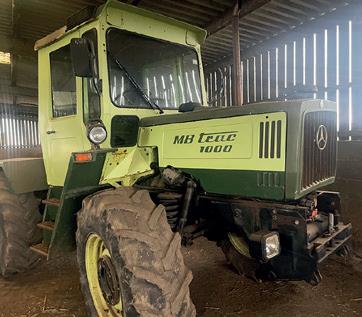
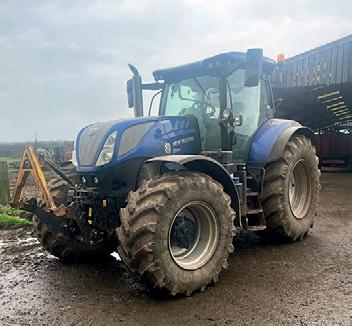
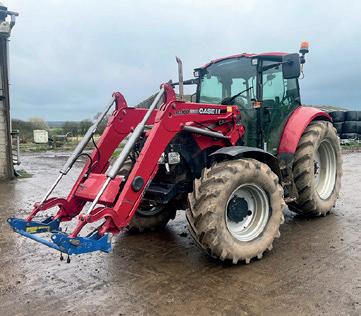


PARK FARM, SPINKHILL, SHEFFIELD, S21 3YN SATURDAY 18TH MAY 2024,10.30AM
John Deere 6200 4WD Zetor 11441 Forterra 4WD (09’)
General Implements & Machinery, Trailers Livestock Equipment, Workshop Items Collectables and Stone Troughs

Tel: 01629 812777
Or Ivor Lowe: ivor.lowe@bagshaws.com or 07977 449126 www.bagshaws.com

Catalogues are available to download at www.bagshaws.com Email: olivia.fernihough@bagshaws.com

A sizeable, full and unreserved farm dispersal sale with an outstanding range of agricultural machinery and livestock requisites for sale by auction as Mrs Heather Marks retires from Gilly Flatts Farm. An impressive collection of both modern and used farm machinery built up over many years at this renowned beef, grassland and arable farming enterprise.
Livestock Markets
Livestock Markets
▪ Bridgnorth, Carmarthen & Newcastle Emlyn
▪ Bridgnorth, Carmarthen & Newcastle Emlyn
▪ Private & deadweight sales
▪ Private & deadweight sales
▪ Primestock & store markets
▪ Primestock & store markets
Bridgnorth:
Bridgnorth:
Weekly primestock sales and fortnightly store sales
Carmarthen:
Weekly primestock sales and fortnightly store sales
Carmarthen:
Newcastle Emlyn:
Viewing day Tuesday 14th May 1pm till 4pm Vehicles
New Holland T7.270 (18 Reg) Mercedes Benz 1000 MB Trac (H Reg) Merlo P40.7 Telehandler (New Engine 12m Warranty) Case 115u Loader Tractor (63 Reg) New Holland TM150 (02 Reg) Massey Ferguson 3095 Dynashift (L Reg) Mustang 920 Skid Steer Polaris Ranger Diesel Only 1100hrs Machinery
Mark Dent Chairman 07711 198641
Scott Ferrie Auctioneer/Director 07557 260653
Daniel Lynn Auctioneer 07887 653442
Paul Gentry Auctioneer/Director 07940 330907
Stephen Dodsworth Fieldsperson 07946 514154
Tracey Gilhespy Fieldsperson 07867 974688
Weekly dairy, calves & weanlings sales; weekly barren cows, store cattle and all classes of sheep; monthly weaned calves, suckler cows and breeding bulls; monthly orange TB restricted cattle sale; monthly Holstein South Wales show & sale
Weekly dairy, calves & weanlings sales; weekly barren cows, store cattle and all classes of sheep; monthly weaned calves, suckler cows and breeding bulls; monthly orange TB restricted cattle sale; monthly Holstein South Wales show & sale
Newcastle Emlyn:
Weekly calves, weanlings, cull cows & sheep; fortnightly store cattle sales
Rural Professionals
Weekly calves, weanlings, cull cows & sheep; fortnightly store cattle sales
▪ Specialising in property sales, lettings & management; dispute resolution & planning; environment al schemes & grants; valuations
Rural Professionals
Auctioneers & Valuers
▪ Specialising in property sales, lettings & management; dispute resolution & planning; environment al schemes & grants; valuations
▪ Growing crops & fodder; rural land & property, farm dispersal; machinery sales; annual valuations
Auctioneers & Valuers
All dates for markets are on the Nock Deighton Agricultural website
▪ Growing crops & fodder; rural land & property, farm dispersal; machinery sales; annual valuations
Bridgnorth Market Contacts: Martin Clack 07977 0675198, Ollie Clack 07891 343673 or Mark Burgoyne 07831 192603
Welsh Mart Contacts: Llŷr Jones 07812 934964 or Paul Taylor 07815 509504. Bidding available on “Marteye” in Welsh marts nockdeightonagricultural.co.uk
McHale V660 Round Baler; Vardestad Rapid 30S Combi Drill; McHale C430 Straw Blower; McHale 991LBER Bale Wrapper; KRM M2 Base Fert Spreader; Krone TC640 Swadrow Rake; Master Grain Dryer & Hopper; Ritchie Root Bucket; Kuhn GF5801MH Digi Drive; Trailed Self Engine Vicon Fert Spreader; Simba Press; Ritchie Folding Chain Harrows; Cambridge Rollers; Flat 8 Grab; Kuhn 5f Rev Plough; Maschio 3m Power Harrow; Maschio 4m Power Harrow; Triple K Harrows; Several sets of Grass Harrows; Opico Vari Disks (Vari Tilt); Cousins Type 28 Discs; Cambridge Rollers; Several sets of Disks; Rabe Werk Power Harrow; Grassland Sub Lift; Twin Axle Slurry Tanker; Flat Field Roller; Mole Plough; Yard Sweeper; Grass Toppers x2; Many other items of tractor mounted cultivation and grassland equipment; 4x Bale Squeezes; Qty Bale Spikes; Muck Forks/Grabs; Buckets; Trailers Barraclough 30ft Bale Trailer; Triffit 11T Grain Trailer c/w Hydraulic Back Door; Henton 12T Grain Trailer c/w Hydraulic Back Door; 14ft Ifor Williams Flat Trailer; Approx 10-12 further grain/silage/muck trailers; Approx 6-8 further flat/bale trailers; Tandem Axle Artic Flat Trailers x2; Tipping Trailers x4; Low Loader Trailer; Livestock & Miscellaneous
All dates for markets are on the Nock Deighton Agricultural web

LIVESTOCK CENTRE, NANT Y CI, CARMARTHEN, SA33 5DR 01
LIVESTOCK CENTRE, NANT Y CI, CARMARTHEN, SA33 5DR 01 267 493200
Bridgnorth Market Contacts: Martin Clack 07977 0675198, Ollie Clack 07891 343673 or Mark Burgoyne 07831 192603 Welsh Mart Contacts: Llŷr Jones 07812 934964 or Paul Taylor 07815 509504. Bidding available on “Marteye” in Welsh marts nockdeightonagricultural.co.uk LIVESTOCK CENTRE, NANT Y CI, CARMARTHEN, SA33 5DR 01 267 493200 Advertisement
Collinson Feed Bin; Qty of Cattle Self-Locking Feed Barriers; Bateman Cattle Crush; Cattle Race (buyer to remove); 2x Calving Gates; 18ft Cattle Container; Cattle Feed Trailer; Post Knocker; Large wheeled generator; Qty of Drainage Pipes; A very large quantity of Workshop tools and equipment; Contact for details Office 01325 464529 Scotte Ferrie 07557 260653 (Auctioneer) Oliver Chapman 07887 653442 (Auctioneer)
Stephen Dodsworth 07946 514154 (Sale Co-Ordinator) Rebecca Wilson 07593 975163 (Sale Co-Ordinator)

Auction Mart
Claughton On Brock, Preston PR3 0PH 01995 640280 www.garstangmart.co.uk
Auctioneer: Ian Atkinson 07944 237516
www.auctionmart.co.uk • T:01200 423325
Jeremy: 07815 727993 • George: 07412 165873


Saturday 4th May 2024 at 10.30am On Farm Dispersal Sale of Machinery & Implements on Behalf of R & A Jolleys, Marlholes Farm, Ratcliffe Wharf Lane, Cabus, PR3 0AN
To incl John Deere 6115M, Manitou MLT Loadall Shelborne Feeder Wagon. See Website & Facebook for Catalogue & Pictures
Tuesday 7th May 2024
9.00 a.m Prime Hoggs & Cast Sheep
10.30am Sale of Sheep with Lambs at Foot
10.30 a.m. Sale of 100 Store Cattle 11.30 a.m. 60/80 Rearing Calves, Weanlings & Stirks
Wednesday 8th May 2024
10.30 a.m. Weekly Sale of Cast Cows & OTM Cattle Followed by TB Exempt Cattle
Tuesday 14th May 2024
10.30am Special Sale of Hoggs with Lambs at Foot Wednesday 15th May 2024
11.30 a.m. Dispersal sale of 150 In Milk Holstein Friesian Dairy Cows & Heifers from K & B Lupton Wednesday 22nd May 2024
Monthly Show & Sale of Dairy Cattle Entries Close Thursday 16th May 10.00 a.m.
Tuesday 28th May 2024
Marts the Heart Early Summer Show of Prime Lambs & Young Handlers Show
Saturday 1st June 2024 Early Summer Sale of Machinery & Implements Wednesday 5th June 2024 On farm Dispersal sale of 100 In Milk Pedigree Ayrshire & Holstein Friesian Dairy Cows & Heifers from Cowell & Moore
Friday 3rd May Tack 6pm Horses 7.30pm
Monthly Sale of 750 Lots of Tack, Saddles, Rugs & 45 Horses
WEEKLY
PRIMESTOCK SALE
LIVE & ONLINE VINTAGE
TRACTORS AND ASSOCIATED LOTS
Tuesday 7th May 12.30pmPrime Lambs, Prime Hoggs & Cull Ewes
SATURDAY 11th May
Sale 10am
Intake of items Friday 10th May 9am-4pm & Sat 11th May 7am-9am
Monthly Sale of Sheep with Lambs, Geld Hoggs & Goats Saturday 11th May 10am Listing of entries online
ONLINE
MACHINERY SALE
Thurs 23rd - Sat 25th May
Intake of items from Tues 7th – Thurs 16th May
Timed Online Sale Thurs 16th – Sat 18th May
Genuine retirement sale on behalf of G Braithwaite of workshop tools, Equipment and miscellaneous vintage items.
Powermatic Hot Air Heater, Qty Heavy Duty Galvanized, Palisade Fence Panels 115ft x 8ft high plus 1 Pair 16ft Gates, Dominion 16” Supreme Elliot Woodworker, 20 Plate Saws various sizes and types and Planer Blades, William Woods Square Chisel, Morticer and bits, Large Selection of Power Tools, Nu Tool Chipping, Collector, Electra-Beckum D4470
Cut Off Saw, Ingersoll Rand Euro Compressor, Assorted soft and hardwood timber, Misc Locks, Handles, Hinges and other joinery and uPVC ironmongery, Vintage items Dolly Tubs etc, 2 Joiners wooden benches 3 Record Vices in total, Sash Clamps,4 machine feeding rollers, uPVC End miller and Mitre Corner cleaner,9 Stained Glass panels in frames approx 2ft x 2ft, 2 Belfast Sinks, Qty of Drain Rods, Various Chimney Pots,14ft Tower Scaffold, Large Qty assorted stone, Rolls of Under Slates felt, Various Plasterers tools including table, Various Ridge Tiles both old and modern, Rack of UPVC Facia Soffit trims,7ft double sided Glass Rack,2 wooden uPVC assembly benches, Large qty mixed roof tiles, Qty mixed blue slate, Large Qty Rosemary tiles, Pile of Saddleback Terracotta copings, Tall metal First Aid cabinet and contents approx 6ft x 3ft,5ft x 3ft Drawing Desk, Qty Sheep and Chain Link netting, Qty Guttering and fittings, Cement Mixer and petrol mixer, Plus misc items.

Saturday 4 May
9.30am WEEKLY CAST SHEEP followed by PRIME LAMBS & PRIME HOGGS Please call Matthew Middleton
10.30am 1 BULL, 35 COW & CALVES & IN CALF, 39 YOUNG BULLS, 340 STEERS & HEIFERS catalogue online. Enquiries to Jack
10.30am 386+ OUTFITS SHEEP & LAMBS catalogue now online. Enquiries to Rachel
Tuesday 7 May
MONTHLY MACHINERY SALE 10am All entries to the yard please Monday 6th 8am-2pm Catalogue online
Monday pm. Noted entries to include Ford Ranger, 2x 10t Silage Trailers, Teagle XT22 twin disc fert spreader, Parmiter post knocker
Thursday 9 May
10.30am PRIME BEEF followed by CULL CATTLE 10.30am REARING CALVES
11.00am WEEKLY DAIRY
12.30pm STIRKS entries by Tuesday 7th 12noon
Saturday 11 May
9.30am WEEKLY CAST SHEEP & PRIME HOGGS 10.30am SHEEP WITH LAMBS & IN LAMB SHEEP Entries please for the catalogue by Tuesday 7th 12noon
Thursday 16 May
10.30am PRIME BEEF followed by CULL CATTLE 10.30am REARING CALVES
11.00am SEMEX & JAMESON FEEDS SHOW & SALE OF DAIRY entries please Saturday 18 May

MARTS’ THE HEART SPRING STORE CATTLE SHOW AND SALE to include Dispersal of Limousin & Blue Cows & Calves on behalf of EA & H HANSON. ANNUAL SHOW & SALE OF HOGGS WITH LAMBS AT FOOT see reports for classes.

11th MAY British Limousin Cattle Society Premier Spring Show & Sale 51 Bulls, 11 Females Show at 9.30am, Sale at 12noon Online bidding via Marteye Details and Catalogues Worcester Market Tel: 01905 769770


On instructions from Messrs SA & E Friswell (who are streamlining their operations). West Farm, Brinklow, Rugby, Warwickshire, CV23 0LY.
Part I: The Complete Commercial Herd of 146 Continental x Suckler Cows & Limousin & British Blue Calves Farm Assured, BVD Free, December–April born calves with excellent conformation, shape and growth; some with show potential. Online bidding will be available through halls.marteye.ie
To be sold by auction on Saturday 11th May 2024 at 11.00am.
Part II: A Most Interesting Machinery & Equipment Sale to include Massey Ferguson Tractors, Telescopic Handlers, Excavator, General Farm Machinery & Livestock Equipment
To be sold by auction on the premises on Saturday 1st June 2024 at 10.30am.
Saturday May 11th
Dispersal sale of 70 pedigree and purebred Blonde and Lincoln Red cows with calves at foot (2 months), 3 Ped stock bulls. For Mr Colin Reeve, Suffolk. Also this day -
The Paul Davis Memorial Trophy Show and Sale of cows and calves.
The auctioneers are anticipating a quality entry well worthy of attention.
Also the usual sale of 250 store cattle and a show and sale of Ewes and Lambs.
Please see the website for more details. Owned by Farmers. Run by Farmers. Hall Road, Norwich, NR4 6DW 01603

Bank Holiday Monday 6th May
9.30am-
Show 10am; Sale 11am Prize Show & Sale of 475 Store Cattle of all classes Champion and Reserve sold at 12.30pm. Tuesday 7th May
Show 10am; Sale 11am
Annual “New Fair” & “Troutbeck” Prize Show & Sale of 5,795 Breeding Sheep Comprising:- 3,258 Continental & Mule Ewes & Shearlings and Lambs; 506 Continental Hoggs & Lambs; 1,055 Mule Hoggs & Lambs; 208 Geld Gimmer Hoggs; 768 Swaledale, Herdwick, Cheviot Ewes and Lambs
Wednesday 8th May
8am – Sale of Cast Ewes & Rams & followed at 10am with Prime Hoggs (Hogg Ballot -10am) Friday 10th May 10am- Sale of 250 Rearing Calves and Weaned Stirks
Tractors,
and
Maughan


TUESDAY 7TH MAY – SALE AT 11.30AM PRIZE SHOW & SALE OF EWES & SHEARLINGS WITH LAMBS AT FOOT, & SALE OF HOGGS WITH LAMBS AT FOOT 130-150 Ewes & Shearlings with lambs, 20-30 Hoggs with lambs 40 Gimmer Hoggs, 50 Store/Feeding Sheep
SATURDAY 11TH MAY AT 10AM SPECIAL SALE OF VINTAGE MACHINERY, IMPLEMENTS & COLLECTIVE ITEMS AND SPRING SALE OF AGRICULTURAL MACHINERY, IMPLEMENTS, LIVESTOCK EQUIPMENT & PRODUCE Sale to commence with small items followed by outside lots
TUESDAY 21ST MAY AT 12 NOON SPRING SALE OF BREEDING CATTLE
Entries include 16 Cont x Cows with Calves, 37
Angus & Angus X Cows with calves, 5 Cont x Heifers with calves, 9 Angus Maiden Heifers
Entries invited for all sales, full details of sales and pictures on our website/facebook
Tel: 01845 523165 www.thirskmarket.co.uk
Auctioneers: Tony Thompson: 07860 766571 Emma Coupland 07808 271218 Ben Wilson 07960 893733

















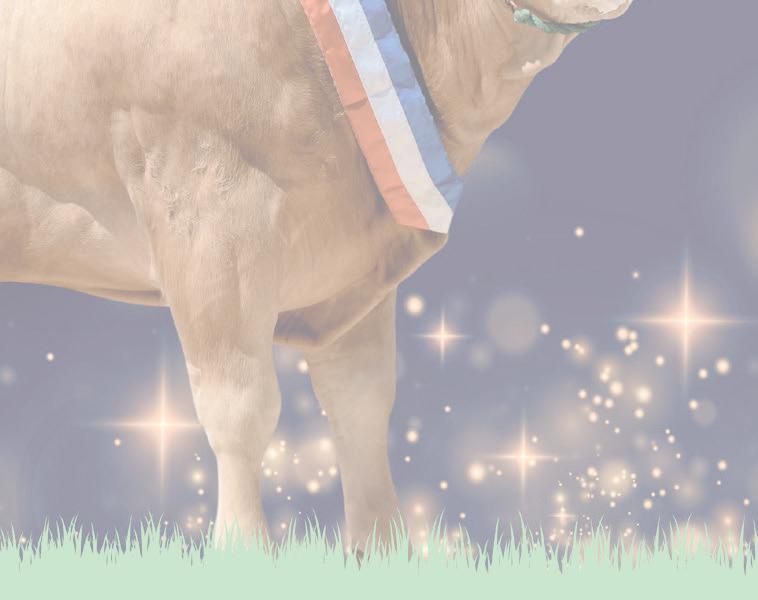
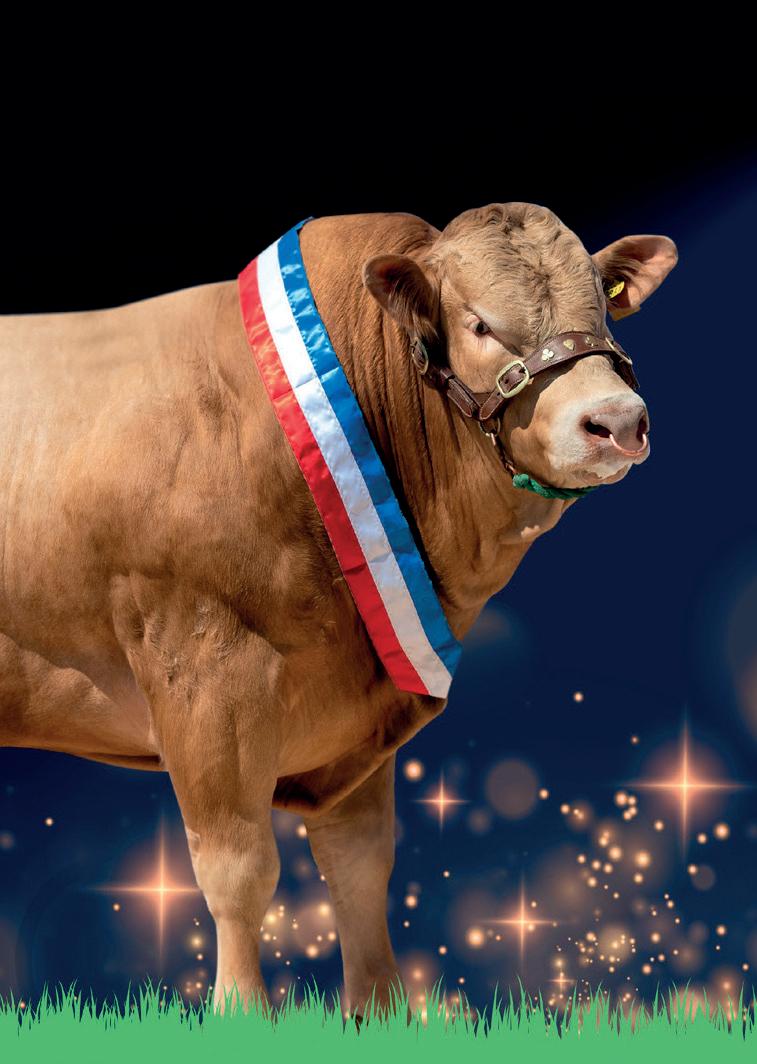




10.30AM—SATURDAY 11TH MAY 2024
COTTON EDMUNDS FARM, CHRISTLETON, CH3 7PZ
1987 FORD 5610 with QUICKIE 520 Loader, 1967 MF135, 1987 CASE 956XL, IFOR WILLIAMS TA510 Stock Trailer with Sheep Decks, WATSON 50 Place Sheep/ Youngstock Trailer, FRASER M700 MUCKMASTER Rota Spreader, 2017 KIDD 280 Topper, KRM 500H Tine Harrows with Seed Box, 8 Ft Roller, RM Clough Post Knocker, 2008 HONDA Foreman RS TRX500 Quad Bike, LOGIC LMF100 Sheep Feeder, QUAD Sheep Trailer, TUFFBRAND GI Sheep Race with Shedding Gates, GHL Sheep Scales, Hurdles, Lamb Creep Feeders, Sheep Hayracks and Troughs, Vintage Tools, Workshop Equipment, 2022 KINGSPAN TITAL FM1200 Fuel Master, Sandstone Trough, Gates, FERGUSON Post Borer.
For R A & O C Pickering (Retiring)
Enquiries to Andrew Wallace 01829 773000 Catalogues Online www.rostons.co.uk

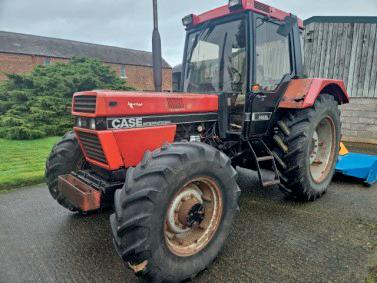



For all our current roles, don’t miss the Careers Special inside this weeks Farmers Guardian Pages 34 to 45
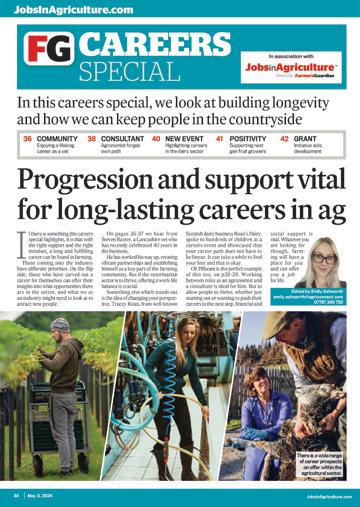




people?
If you are looking for new friends in a relaxed and informal environment, then try Country Link – the social network for the countryside. Open to anyone, and with a national network of local groups, Country Link offers a variety of pre-arranged meetings, events, and activities to suit all tastes, encouraging friendship but is not a dating agency.
Take a look on our website, call 07932 537183, or email contact@country-link.co.uk for more information and to find out what is happening in your area.
SOW LOVE REAP JOY
Calling all farmers! Cultivate lasting connections with ‘Friends1st’, the premier introduction agency for rural hearts. Sow the seeds of companionship with like-minded individuals who understand the rhythm of farm life. Join us and let love blossom in the fertile fields of shared Christian values. Your perfect match may be just a harvest away. Sign up and reap the rewards of a thriving relationship! Call 0121 405 0941 TODAY to find out more. www. friends1st.co.uk







New Roka Silos and Tanks available from 500 Ltrs to 50,000 Ltrs!
16,000 Ltr Delaval
16,000 Ltr Fabdec (holds 17,000)
15,000 Ltr Serap
14,000 Ltr Fabdec
10,000 Ltr Roka **NEW SPECIAL OFFER** in stock
10,000 Ltr Fabdec
8,000 Ltr Roka Silo
8,000 Ltr Roka
7,200 Ltr Delaval
6,750 Ltr Delaval (holds 7,000 Ltrs)
6,500 Ltr Mueller
6,000 Ltr Roka
6,000 Ltr Fabdec
5,000 Ltr Packo
5,000 Ltr Mueller Model “O”, 5,000 Ltr Roka
4,000 Ltr Mueller
4,300 Ltr Mueller Model “P”,
2 x Refurbished 1T Ice Builder suitable for 10/12,000 Ltrs every other day
Refurbished 1.3T Ice Builder suitable for 16,000 Ltrs every other day Refurbished 1.5T Ice Builder suitable for 18/19,000 Ltrs every other day
CUSTOM BUILT HEAT RECOVERY SYSTEMS, TAILORED TO YOUR REQUIREMENTS

Smaller bulk tanks available, emergency open & enclosed, loan tanks available to rent, main dealer for new Ro-ka milk cooling systems. For further details please call S.W Refrigeration specialising in “On Farm cooling Equipment” 01392 210344 or Paul on 07974 140949








Complete with fencing. A large selection of all animal and calf feeding equipment and all other associated products also available. Massive saving on list price Livestock Supplies Ltd. Ashley: 07831 887531 Office: 01829 260328 www.livestocksupplies.co.uk

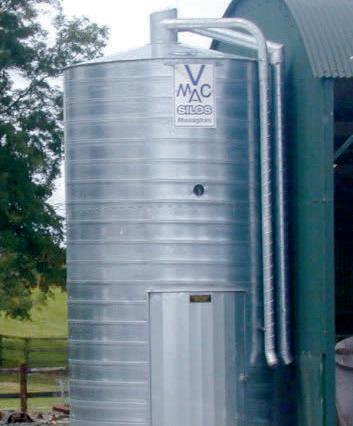

Complete



COLLECTORS OF DEAD ANIMALS THROUGHOUT LANCASHIRE AND CHESHIRE
Competitive prices
PLEASE CALL: 01704 893161 or 07768 051800 (24 hrs)
Martland’s the name, knackering’s the game
Established over 100 years
Daily collections of all types of fallen stock throughout the North of England.
Tel: 01524 261144 or 01524 263022 or 01274 833196
Cows & Bulls Wanted.
our own abattoir.
07860 636 605 OFFICE: 01772 626 951
CONCRETE GROOV-
ING Neil O’Donnell -Tel: 01900 817009 or 07759 194600 Nationwide (T) NOVA RED White Star & Purebreds now available. -Tel: 07768 790962 W.Yorks (P)
Energised lamb milk suitable for all feeding systems
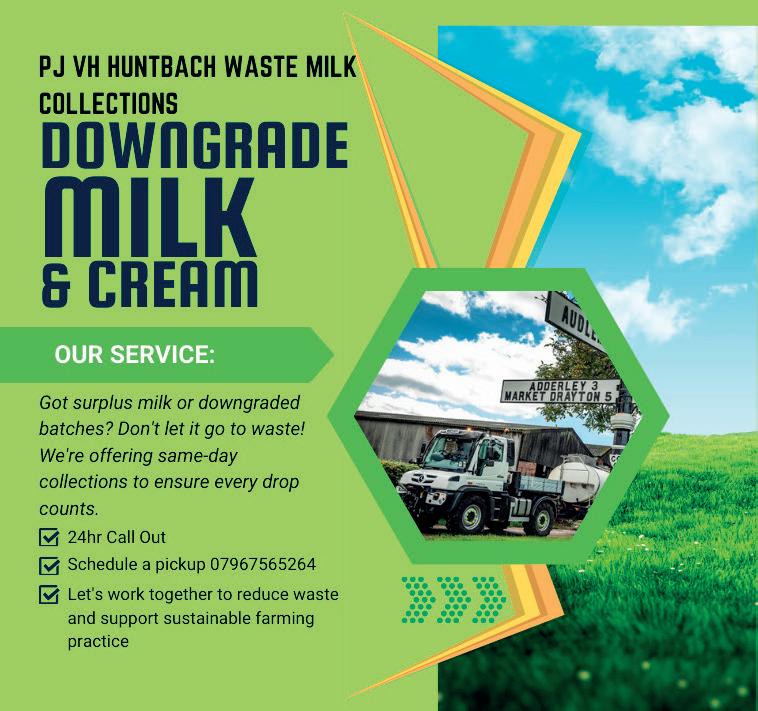


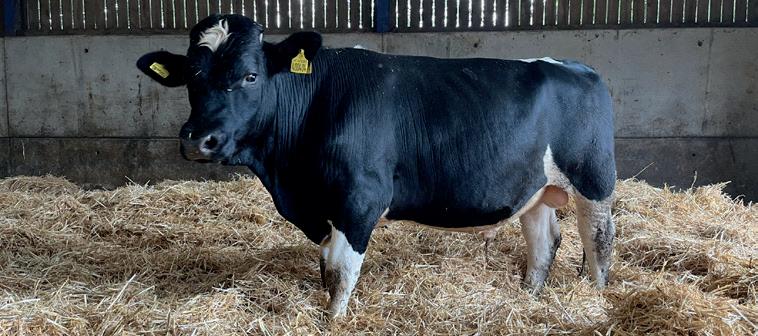
Black & White and some Red & White Plenty to choose from - first come first served!
(T)
NO DE-HORNING REQUIRED
ALL CALVES WILL BE BORN WITHOUT HORNS THE TREDON HERD - (Limousins)
07849 153733 or 01223 426412 VITALAMB + BIOSTART
BIOSTART:- Probiotic, Prebiotic and Egg proteins for improved health

Milkmade2000
Feeds 150+ lambs/kids
Feeds 60 calves 25kg Hopper
Simple to install Water supply from mains or header tank Labour saving, cost effective, healthy youngstock For further information contact 01387 750459
Info@britmilk.co.uk www.britmilk.co.uk Ballantrae House, Collin, Dumfries, DG1 4PT
Borders Farms, delivered to your farm. Delivery Nationwide. Livestock Supplies Ltd www.livestocksupplies.co.uk


HOMOZYGOUS POLLED CHOICE OF 6 RED OR BLACK • Good conformation & muscling • Exceptional temperament. • High health status. TB4. • Ready For Work • Semen tested Prices start from £3,000 Also available a selection of cows and heifers for sale.



01954 232976 07771 333303
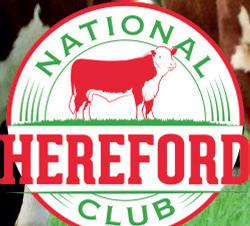



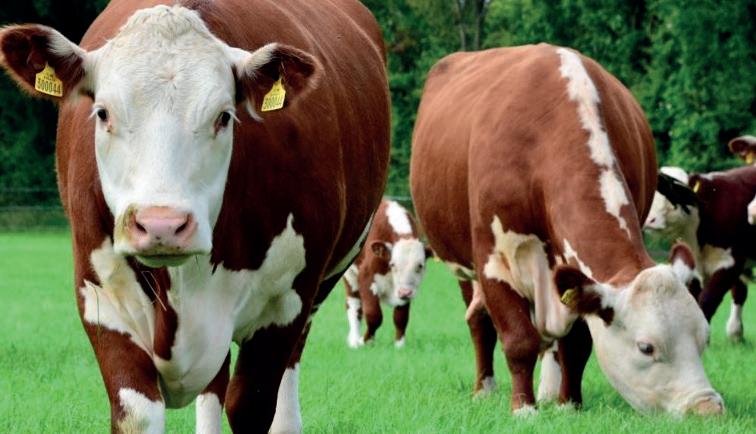
enquire. Elite Health Status, plus TB4, just tested.
www.elderberrylimousins.co.uk for pics, videos & info.





07825 868939 (Barry) or 07436 076636 (Paul) East Yorks (P) Can deliver or arrange transport nationwide.



A weekly selection of freshly calved & in-calf dairy cattle sourced from the UK. All guaranteed and delivered anywhere in the UK Finance can be arranged. Livestock Supplies Ltd Ashley: 07831 887531, Office: 01829



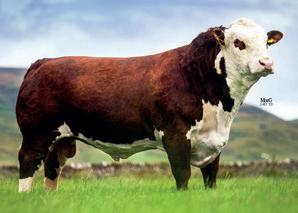








FARM ASSURED MIXED CAKE
Chocolate/Sponge Cakes/Doughnuts ME 16.1 - High Starch - High Sugar £120/t ex store

Biscon Meal (Approx. 12% Protein/14 ME) £255 del Cereal Mixture (Approx. 14% Protein/13 ME) £265 del Cereal Blend (Approx. 16% Protein/13 ME) £285 del Mixed Pellets (Approx. 18% Protein/13 ME) £305 del
One Tonne Bag Collections Mixed Pellets (Approx. 18% Protein/13 ME) £275 ex store
Biscon Meal (Approx. 12% Protein/14 ME) £225 ex store

Contact
LIQUID
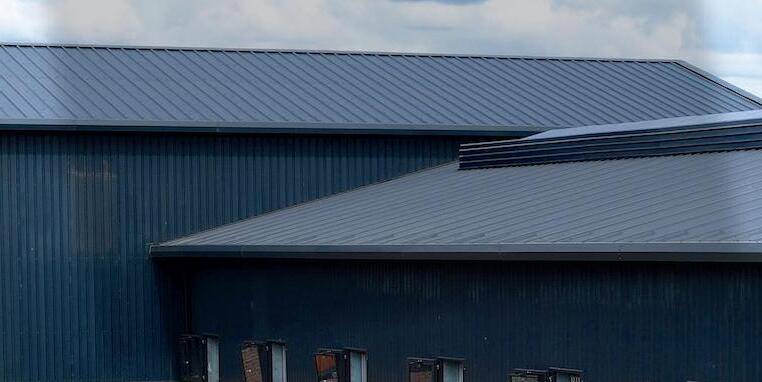

Abumper52-pagelookaheadtothisyear’sevent,tobe heldinInglistononThursday,June22,toSunday,June25.







As the Royal Highland Show approaches, Farmers Guardian will run an exclusive preview for readers to find out what’s in store at this year’s show.
This will be with readers from Friday June 14, 2024
From getting up close to the top quality livestock, to tasting local food and supporting local producers, the Royal Highland Show is an iconic event which draws national interest.
Speak
fgclassified@farmersguardian.com




With property developers now required to achieve biodiversity net gain, solicitor Jack Manning says there are opportunities for landowners. Farmers Guardian reports.
rSaleable BNG units could generate income
LANDOWNERS could find ‘interesting opportunities’ to make nature recovery pay following recent legislation meaning property developers now need to achieve mandatory levels of improvement to the natural environment.
That was the message from Jack Manning, a solicitor in the commercial property team at Clarke Willmott.
The relevant provisions of the Environment Act 2021 came into force on April 2, meaning that all major and minor commercial and residential development must achieve a minimum of 10 per cent biodiversity net gain (BNG). The same requirements were expected to extend to Nationally Significant Infrastructure Projects from late November 2025.
Mr Manning said: “If developers cannot meet this requirement through their development, the gain can be delivered on separate land as long as it is maintained accordingly for 30 years.
“This has led to developers seeking off-site solutions on third-partyowned land to meet the BNG
requirements for their projects via a variety of legal frameworks, offering new income and capital opportunities for landowners.”
Requirements varied in each local planning authority, but the principle was for a habitat management and monitoring plan to be put in place, via a section 106 agreement or conservation covenant, which would record the number of units that the scheme generated. The units could then be sold to a developer, which would allow them to proceed with their property development.
Mr Manning said Clarke Willmott had been involved in creating the first live habitat bank in Devon, and was assisting landowners in establishing their own.
“There are a number of ways in which land can be owned, controlled and managed to deliver saleable BNG units,” he said.
Leasehold habitat banks are where a landowner grants a lease –either to a third-party unit provider or a broker – with the leaseholder then managing the land as a ‘habitat bank’, generating the BNG units to be allocated and sold. Dependent on
As of April 2, all major and minor commercial and residential development must achieve a minimum of 10 per cent biodiversity net gain.

the scheme, the landowner could receive a lump sum or annual rental payments but must seek advice on the tax implications of each option.
Mr Manning added: “Consider who has the management responsibility; some schemes place the responsibility on the broker, whereas some schemes require co-creation or co-management.
“Registering the scheme will restrict the use of the land, so a co-creation/management scheme may be favourable if a landowner is concerned that the scheme needs to fit with wider business operations so as not to jeopardise other income streams.”
Landowners should also make sure that the lease does not include break options that could leave them open to habitat management obligations, which require expense and expertise, and should check who would be responsible for any upfront capital costs.
DIY options via self-fund or ‘green finance’ would allow landowners to create and maintain the habitat with a view of selling units directly to a developer.
“The obvious benefit is that the landowner will directly receive
income from the sale of the units and will have complete control over the management of the land,” added Mr Manning.
However, this would mean there was no guarantee of units being allocated or sold.
There could be significant costs involved in habitat creation, although specialist lenders could assist with the funding via ‘green finance’.
Mr Manning said: “If you are in the process of agreeing a strategic land deal, remember that developers may be open to the possibility of acquiring extra land for habitat creation.
“They may also want to take an option for BNG units if you have already created a scheme – it is worth asking the question.”
Landowners taking on the scheme should also consider forming a consortium with neighbours.
“Remember that a section 106 or conservation covenant will be binding on successors in title and crystallise the use for at least 30 years. Consider your circumstances carefully and that of the next generations,” added Mr Manning.

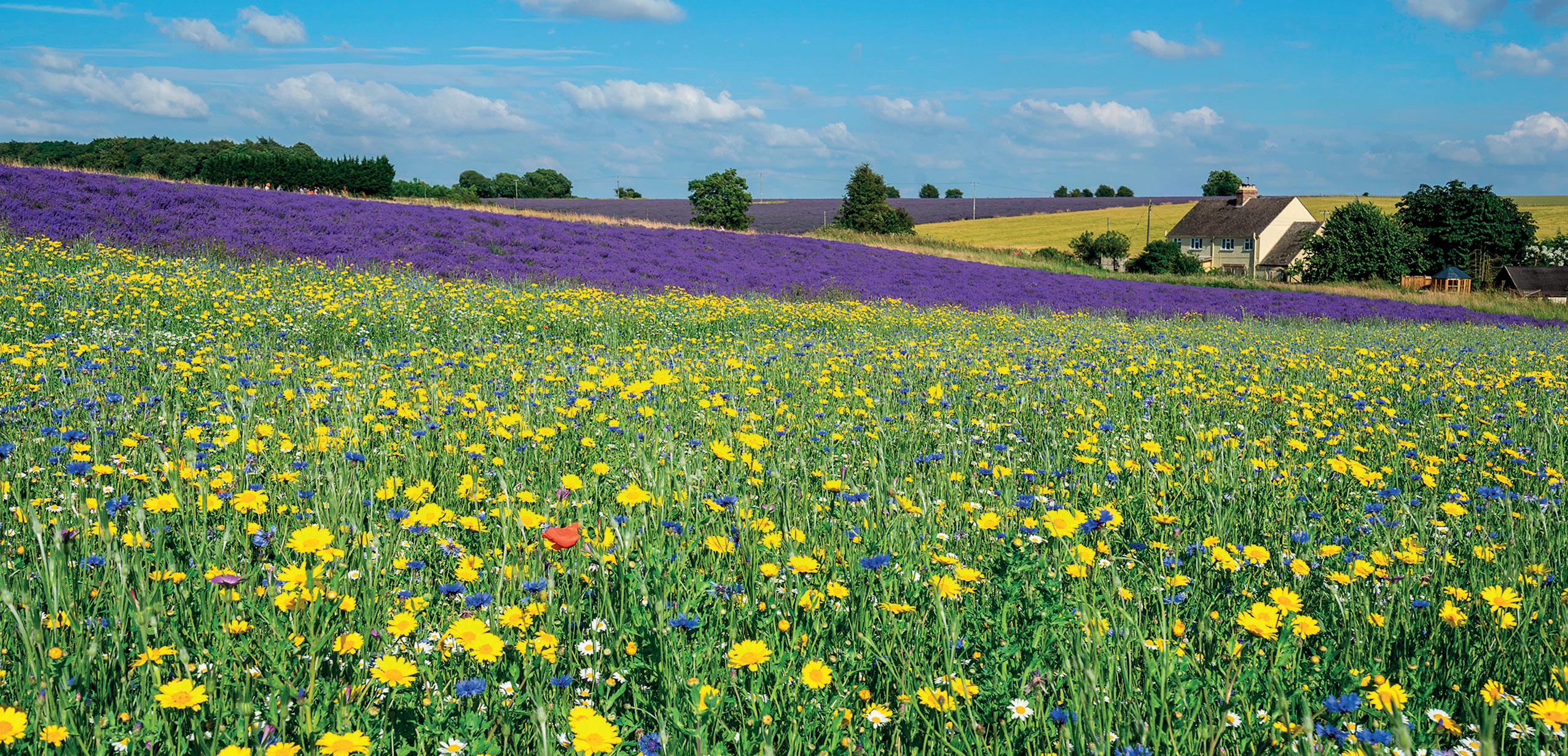

•
•
•
•
•




Political policy on Britain’s thousands of miles of hedgerows has changed dramatically over the years, from post-war destruction to today’s conservation.
If the Management of Hedgerows (England) Regulations 2024 currently before Parliament are passed into law, all farmers and landowners will have to comply with a new set of rules governing exactly how their hedgerows must now be managed, principally to enhance their benefit to the environment and to wildlife.
There are two main areas of management practice that will be stipulated.
Firstly, a two-metre buffer strip of green cover, measured from the centre of a hedgerow, must be established and maintained and no cultivation or application of pesticides or fertilisers should take place within this buffer strip.
Secondly, a hedgerow cutting ban will be enforced from March 1 to August 31 to protect nesting birds.
The new law will be regulated by the Rural Payments Agency, which will take advice on the approach to enforcement. But in my experience, most farmers and landowners know what best practice looks like and will welcome the consistency and clarity the regulations will bring.
The new law will come into force immediately it is passed by Parliament, but it includes exemptions and derogations which will give farmers time to comply under certain circumstances. For example, on land used for crop production where hedgerows have no buffer strip, the strip will only need to be created after the harvest.
As land management consultants, we will be watching the passage of the new law and studying the guidance the Government has promised.
Farmers and landowners understand the environmental value of their hedgerows better than anybody and have been managing them accordingly for years.



But the replacement of incentives under the old Basic Payments Scheme (BPS) with rules and requirements governing environmental standards for hedgerow management may be just the start.
With the removal of BPS, the UK Government has introduced grants to cover the improvement of many key aspects of environmental management, but if those improvements in best practice become law and the grants are no longer available, then farmers who have failed to secure that funding now and may have to carry the cost themselves in the future.
The new Environment Agency inspections which began six months ago are designed to enforce higher standards required in the management of areas, such as Silage Slurry and Agricultural Fuel Oil-compliant silage pits and slurry storage.
If they find a silage pit or slurry tank needs upgrading, farmers will be required to upgrade it within a given time period, and if there is no grant funding, the bill will be their responsibility.
In the current climate particularly, farmers and landowners can do without yet another major additional cost to bear, so our advice is to get in touch with a professional now and secure the funding while you can, or run the risk of being governed by the big stick without the compensation of the carrot.
Thomas Armstrong is a director with H&H Land and Estates. Call 01228 406 260, or email thomas. armstrong@hhlandestates.co.uk



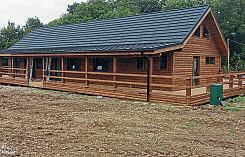












Although every advertisement is carefully checked,occasionally mistakes do occur.We therefore ask advertisers to assist by checking their advertisements carefully and advise us immediately should an error occur.
We regret that we cannot accept responsibility for more than ONE INCORRECT insertion and that no re-publication will be granted in the case of typographical or minor changes which do not affect the value of the advertisement.

While every endeavour will be made to meet the wishes of the advertisers, the publisher does not guarantee insertion of any particular advert.











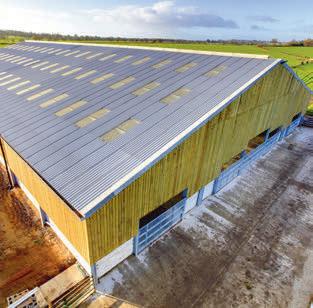









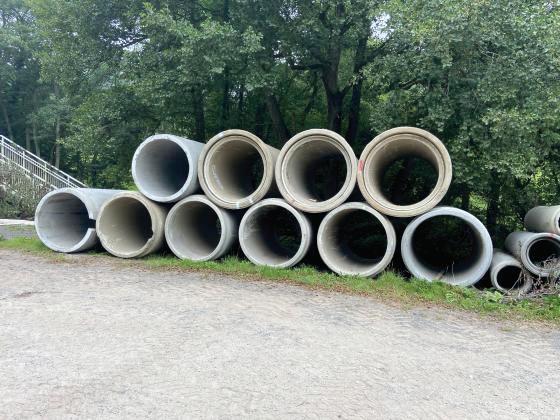



















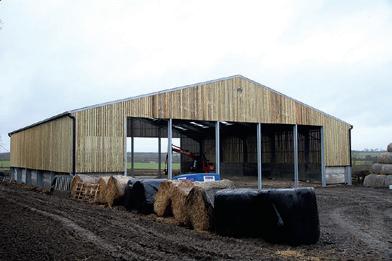

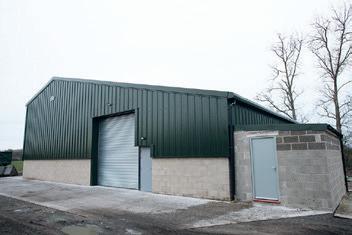







Sites of 1- 1000 acres required for residential development.
If you think that your land has potential for development, or you have been approached by a developer, then you will need expert advice that is not available at traditional sources. Michael Rutherford is a specialist agent acting and negotiating for landowners. Contact me for a confidential and expert consultation at no cost. All areas of the UK covered.

sponsors that may appear in Farmers Guardian. By Third Party Products we mean products or services provided by third parties. Farmers Guardian contains advertising and sponsorship. Advertisers and sponsors are responsible for ensuring that material submitted for inclusion on Farmers Guardian complies with international and national law. Farmers Guardian (nor its websites) is not responsible for any error or inaccuracy in advertising or sponsorship material. Any agreements, transactions or other arrangements made between you and any third party named in, on (or linked to from) in Farmers Guardian and its websites are at your own responsibility and entered into at your own risk. Farmers Guardian promises to develop and operate with reasonable skill and care and will use reasonable efforts to promptly remedy any faults of which it is aware. Farmers Guardian does not provide any other promises or warranties about its products and services. Farmers Guardian is provided on an “as is” and “as available” basis. This means that Farmers Guardian does not make any promises in respect of Farmers Guardian or the services and functions available on or through Farmers Guardian, Fginsight.com and fgbuyandsell.com or of the quality, completeness or accuracy of the information published on or linked to from Farmers Guardian, Fginsight.com and fgbuyandsell.com other than as expressly stated above. The above disclaimers apply equally to your use of Farmers Guardian, Fginsight.com and fgbuyandsell.com without limiting the above; Farmers Guardian and its websites are not liable for matters beyond its reasonable control. Farmers Guardian does not control third party communications networks (including your internet service provider), the internet, acts of god or the acts of third parties. Farmers Guardian liability will not be limited in the case of death or personal injury directly caused by Farmers Guardian negligence in those countries where it is unlawful for Farmers Guardian to seek to exclude such liability. Any individual, who is in doubt about entering into a loan agreement, should seek professional advice or consult an authorised person who can assist in relation to entering into a credit agreement. Before acting on any information you should consider the appropriateness of the information having regard to these matters, any relevant offer document and in particular, you should seek independent financial advice. All loans, loan participations and financial products or instrument transactions involve risks, which include (among others) the risk of adverse or unanticipated market, financial or political developments and, in international transactions, currency risk. Lending against non-traditional physical collateral exposes investors to specific risks such as the potential for fraud, theft, damage and illiquidity.










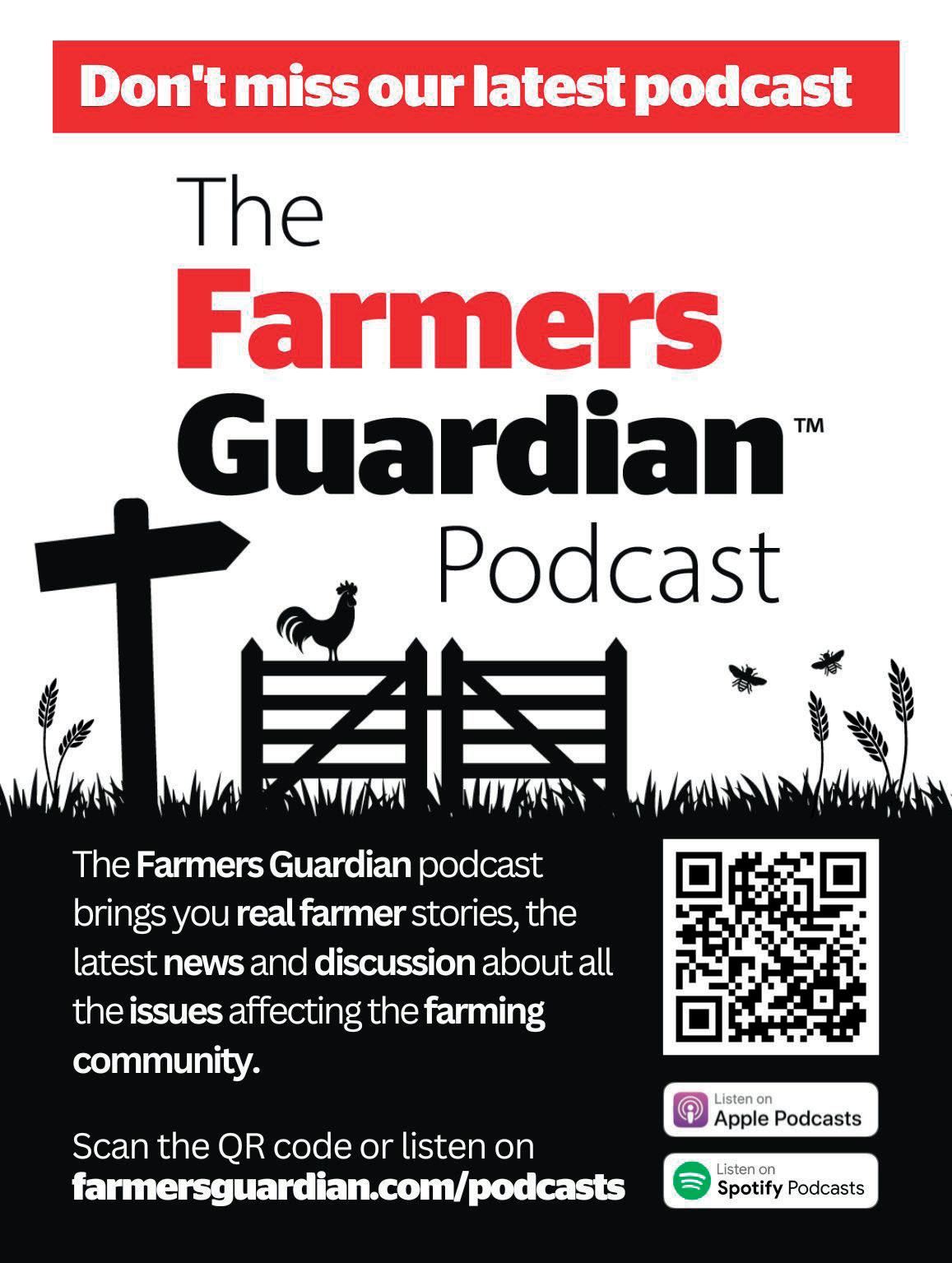





























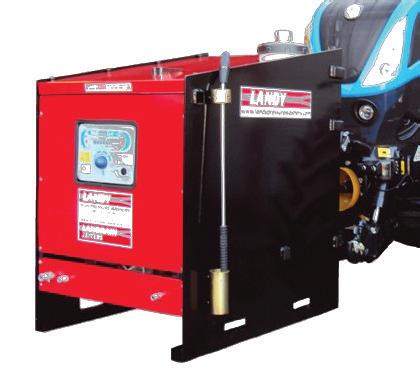

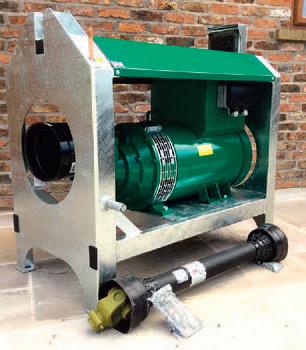


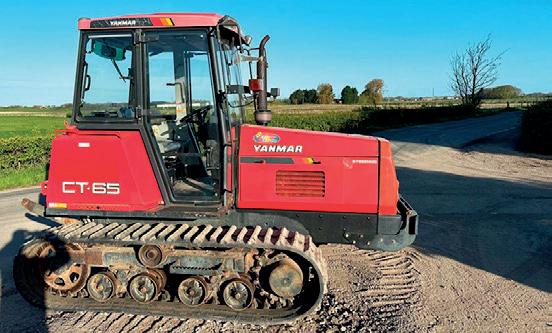

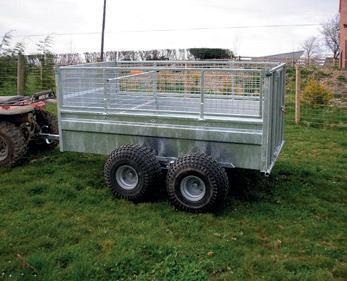


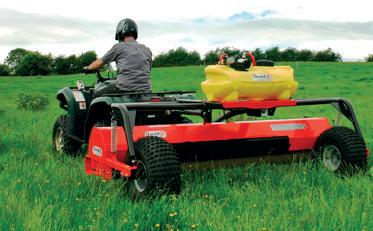
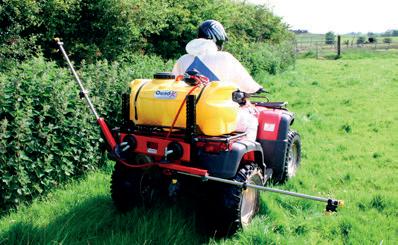
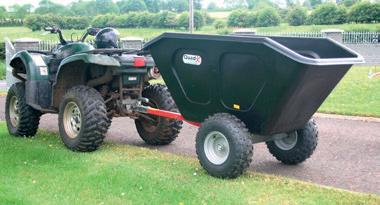
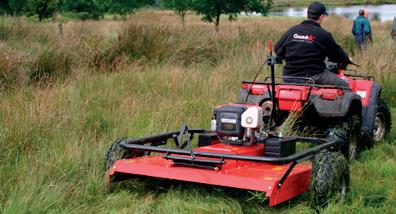









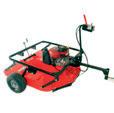




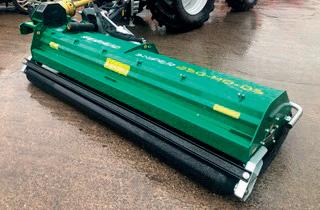
NEW SPEARHEAD SNIPER 230 HD Offset variable parallel arm & variable cowl. £7,950 + VAT.

NEW SPEARHEAD SNIPER 225 HD, HYDRAULIC SIDE SHIFT, REAR ROLLER. £3,750 + VAT

NEW SPEARHEAD SNIPER 270 HD. HYDRAULIC SIDE SHIFT, REAR ROLLER. £4,750 + VAT.

NEW SPEARHEAD 480 Multicut Proline Flexwing, 6 blades per rotor. £22,500 + vat.

NEW SPEARHEAD 280 SHD SNIPER, front or rear linkage mounted. £8,750 + VAT.

ISUZU DMAX UTAH Automatic double cab, 2018, 38600 miles, good spec. £21,995 NO VAT.

CASEIH MAXXUM 140 40kph. Push back hitch, front weights, 2010, 7525 hours.
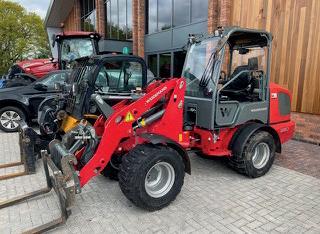
WEIDEMANN 1880 LP PIVOT STEER LOADER, pallet forks, 2022.

NEW SPEARHEAD TWIGA S 55 HEDGE / VERGE MOWER, 1.2M HEAD. £19,750 + VAT.

NISSAN NAVARA TEKNA 2.3dCi 190 4wd Double cab Auto. 2017, 54548 miles. £17,995 + vat.

TOYOTA HILUX INVINCIBLE AUTO. 2021, 36634 miles, rear canopy, good spec. £29,995 + VAT.

ISUZU DMAX BLADE double cab automatic, 2020, 33441 miles. £26,995 NO VAT.


NEW KRONE F320 front mounted push mounted mower conditioner.

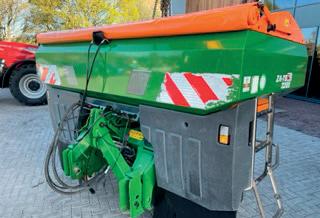


NEW KRONE R360 REAR MOUNTED MOWER WITH SWATH PLATE.

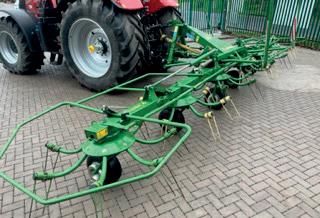


NEW KRONE EASYCUT TC320 Trailed mower conditioner, quick change blades.





























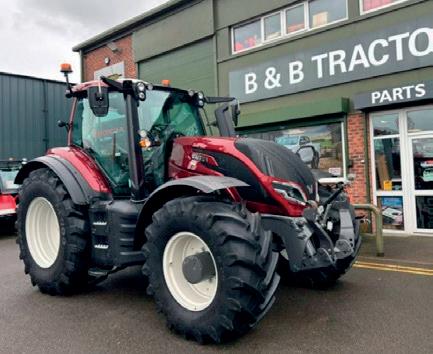
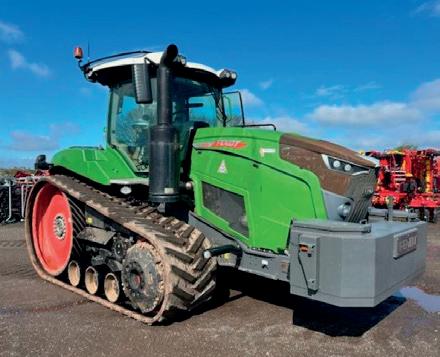































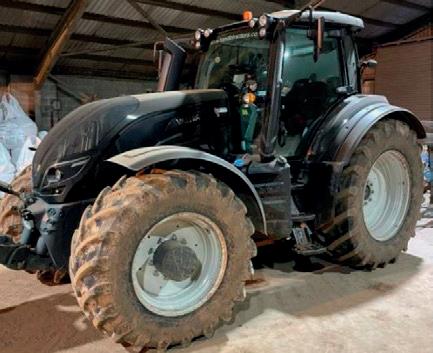




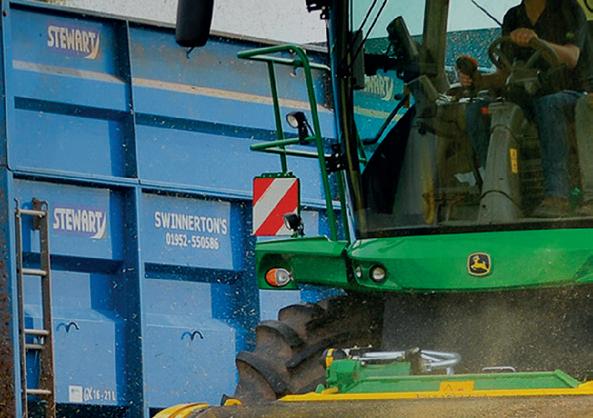




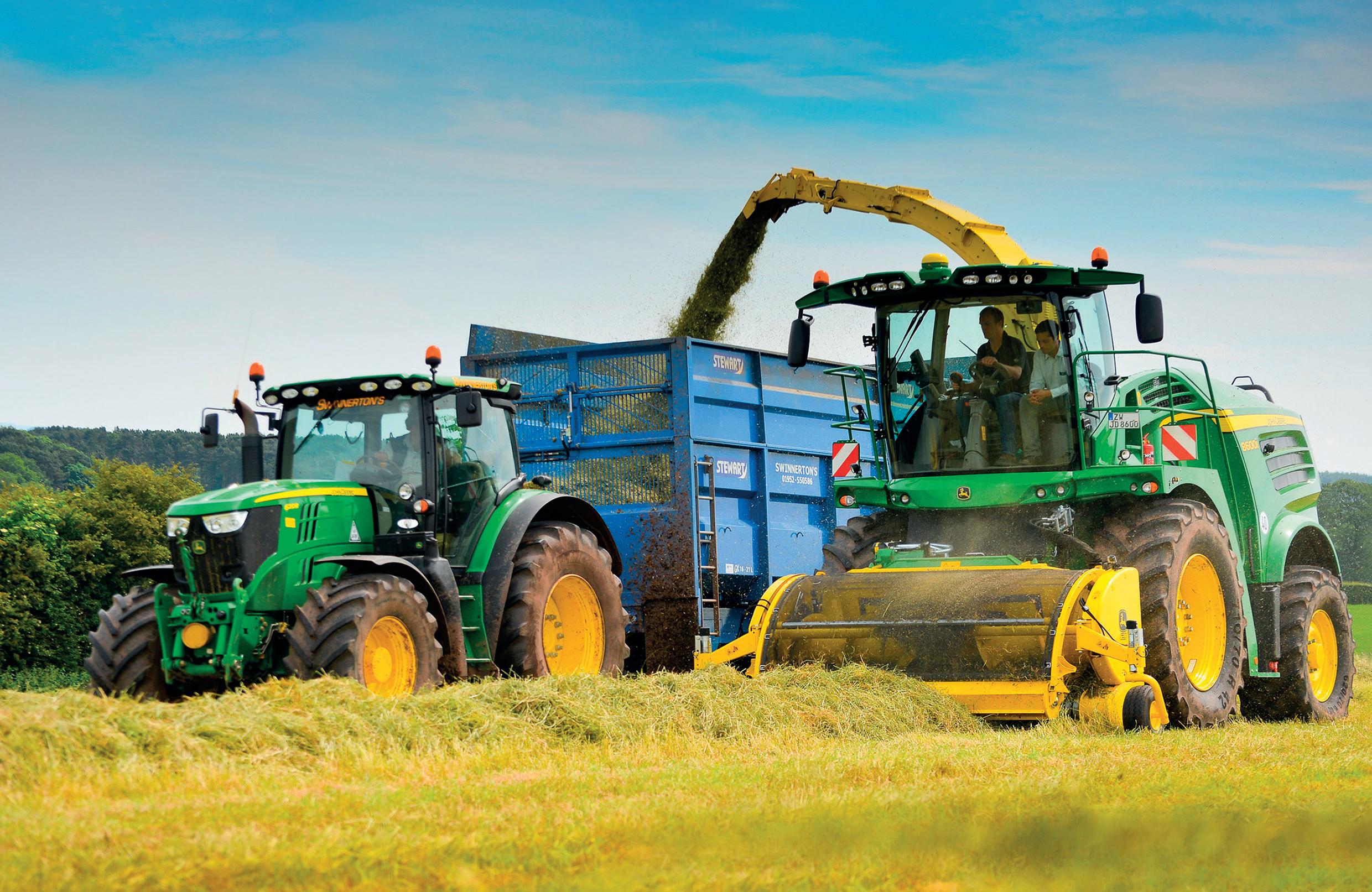





Wednesday 15 May 2024 3pm to 8pm

Startin Tractors Limited Ashby Road, Twycross CV9 3PW Tel: 01827 880088






NEW CASEIH FARMALL 90A
PowerShuttle 40kph.
Air conditioned cab, 420/85 x 34 tyres
£43,000 + vat
With CaseIH / MX Loader to fitted
£47,500 + vat


NEW CASEIH PUMA 165 MULTICONTROLLER 50KPH. Complete with MX L4225T loader. 650/65 x 38 tyres.
NEW CASEIH FARMALL 100A
PowerShuttle 40kph. Air conditioned cab, passenger seat, 480/85 x 34 tyres. £44,500 + vat With CaseIH / MX Loader to fitted £49,000 + vat

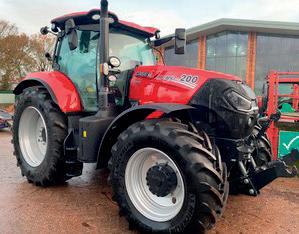
NEW CASEIH PUMA 200
POWERSHIFT 50KPH. Choice of specification, call for details & price. From £123,000 + vat
NEW CASEIH FARMALL 120C
PowerShuttle 40kph. Air conditioned cab, passenger seat, 540/65 x 34 tyres. With CaseIH / MX U406 + Loader to fitted £62,500 + vat

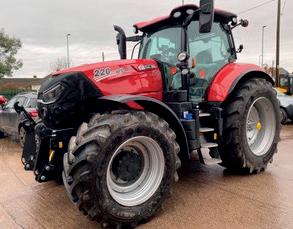
NEW CASEIH PUMA 220 POWERSHIFT 50KPH. Front linkage & PTO. Dual Motion seat.
NEW CASEIH VESTRUM 130 Active Drive 8 40kph. Front linkage, Full suspension, Air conditioned cab, passenger seat, Pro700 screen, 600/65 x 38 tyres. £79,000 + vat


26050KPH. AFS Connect. Front linkage & PTO. 650/85 x 38 tyres.



Making more from existing machinery is a current consideration for all businesses, Toby Whatley looks at the options for improving work lighting.

Significant increases in the cost of new machinery has resulted in many businesses running older kit for longer, or looking to achieve more with fewer tractors.
Regarded by some as a modern classic, the 6030 and 7030 series tractors from John Deere were popular tractors for a wide range of farm businesses, with several thousand machines sold in the UK during its near-decade production run.
The machines have proved very reliable, with many units regularly operating with odometers showing
five-figure engine hours. A downside of these machines was the halogen work lights arrangement on the cab and for some users on the rear wings and front beltline.
When new, the arrangement was effective, but with corrosion of the internal reflectors and clouding of the lens, many users have found this nearly 20-year-old design somewhat lacking for nighttime work, particularly compared to its more modern rivals.
To address this through providing improved vision and potential safety, Dutch machinery and work-
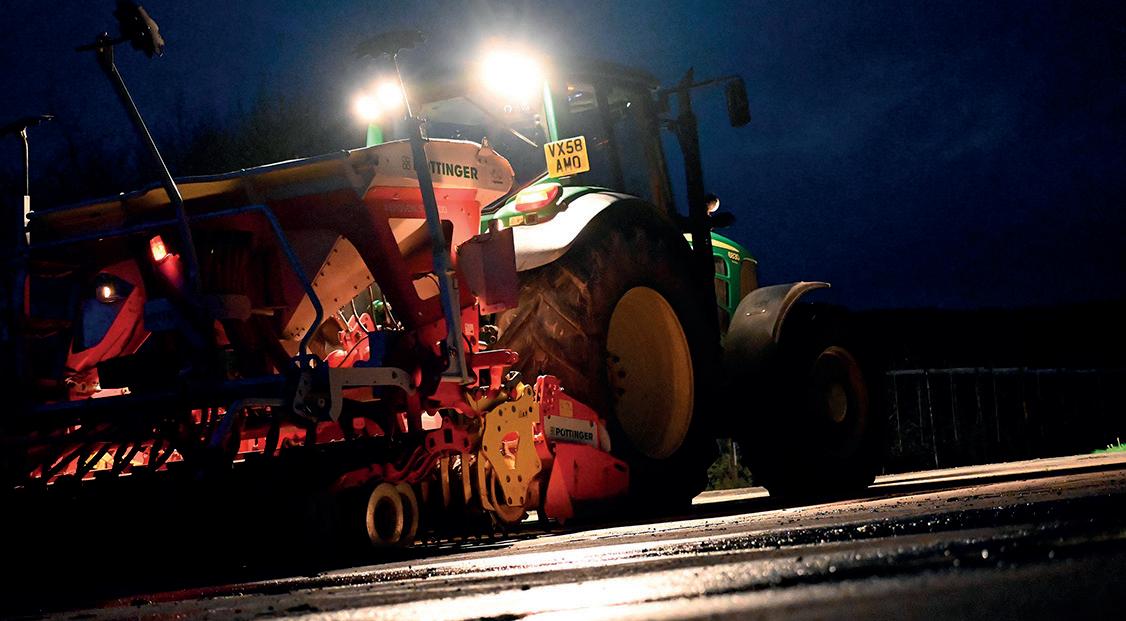
shop part supplier Kramp has introduced an LED lighting conversion as a direct replacement for the halogen units.
To find out if the change was worth the investment, Farmers Guardian fitted a set of 10 units to a 2008-build 6830 to see what it could offer.
Kramp supplies the LED lighting units individually, which include a mounting bracket and connector with negative and positive leads.
The life-sealed assemblies occupy the same dimensions as the original halogen units and can be supplied with either a black or silver outer, depending on the specific machine.
John Deere used a Delphi-type H9 waterproof connector for the original units, with the Kramp version fitted with a Deutsch two-pin design.
To overcome this, users have two options for a workaround. The £220 cheaper solution is to cut the existing male connection from the outgoing halogen lighting and splice this onto the negative and positive cables provided with the LED unit.
A quicker and potentially more reliable solution is to use an addi-
The original halogen lights, effective when first purchased, but now starting to show their age, provided a warm yellow hue which quickly reduced around the machine.
tional connection lead which converts between the two connection types and allows an electrical-tool free fitment of the lighting, but does require the additional purchase of a connection lead for each light.
This solution using the connection leads worked well for the cab lighting, as the space revealed under the cab top was sufficient to connect to the existing wiring harness and pass the cables through the weatherproof rubber glands behind each lamp. The excess cable generated by the conversion leads was comfortably lost into the cab roof void.
For users with machines fitted with beltline- and rear wing-mounted lighting, the additional cable could require some more creativity to hide into the space available, with some additional cable left exposed due to the position of the larger Deutsch connection within the circuit.
Overall, this was not a major problem, but for users working in conditions where a cable could be caught and pulled by some rogue vegetation, some extra cable tying would be sensible.
Mechanically, the replacement
The replacement LED assemblies gave a significant improvement in both intensity and lighting depth, indicated by the clearly illuminated bales at the rear of the machine.

units used the same brackets and fittings as the original on the eight cab lights. The lower units required the installation of the provided stainless brackets due to the cable routing being slightly different between the two designs.
Each unit has a claimed luminous output of 4,500 lumens and provides a wide-flood pattern with a full reach of 100m, and a working reach of 55m.
Electrical draw for the LED units is 40W, slightly lower than the 55W used on the Hella manufactured originals.
The main visual difference between the original and LED replacements is the removal of the defused lens.
Kramp says the layout of the four LEDs within the unit, and the mirror pattern prevent the need for this lens, with a uniform flood of light being provided.
n Kramp LA10416G 40W, 4,500 lumens wide flood lamp: Retail as tested £55 n Kramp KAH9DT02 adaptor cable Delphi H9 to Deutschtype connector: Retail as tested £22


COMPARING the night-time visuals of the two lighting systems, the increase in intensity and depth of light provided was remarkable. An indicated reading of luminosity taken six metres from the front of the machine provided a nearly fourtimes increase in light intensity.
Seen from above, the change in light depth and concentration of white light dramatically adjusted the area the operator could see with greater clarity. The total cost to
complete the change for the 10 units on the test machine was £770, which included the adaptor cables. Fitting the lights required a labour time of about three hours.
Operators of 6030 and 7030 series tractors, alongside other halogen-illuminated machinery, would be sensible to consider the lighting kit to improve the working capacity, as the overall cost was relatively low for the increase in lighting performance it offered.
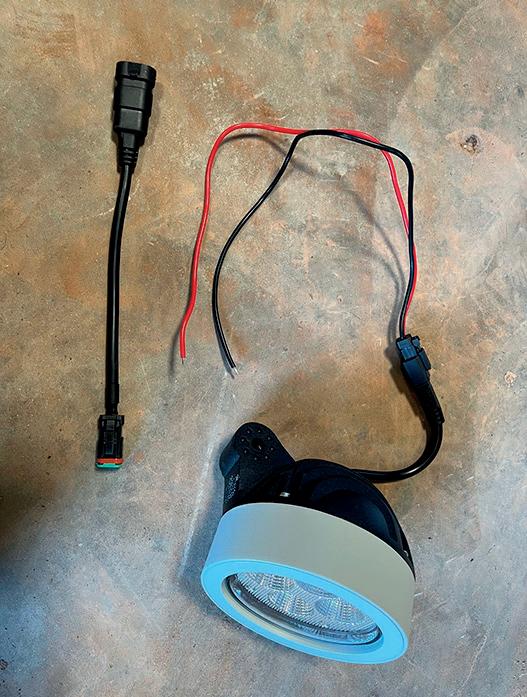
LED units are supplied with a Deutsch-type connection and live cables. An additional connection cable can be added to convert the connection for the John Deere wiring harness.

The beltline replacements need a new support bracket, with the additional cable creating a larger loop externally.





Spring brings opportunities for farmers to get the most out of grass swards by adding new seeds or different varieties. Jane Carley finds out more.





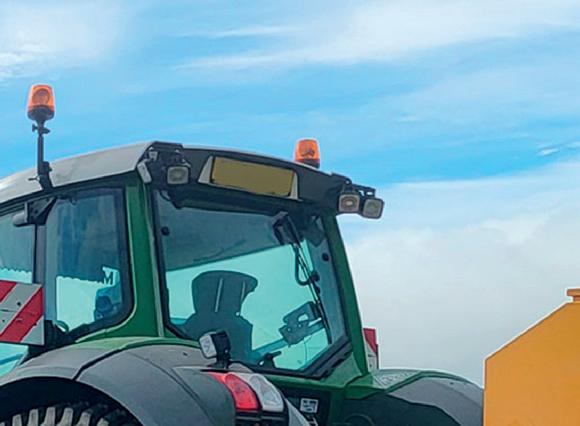





Using a grassland seeder to put fresh seed or different varieties into an existing sward is a time-honoured technique for improving pastures and, with the Sustainable Farming Incentive (SFI) scheme favouring maintenance and improvement of grassland, there is more interest than ever.
Chris Gardner, a partner in Gardner Contract Services (formerly Mill Farm Ashorne) and recently elected vice-chair of the National Association
of Agricultural Contractors, relocated to mid-Devon last year.
He is seeing demand for his overseeding service, using a Vredo Agri Twin 3.58.75 disc seeder and eightmetre Opico grass harrow with Air 16 seeder.
Seeding is one of several niche operations offered by Gardner Contract Services, alongside specialist vegetation control with a Spearhead Flex 890T reach arm and a range of tools including a saw blade.
Mr Gardner says: “Overseeding lends itself to SFI options such as

SAM 3: Herbal Leys, which is also the Countryside Stewardship growth stage 4.
“With a payment of £382/hectare/ year it covers seed and contract costs and produces a surplus, so it is a good way of gaining subsidy support.”
Farmers are also looking to increase the feed value of swards on permanent pasture by stitching in shorter life varieties or clover, he says, while on dairy leys, overseeding rather than ploughing allows Italian ryegrass to be topped up rather than going to the expense of starting from scratch.
“We are in a new area of the country, but hope to hit the ground running. We have already got the kit, so have not had to invest in machinery for a service which we expect to be popular.”
The Vredo Agri Twin overseeder is manufactured in Dodewaard in the Netherlands and is part of a long-established range. Mr Gardner has used the machine since 2012 and purchased the first unit sold in the UK.
“The individually-sprung twin disc design means that there is no separate coulter which could damage the existing sward,” adds Mr Gardner.
“Vredo also uses a narrower spacing than its competitors, so you rarely need to ‘cross stitch’ the seed in unless aiming for a particularly high seed rate.”
As standard, the Vredo Agri Twin

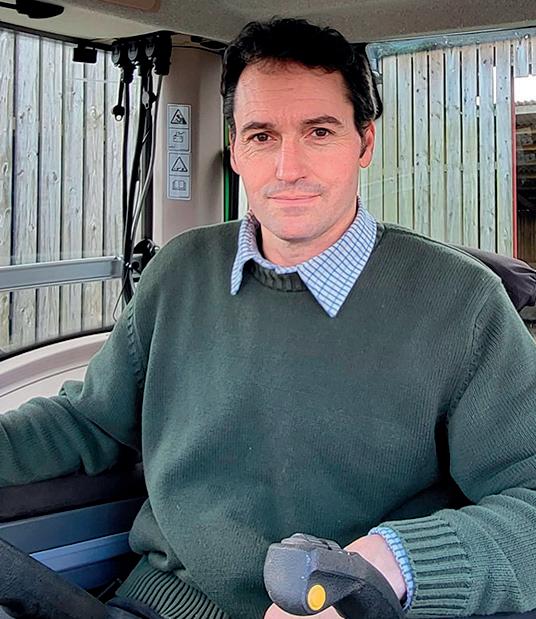
uses a mechanical ground drive to an infinitely variable gearbox, but he has modified his machine to an electronic drive, working from the radar speed signal in the tractor.
“This is much more accurate. It also means that I can easily increase the seed rate from the cab for a sparse patch, such as a gateway, and can monitor the flow of seed, although I have also added a camera to the hopper.
“The mechanical drive is fine, but you have to be very diligent in your calibration,” he says.
Seed rates depend on the seed types, but generally 24kg/ha for overseeding, or 31-36kg/ha reseeding. The occasional sports field contract requires higher rates.
“The price of seed means that accuracy is very important; I use a fine seed metering wheel for clover or wildflower seeds which can be minuscule
and some stewardship mixtures need extremely careful metering.”
The old adage of standing a seed on its ‘tail’ to determine the right seeding depth applies; he adds, but small seeds need to be almost on the surface to germinate successfully.
Depth is adjusted on the top link, which tips the seeding unit back or forwards so that the galvanised ‘fingers’ between each disc expose more or less of its diameter to the soil surface.
Mr Gardner says that the Vredo has proved extremely tolerant to the variable quality of some seeds and the debris contained within it.
“But I am careful to avoid blockages by getting the drill fan running before I start drilling – this avoids a build-up of seeds, and blowing air down the pipes gets rid of any moisture which can lead to seed lodging.”
Filling is one of the most time-consuming parts of the operation, he says, with most grass seed in 20kg bags which have to be carried up the steps. The occasional larger bag is bucketed in.
Output depends on the size and shape of the field; but with ballast rollers fitted on the 5.8m-wide unit it needs a decent-sized tractor with plenty of lift capacity up front, especially on the Devon banks.
Tractor of choice is a Fendt 828, which Mr Gardner thinks is short enough to cope with the narrow lanes and gateways. The drill folds to 3m for transport.
“The Vredo has been very reliable and a good solid machine. I have had to replace the galvanised fingers and found that the flexible seed pipes became brittle from UV light and then perforated.
“I have switched them for food grade pipe, which I came across while working in motorsport where it is used for the hoses on fuel rigs.”
Parts come direct from a Vredo importer and Mr Gardner also maintains
Where seed is placed into a tilth, the Opico grass harrow and seeder is a good combination, says Chris Gardner.


a good relationship with the Dutch manufacturer, providing valuable feedback to the company.
The Opico harrow and Air 16 seedbox have also been modified to run off the tractor speed signal for accuracy and to avoid the risk of the ground wheels being fouled by debris.
“Modern tractor radar systems are easy to use and you just plug into the tractor when using the drill,” he adds.
While the Vredo is ideal for established pasture, the harrow-based Opico seeder comes in where the farm plans to harrow anyway or wishes to plant into a tilth.
“The random seed placement avoids the rows of bare soil that you get from something like a Vaderstad, so growth is more natural and there is less risk of poaching. The only downside is that you cannot put tramlines in, but they could be set up with the fertiliser spreader.”
Timing and conditions are key to the success of both processes, he adds.
“We can work in spring, summer or autumn, but need a small amount of moisture, although the Vredo will go into hard ground. There should not be too much grass growth, so the sward needs to be grazed off or mown first.”
Mr Gardner says that pH and indices should be considered in the variety choice, which most customers make with the help of their seed supplier or agronomist.
“If the soil is not right, the grass will
Swards should be grazed, mown or, as shown here, sprayed off to allow the new seeds to establish.


not get away, but most dairy farmers treat grass more as a crop now.”
Soil temperature is significant and needs to be at least 10degC, but Mr Gardner thinks that in this soggy year, wet ground will be more of a delaying factor.
“Normally you need quite a few warm days before going in with the seeder; late frosts can damage the emerging seeds. If you were thinking about harrowing anyway in spring it is worth considering applying some seed at the same time.”
He adds that there is some risk to overseeding in autumn, but says: “Try to get some seed in before temperatures drop; if it does not take, there is time to re-do it in the spring ahead of the silage campaign.
“We also have success going into silage stubble, a good time to top up the sward in the third year of the ley.”

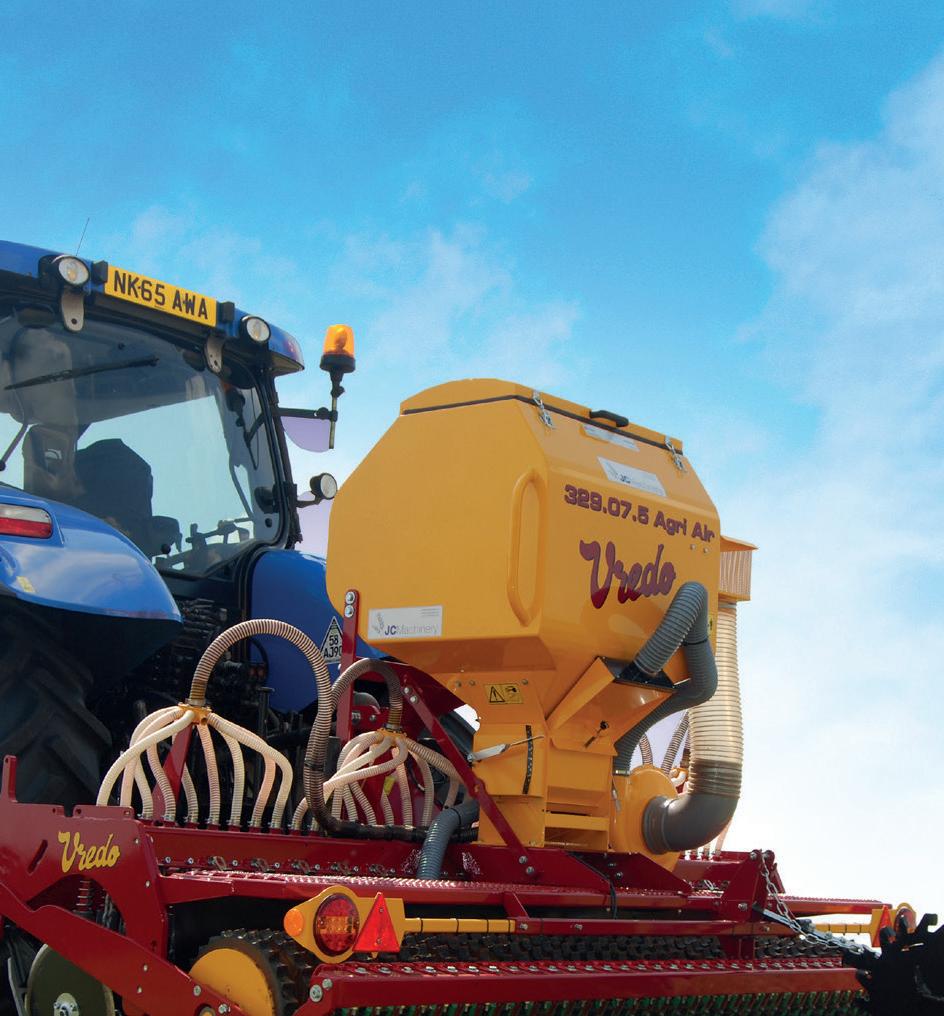


Achieve germination rates of up to 96% the highest germination rate in comparison to other systems

Vredo range of overseeders quick, precise operation, saving you up to 80% in time and fuel compared to renovation through ploughing, cultivating, levelling, sowing and rolling. Call 01260 224 568 or visit www.campeyagriculture.com

Recently appointed John Deere’s agriculture and turf business president for Europe, Asia and Africa, Deanna Kovar invited a small group of European journalists to a Q&A session. Farmers Guardian was among them.
Deanna Kovar grew up on a Wisconsin dairy farm and studied agricultural business management at the University of Wisconsin.
Having primarily worked in and latterly led John Deere’s developments in precision agriculture, in November she became head of its agriculture and turf business across Europe, Asia and Africa.
QWi th John Deere having spent recent years reshaping its dealer network, what do you expect from the dealerships you now have?
A
For me it is about capabilities and strong customer support –in technology as well as engineering.
Today’s dealers are no longer simply horsepower sellers, now they have a broader role in helping our customers understand technology that helps reduce inputs and increase yields through precision and better-informed decisions.
Today’s dealers need to not only help maximise the ‘uptime’ and reliability of customers’ equipment, but also help them make use of the technology that enables its use to best effect.
Q
Wh at will be John Deere’s future tractor power strategy?
A We are already displaying our intentions at international shows, in both sources of power and how that power is transmitted.
At Agritechnica 2019 we won a gold medal Innovation Award for eAutoPowr hybrid transmission technology that helps put the power of our current engines down even more efficiently.
In terms of fuel, our strategy is clear – we will electrify our products up to a certain size and we have committed by 2026 to a fully electric 100hp tractor ready for global sales.
We are investing in hybrid technology and are convinced that agriculture can help meet the carbon challenge with bio-based fuels. We displayed an ethanol engine

at Agritechnica 2023 and are working with energy companies to show how we can grow enough fuel as well as food. We also believe liquid fuels are where the near-term future lies, for reasons including on-farm and on-vehicle storage.
Q Ar e you afraid your dealer restructuring strategy could backfire with farmers who are loyal to a dealer rather than a brand?
AI would agree that many farmers are more loyal to their dealer than a manufacturer.
We are grateful for what our dealers do in creating the link between us and our customers, both when things are going well and when there are issues.
Our strategy is for local dealers with bigger capabilities. In most cases, there is still the same Deere sign in front of the same buildings, often with the same staff.
The customer should be supported better by the broader organisation behind the dealer.
Do we always get it right? Probably not. But we try our hardest and it is people and relationships that matter most.
At the end of the day, no chatbot is going to help a farmer with their equipment. We remain focused on people who understand farmers’ businesses and what suits their individual needs.
QFa rmers and even dealers say agricultural equipment is getting increasingly expensive, so much so that some are getting locked out of investment. How do you respond to that?
A Ultimately, machinery has to return value, so our focus is on the value our technology developments create and how this supports farmers.
At the same time, we are bring-

ing technologies to market in a new way.
Our vision for spraying technologies, for example, will be sold on a ‘solutions as a service’ basis, with a lower up-front cost, meaning we sell the hardware to the farmer to enable it, and then allow them over time to pay us as they use it.
This should make technology more accessible to more farmers. This is how we intend to give more farmers access to more technology, and you will see us do that with further products as well.
Autonomy will be an example of that, with functions such as AutoPath guidance, AutoTrac turn automation and MachineSync connectivity, being charged per machine, per year.
READ MORE ONLINE
A longer version of the interview can be found on the Farmers Guardian website, visit: farmersguardian.com
PRODUCTIVITY and returns on Welsh beef farms can be boosted by actions to further reduce calving intervals and better manage costs, new data suggests.
The average calving interval for beef dams in Wales was 419 days for 2023, almost four days shorter than 2022’s average and seven days shorter than 2013’s figure, according to the latest data from the British Cattle Movement Service (BCMS).
Glesni Phillips, of Hybu Cig Cymru (HCC), says: “Things are improving but, despite the progress seen over the last decade, the BCMS research indicates the majority of farms will need to do quite a bit more if they are to reach the sought-after 365-day between calvings target.
“And, similarly, more can be done to reduce costs.
“Our latest Farm Business Survey suggests there is a huge gap between the top third of farms and the bottom third but, with change, producers really can find a big improvement in returns.”
Ms Phillips says reproductive efficiency is not only fundamental for profitability and productivity, but can also support a reduction in the herd greenhouse gas emission levels.
She says: “The main output from a beef suckler herd is obviously the suckled calf and therefore good cow management is absolutely the key to optimising herd fertility in order to produce a healthy suckler calf each year.
“By improving the reproductive efficiency of the suckler herd, each farmer would also help to manage on-farm costs and the overall profitability of the business.”
HCC’s latest Market Bulletin estimates the average age at first calving can also impact the suckler herd’s reproductive efficiency.
In 2023, the average age at first calving for beef dams in Wales stood at 975 days (or 32.1 months).

BCMS research indicates most farms will need to do more to reach the sought-after 365-day between calvings target.


Ms Phillips says: “This is a vast improvement when compared to 2022 – some 18 days younger – and when compared to the average age of 1,009 days recorded for 2013, but leaves some room for improvement to reach the industry target of calving nearer to 24 months, or 730 days.”
The latest data also reveals that the top third performing herds had an overall cost of 139.2p/kg and produced more kg per cow than the average performing herds at 307kg.
The top third performing herds recorded slightly lower costs for both variable and fixed costs, which then led to an overall difference of 180p/kg between the top and bottom third performing herds in terms of total costs.
“As the market returns were similar for all three categories of performers, this does clearly suggest that the focus should be on managing costs on-farm in order to maximise the profitability of suckler herds in Wales,” says Ms Phillips.
Our latest Farm Business Survey suggests there is a huge gap between the top third of farms and the bottom third
GLESNI PHILLIPS
UK Dairy Day will host the national shows for the Holstein, Ayrshire and Brown Swiss dairy breeds at the tenth anniversary event on Wednesday, September 11, taking place at the International Centre, Telford.
Ian Collins, owner and breeder of the Yorkshire-based Churchroyd herd, will judge the Ayrshires. He has been involved with the Ayrshires Cattle Society since he was 10 years old.
He has been on several breed panels and has judged the Ayrshire
calves at the National Calf Show, as well as inter-breed classes in the UK and overseas.
Blaise Tomlinson has been selected by the Brown Swiss Cattle Society to judge its national show.
Mr Tomlinson, along with his wife Deborah, runs the Sandyford herd comprising 200 Holsteins and 50 Ayrshires in Loughborough, Leicestershire.
Mr Tomlinson has judged at many local and national shows all over Great Britain and Ireland, as
well as Australia, South Africa and on the Island of Jersey.
The National Holstein Show judge is Marcel Egli from Lucerne, Switzerland.
With a wealth of judging experience behind him, Mr Egli works for the breeding association, Swiss Herdbook, as a breeding adviser throughout Switzerland.
The cattle schedule for UK Dairy Day will be released at the beginning of July, with the stall booking deadline being August 2, 2024.


The National Beef Association’s Beef Expo was held at North West Auctions J36, Crooklands. Angela Calvert and Katie Fallon report.
rPepper and Electra top championships
HEIFERS led the way in the commercial cattle show at Beef Expo, taking the supreme champion and reserve awards.
Claiming overall title under judge Frank Page, Elkington, Northamptonshire, was Pepper, a November 2022-born heifer from Neil Slack, Penrith, shown by his niece Elizabeth Haughan.
Weighing 589kg and by the Limousin bull, Kinniside Novel,
Commercial cattle (Judge,F.Page,Elkington) Supremeandfemale,N.Slack,Pepper;reserve andres.fem.,S.andL.Bett,Electra;male, Dufton,SmallandWilkinson,Houdini;res., J.M.andS.M.Rolands,FistFullofDollars. Baby beef (J.Lyon,Bourne)Sup.,G.Smalland B.Wilkinson,AKindofMagic;res.,K.Ludgate, SexyPants. Young handlers (J.Lyon)Sup.,O.Matten;res., E.Haughan.
the heifer was bought in September at Carlisle for £2,000 from breeders Malcom Telfer and Helen Claxton, Northumberland.
Standing reserve heifer and reserve overall champion was Electra, an April 2023-born 529kg heifer from Stewart and Lynsey Bett, Stirling.
By Ronick Red Hot and bred by Balfour Baillie, Orkney, Electra was bought for £5,000 at Thainstone last September and was

then champion calf at the Scottish Winter Fair.
Mr Page said: “The heifers outshone the steers on this occasion. My champion was an outstanding butcher’s heifer – very stylish but clean and full of meat with length and top.”
April 2023-born 613kg Houdini by Carnew Millreef, whose dam was a previous Beef Expo winner, claimed the steer championship for the Dufton, Small and Wilkinson team, Leyburn, and will now join Mr Dufton for the Scottish summer show season.
Fist Full of Dollars, an April 2023-born steer, bred by I.P. Jones, Corwen, and exhibited by J.M. and S.M. Rolands, Llanidloes, took the reserve title, shown by Steven O’Kane.
The son of Ampertaine Elgin had been baby beef champion at the English Winter Fair last year.
Jonathan Lyon, Bourne, judged the baby beef section, awarding the championship to A Kind of Magic, a September 2023-born

Overall and female South Devon performance champion, Cilgwrrwg Hastey, bred and exhibited by Richard Hartshorn,
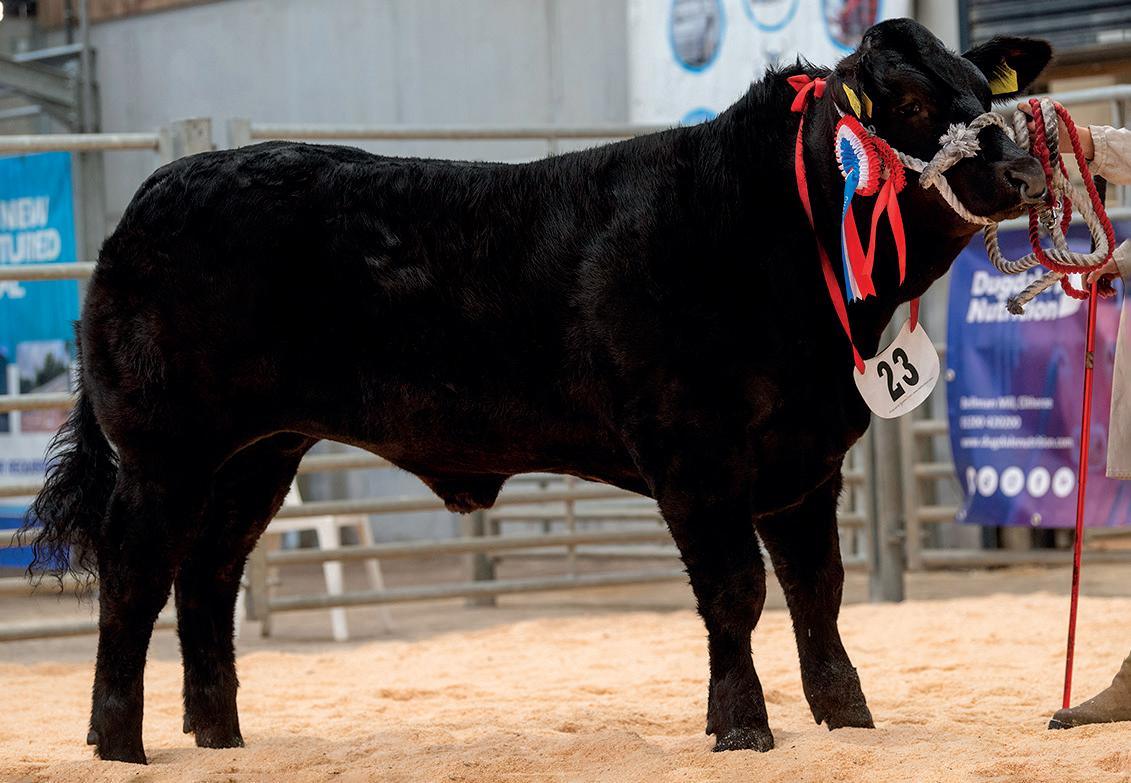

333kg heifer by Trueman Idol, from a prolific show-winning cow family, bred and exhibited by Gareth Small and Beth Wilkinson. In reserve was Sexy Pants, a June-2023 born 410kg heifer from Kevin Ludgate, Bedfordshire, and shown by James Ludgate. By Hightown Jacko, it was bought from breeder John Smith Jackson for £2,200 in March at Carlisle.
The winning baby beef steer was June 2023-born 416kg Pocket Rocket by Mereside Lorenzo and bred by J.M. and A.M. Lewis, Carmarthen. It was exhibited by Stewart and Lynsey Bett, who bought it for £2,600 at the Brecon
IN a series of seminars held at Beef Expo, audiences heard how some farmers were tackling the suckler industry without subsidies, updates on a bluetongue vaccine and results from an industry survey:
FOCUS ON A SUCKLER COW WHICH CAN USE THE FARM n SPEAKING at a seminar on the future of the suckler industry after the demise of subsidy payments, the farmer panel shared their advice and experience on running a profitable beef enterprise.
Andrew Robinson, beef farmer and head of agriculture at Armstrong Watson, told attendees that suckler herds could be profitable, but in many cases, there was too much focus on selling price not gross margins, and not always utilising the right breed for the system.
Mr Robinson advised farmers to focus on a breed of suckler cow which can use the farm, rather than spending a lot of money trying to do something which the farm cannot do.
He said: “Costs seems to run
show potential sale in February, where they had judged, awarding it the steer championship.
The winning young handler was 15-year-old Olivia Matten, Thirsk, with Elizabeth Haughan taking reserve.
Beef Expo once again hosted the national South Devon performance championships, which were judged by Adrian Rundle, Newquay, on a combination of inspection of the animals and their performance (quality beef index for bulls and suckler replacement index for females).
The overall and female champion-
out of control in many systems; you do not need a brand new shiny tractor to pay for your suckler cows.”
Ruari Martin, beef farmer at Castletown Estates, Cumbria, said that due to the reduction in support payments, the team at Castletown Estates had looked at what the right activity was for each piece of land on-farm.
He said in some cases land was taken out of production and put into environmental schemes, with the money reinvested into the core farming business.
He said: “We quickly realised that the business would not have been viable if we had carried on.
“I would rather try something different and, if it does not work, understand why it has gone wrong.”
Mr Robinson said: “You can almost split farming into thirds, the bottom third have put their heads in the sand, the middle know they have to do something and are starting to look at the Sustainable Farming Incentive, and the top third are looking at what the market wants, not doing something because they always have done it.
ship went to Cilgwrrwg Hastey, a January 2022-born heifer by Brafferton Kudo 7, out of Cilgwrrwg SAS Zoom, bred and exhibited by Richard Hartshorn, Telford.
Mr Telford also took the reserve overall and reserve female titles with Cilgwrrwg Hope, a December 2022born daughter of Grove Bellerophon 3 out of Cilgwrrwg SAS Eleri.
The male champion was March 2022-born Coton Herman 4 by Langham’s Herman out of Coton Buttergirl 4, from Chris Page, Banbury.
Coton Raider 3, a Providence Raider son from the same home, was in reserve.
“We are all emotional about farming, but it is a business. In any other business, if a machine did not work you would get rid of it. But we are caught up in the emotions of it because that is what granddad did.”
n IN a discussion about the UK’s border controls in relation to disease threats to the livestock industry, Farming Minister Mark Spencer said bluetongue was not just the next threat, but it was already here.
Mr Spencer also told audiences that an active vaccination for bluetongue was not expected until November this year, by which time ‘it could be too late’.
He explained there was currently an active discussion taking place surrounding the control of the disease and encouraged farmers to share their views and engage in the process.
He said: “Bluetongue cannot be stopped by tightening the borders. We need to think more about restrictions and the impacts this could have on agricultural shows.”
INDUSTRY SURVEY LOOKS AT THE STATE OF THE BEEF SECTOR
THE findings from an industry survey of beef producers highlighting some of the main challenges the industry faces were discussed in a panel session at the event:
33% of beef enterprises make a profit every year
66% of producers think their business will survive with difficulty without subsidy
33% of producers have no succession plan in place
Government policy is seen as the greatest threat to beef enterprises
13% of producers saw no opportunity for their beef enterprise over the next two years
36% of beef farmers have grown their herd over the last five years
AN agricultural risk expert is advising farmers to check their silage clamps following a string of hefty fines for silage pollution.
Farmers in Devon, Somerset and Northern Ireland have recently been ordered to pay fines ranging from £5,000 to £20,000 after silage clamp leaks polluted local watercourses.
Rupert Wailes-Fairbairn, of insurance broker and risk management expert Lycetts, says: “With the silage season upon us, it is vital that farmers check their silage clamps now, before
the first cut, to prevent highly-toxic run-off from entering nearby waterways. It is essential that all parts of the silage storage system, from pipes to tanks, are well maintained. Silage clamps and all drainage systems
DAIRY farmers could prevent thousands of pounds worth of milk yield losses this summer by improving ventilation, an on-farm study has found.
The Animal Centred Controlled Environment for Dairy project, supported by Innovate UK and carried out by Galebreaker and Smartbell, analysed cow behaviour and productivity on two dairy farms in the
GRASS GROWTH ACROSS THE UK
Scotland
17.8kgdrymatterperhectareperday (7.2kgDM/acre/day) 27.3 6.3 3.9
The North
43.9kgDM/ha/day (17.8kgDM/acre/day) 27.9 6.1 5.3
Wales
29.8kgDM/ha/day (12.1kgDM/acre/day) 25.4 7.6 2.5
The South
54.7kgDM/ha/day (22.1kgDM/acre/day) 29.5 7.1 4.9
Grass growth Soil moisture (cb)
Soil temperature (degC) Rainfall (mm per week)

Region Seven-day
Dry matter 18.8 per cent
Metabolisable energy 11.2MJ/kg DM
Crude protein 18.7 per cent
Sugars 10.3 per cent
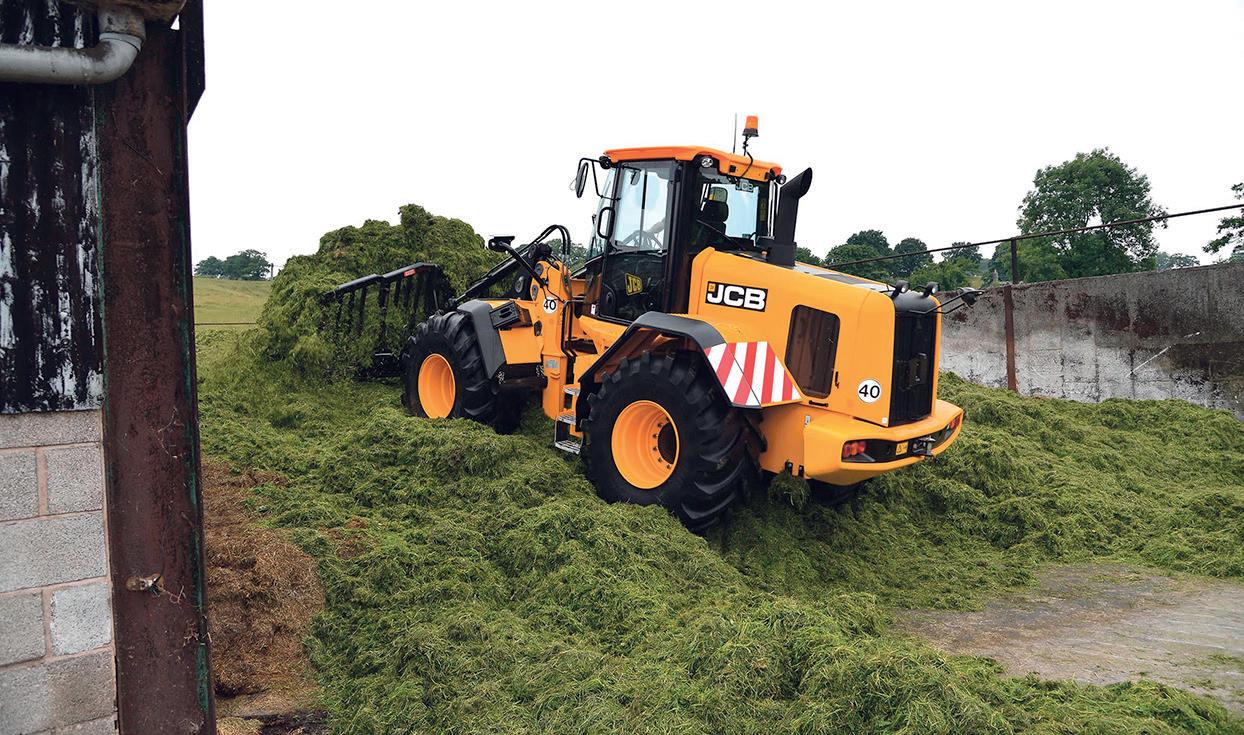
Farmers are being advised to check their silage clamps.

should be carefully inspected to make sure they are airtight and leak-free.”
A deep clean can more easily identify leaks, but farmers should be careful not to damage the protective lining, asphalt or concrete surfaces, he says.
He adds farmers should check the clamp floor is sound, cracks are properly repaired and wall coatings and overlapping protective films are intact.
He says: “Collection channels and drains should be regularly cleaned out to ensure they are watertight and drains flushed with water before filling the clamp, to ensure they are free from leaks or blockages. After filling it, effluent levels should be regularly monitored and nearby watercourses checked for signs of pollution.”
September 2023 heatwave. Andrew Gardner, technical director at Galebreaker, says Smartbell eartag technology and CCTV footage was used to monitor cow behaviour, body temperature and rumination activity.
He says cows housed in a cubicle shed with a mechanical ventilation system were more resilient to heat stress and able to hold off for longer
before drops in milk production were seen.
“These cows were then found to recover within one or two days following the heat stress event, minimising losses. Cows under the mechanical ventilation also spent more time lying, benefiting from the ‘chill effect’ of the ventilation drawing in fresh air from outside,” he adds.
BULLETIN 6
Week beginning April 29
■ Recorded growth rate was higher than predicted in north and south England, reflecting the improved weather conditions
■ Herbage quality remains very similar for all parameters
■ Continue to graze firmer fields first and identify and remove any heavy covers which can be taken off as paddock silage; this will
help to retake control of the increasing average cover across the grazing area and ensure there is a supply of quality grass at the next grazing
■ Growth is set to increase markedly over the next seven to 14 days, so plan now to increase the grazing pressure to make best use of this surge
GrassCheckGB is a collaboration between The UK Agri-Tech Centre, Agri-Food and Biosciences Institute, Rothamsted Research, AHDB, Hybu Cig Cymru, Germinal, Handley Enterprises, Sciantec Analytical, Yara, Pilgrim’s UK and Quality Meat Scotland. Regular updates will appear in Farmers Guardian.
Keeping laying hens for longer can help reduce the carbon footprint of egg production through increased lifetime performance. Farmers Guardian reports.
With most greenhouse gas emissions in layer production linked to feed formulation, the most direct way of reducing the environmental impact of egg production is through feed and adopting better feed choices.
That is the advice from poultry technical manager at Trouw Nutrition GB, Chloe Paine, who says to achieve a longer laying cycle and increased efficiency, it is important to improve feed and feeding techniques.
She says: “Understanding the environmental footprint of poultry feed enables farms and feed mills to optimise their operations and reduce overall impact.”
The objective of any diet is to meet the nutritional requirements of layers as efficiently as possible, adds Ms Paine, matching nutrient levels to requirements and selecting the optimum raw materials.
Therefore, it is essential to focus on meeting the precise requirements for production, health and longevity, delivering the correct nutrients in the correct amounts at the correct time.
Ms Paine says: “It is also necessary to focus on egg quality, particularly eggshell quality, as its decline is a major reason for flock depletion. Producers should concentrate on the areas and stages of production where layers require the most support.”
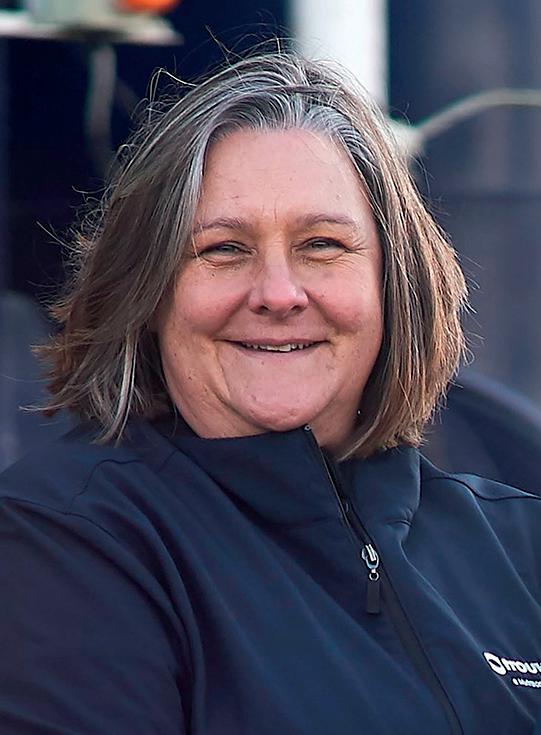


Increasing longevity involves a multi factorial approach beyond feed formulation.
She advises managing for target egg weight throughout the laying period is essential, as controlling egg weight can help avoid problems at a later age, which threaten the overall laying cycle length.
Ms Paine says adjusting digestible amino acid density through phase feeding and formulating based on amino acid density rather than crude protein targets, are effective strategies.
“Reducing crude protein levels and including higher levels of synthetic amino acids, reduced in a safe and balanced way so as not to compromise performance, can lower nitrogen emissions, and contribute to improved sustainability,” says Ms Paine.
“Knowledge of amino acid requirements and dietary amino acid supply is crucial for reducing crude protein in the diet. Careful monitoring of feed intake is also important, so that diet density can be adapted to avoid nutrient intake drops or over-supply.”
Ms Paine adds eggshell formation is a demanding mineralisation process, with a high calcium requirement that cannot be met by feed-supplied calcium alone.
She explains this triggers the hen to draw calcium from its calcium reserves in the medullary bone.
“Relying on too much use of the medullary bones leads to a loss of phosphorus and bone strength, which works against long-life layers.”
Due to the time an egg is laid and the time a developing egg spends in the shell gland, shell formation occurs mostly during the night in the absence of feed intake and thus dietary calcium.
“To keep layer hens longer it is important to pay attention to maximising the absorption of calcium.
“Ensure the correct level of dietary calcium is available at each phase of lay, adjusting for hen age and feed intake, as calcium absorption and utilisation decrease with age.”
Ms Paine adds: “To increase the amount of calcium available at night to improve eggshell quality, we need to ensure the correct particle size of the calcium at each phase of lay with a balance of fine and coarse limestone.”
Additional support to the hen can be provided by adopting a split feeding strategy, where hens are fed a
morning diet and an afternoon diet with different nutrient levels, especially calcium and phosphorus. This approach supports specific nutrient requirements and timing, improving performance and sustainability. Therefore, hens consume less feed and use nutrients more efficiently, resulting in fewer nutrients lost and a reduced carbon footprint.
Ms Paine says increasing longevity involves a multifactorial approach beyond feed formulation, with a healthy gut and a healthy liver ensuring optimal nutrient and mineral absorption, essential for shell quality.
Along with calcium, microminerals including zinc, manganese and copper also influence eggshell quality, therefore, supporting gut health and liver health is good practice and can enhance eggshell quality.
Ms Paine says: “Sustainable layer production requires attention to detail in feed management, nutrient requirements, egg quality and overall hen health.
“These practices contribute to environmental sustainability, while also enhancing production efficiency and egg quality.”
A passion for high-quality and locally-sourced produce has seen Matt Silvester and Helen Freeman establish a herd of Saddleback pigs. Katie Fallon finds out more.
With backgrounds in construction, finance and hospitality, first-generation farmers Matt Silvester and Helen Freeman began their journey into farming in 2020 after their shared passion for food security saw them establish their own pig enterprise.
After meeting in a pub in Hampshire – which Ms Freeman was managing at the time – the couple decided producing high-quality, locally-sourced produce was something they both wanted to explore.
Mr Silvester says: “I had moved into finance, but I was not enjoying it; compliance was not for me. I thought there had to be more to life, and at the same time I was becoming more aware of food security.”
After talking to some local landowners, the couple were offered a small patch of Site of Special Scientific Interest woodland in North East Hampshire.
Mr Silvester says: “It was very much a hobby farm to start with. We thought pigs were best suited to the environment and we liked Saddleback pigs as they were hardy and had a good temperament but were also a rare breed.”
The couple purchased 12 Saddleback weaners from a breeder in
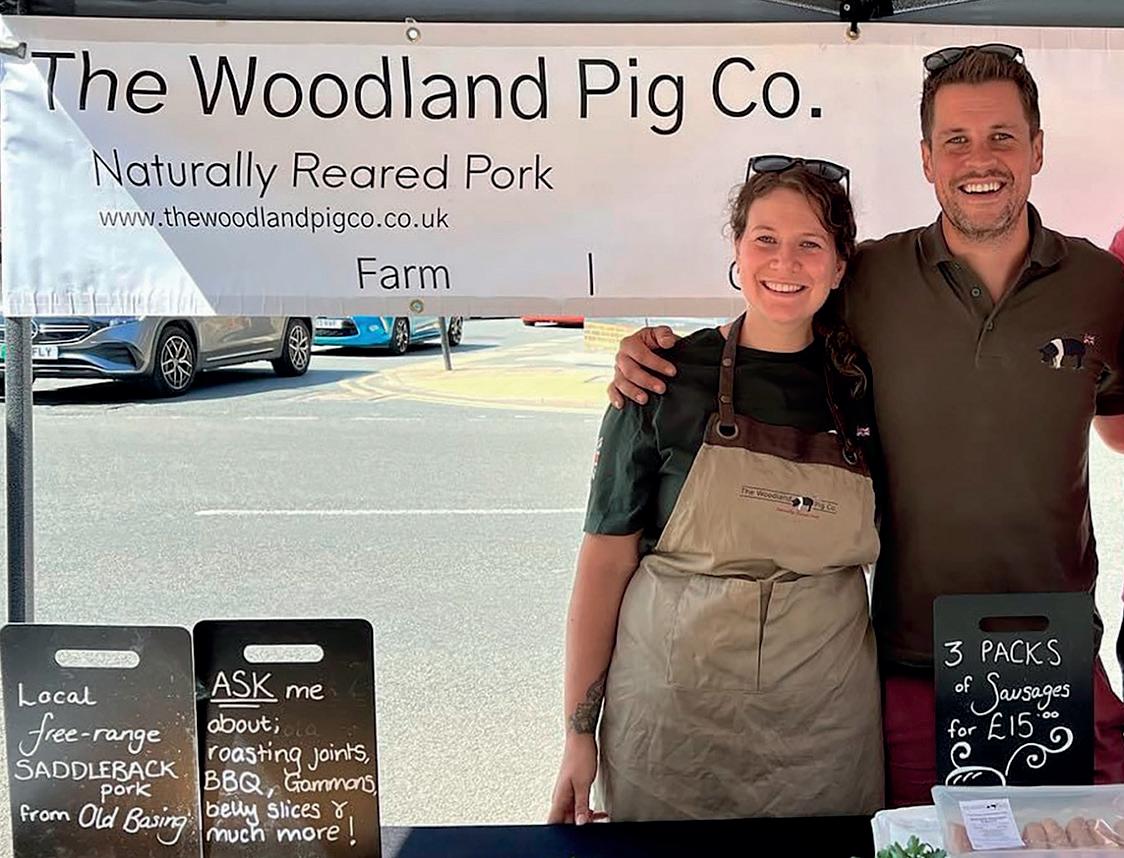
Helen Freeman and Matt Silvester started their pig enterprise in 2020.

Norfolk, which they reared and sold direct to the public. They then began breeding their own pigs and moved to a larger woodland area a year later with six gilts; their first batch of breeding sows.
Ms Freeman says: “We very quickly went from keeping between 10 and 15 pigs in total to almost 50 piglets within the space of a week.”
The couple then started supplying meat to the local hospitality sector, selling direct to the public and provid-


About 400 gilts and boars are reared across an arable rotation including wheat, barley, maize, potatoes and pasture.

ing hog roasts to private and public events.
“We went from processing pigs every six months to processing one per month, which was big for us at the time,” says Ms Freeman.
As the business grew, the couple moved to some rented arable land at Priory Farm, Hook, in November 2021.
Mr Silvester says: “This gave us
Everything is very natural; the sows all farrow together because they have always been together – we take the lead from them
HELEN FREEMAN
enough ground that we could move over quickly enough to fatten the pigs and keep up with our supply and demand.”
The pigs entered a crop rotation at Priory Farm, starting on a harvested potato field where they removed the leftover potatoes, says Mr Silvester. Having seen the benefits of pigs following the arable rotation, about 400 gilts and boars are now reared across the arable rotation including wheat, barley, maize, potatoes and pasture.
The pigs will graze each field for four to six months before moving to the next field in rotation, grazing up to 20 hectares (49 acres) of arable land




between Tunworth, Andwell, South Warnborough and Old Basing.
The pigs are fed a ration of wheat, barley, micronised peas or beans, and molasses, alongside any fodder available in the field at the time.
“We have been doing our own mill and mix for the last 18 months and buy our cereals from Priory Farm or other local farmers,” says Mr Silvester.
The couple also take up to 17 tonnes of fruit and vegetable waste per quarter from a local fruit and vegetable box company, which is fed to the pigs. A mix of brewers grains and micronised peas is also fed to the pigs, with 3-4t of brewers grains collected each week from local breweries and tap rooms.
In 2022, the couple purchased 4ha (10 acres) of grassland at Hares Farm, South Warnborough, where they set up a permanent breeding unit for their 35 sows. The sows are kept at the breeding unit all-year-round, where they farrow and rotate through several pastures.
Two pedigree Saddleback boars run with the sows all-year-round to ensure an even meat production throughout the year.
“Everything is very natural here; the sows all farrow together because they have always been together – we take the lead from them,” says Ms Freeman.
Piglets are weaned at eight weeks old, when they are moved to a mobile shelter and fence trained for two weeks before joining the fattening herd in the rotation, usually in groups of between 30 and 40.
No antibiotics or vaccinations are used, and the pigs are wormed oncea-year.
“We used to worm every six months, but because the rotations are so frequent there is no build-up of worms,” says Mr Silvester.
Currently processing up to four pigs per week, with the aim of processing 500 pigs this year, Mr Silvester says the pigs are fattened between eight and 12 months.
He says: “There is no set finishing time; it is all about condition and we follow a very slow fattening process.”
The gilts and uncastrated boars are kept together for the first six months before moving any gilts suitable for breeding over to the breeding unit. When first starting their pig enterprise, the couple made the conscious decision to select rare bloodlines to help conserve the Saddleback breed.
“We now have several rare bloodlines which we are working to expand, and we need to breed off those pigs and sell the meat to underpin those bloodlines,” says Mr Silvester.
Although the pigs have not grazed woodland for a few years now, both Mr
Silvester and Ms Freeman say the arable rotation works well for the pigs and has also benefited the land.
Ms Freeman adds: “The nitrate levels in the soil are much better, and in fields which have been in-crop and then reseeded to pasture the grass regrowth after has been phenomenal.”
While the move to Hares Farm supported the business’ expansion, the couple say it has not been without challenge due to legal disputes with the local council over planning regulations.
Mr Silvester says: “We are in year four of the business now and we have not really taken a salary – everything has been reinvested into the farm or paying legal fees.”
Therefore, the couple are looking to change their business model and hope to supply pork to medium-sized retailers, instead of selling direct to the public and to the hospitality sector.
“2024 is going to be a year of change for us. This year I want to spend more time with the children and more time with the pigs,” says Mr Silvester.
Ms Freeman adds: “We got into farming because we were passionate about farming, not because we were passionate about hog roasts and farmers’ markets. If we can make this transition, it will give us
■ Currentlyrearing400Saddleback weanersannually
■ 35pedigreeSaddlebackbreeding sows
■ Pigsgrazeanarablerotationof wheat,barley,potatoes,maizeand pasture
■ Pigsareprocessedatanabattoir justsevenmilesaway,ensuringhigh welfarestandardsaremaintained
■ Noantibioticsusedandthepigs arewormedonce-a-year
back our family time and our passion, and hopefully some profitability.”
Reflecting on their journey so far, Mr Silvester says being a new entrant has been both a challenge and an opportunity.
He says: “Our first two years were very difficult – no farmers would open their gate to talk to us. But getting the land at Priory Farm really changed our situation; a land-rich arable farmer and a small-scale pig farmer were able to come together and produce a relationship that really worked.
“I would love for small-scale farmers to contact somebody like me and ask to buy five or six pigs and get more people out there in small-scale systems feeding themselves, their families and their communities.”

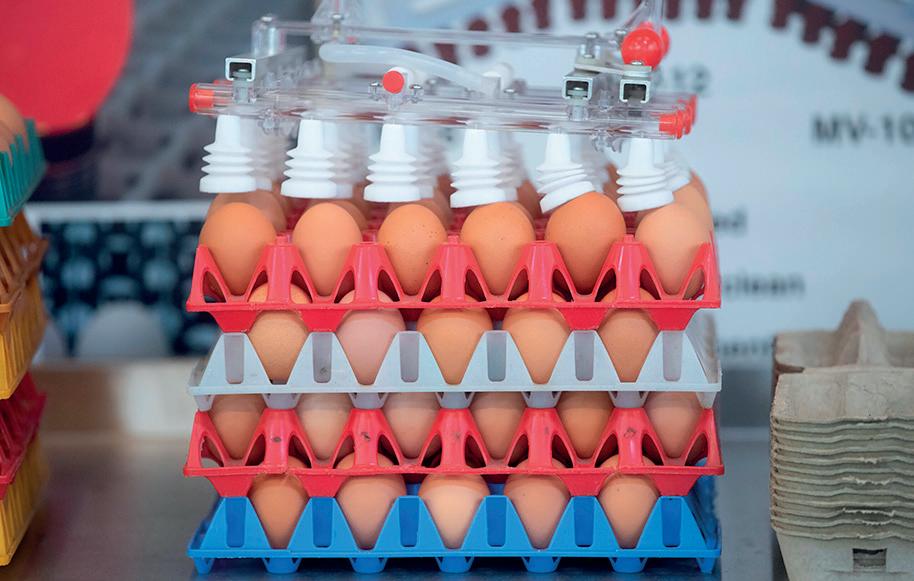


This year’s Pig and Poultry Fair focuses on innovation, collaboration and sustainability, and hopes to share a positive outlook on the year ahead. Farmers Guardian reports.
This year’s British Pig and Poultry Fair sees the move to a new venue and date, with the event taking place at the NEC, Birmingham, on Wednesday, May 15, and Thursday, May 16. Its forum programme will bring together industry experts to explore the pig, egg and poultry outlooks, as well as considering the challenges and opportunities ahead.
POULTRY FORUM THEATRE
9.15am Defra Farming Minister
Mark Spencer
■ The Minister will make an address on farming Government policy ahead of the upcoming election
10am Egg outlook: Helping you plan ahead
■ Get the low-down from industry experts on their predictions for the challenges and opportunities ahead for eggs
11am Farm assurance schemes: What the future holds for eggs and poultry
■ Industry bodies outline where the schemes are headed and how they will benefit the supply chain
12noon Supporting today’s generation, inspiring the next
■ Hear future poultry industry ambassadors share their career journeys; Zoetis/NFU Poultry Trainee of the Year Award 2024 winner to be announced in the Thursday, May 16, session
12.45pm Poultry meat outlook: Expert insight for the year ahead
With around 7,500 visitors and 336 exhibitors expected to attend, visitors can enjoy the opportunity to network with friends and colleagues, meet with key suppliers and browse a range of new products.
The event will also host a new innovation theatre, to profile the latest cutting-edge products and ideas.
It has most certainly been a challenging couple of years for everyone
■ Hear from industry experts on the challenges and opportunities ahead
1.45pm Costings, contracts and fairness in the egg supply chain
■ This session looks at avoiding producer losses and egg shortages, costings for fairer egg production and the Government’s progress on producer contracts
2.45pm (Wednesday only) Overview of the farming offer in England
■ Hear how the Sustainable Farming Incentive can benefit your farming enterprise
3.05pm Wednesday and 2.45pm Thursday Animal Health and Welfare Pathway (AHWP) policies for poultry and eggs
■ Defra and industry partners outline what is available to poultry-keepers through the AHWP
PIG FORUM THEATRE
10am Inspiring younger people to eat pork: What do we know about the consumers of the future and how do we reach them?
in the pig, poultry and egg sectors, but it does feel like the tide is turning and there are some positive outlooks ahead, says David Grint, chief executive at the Royal Agricultural Society of England.
Can-do attitude
He adds: “Our industry never fails to impress me with its resilience, adaptability, can-do attitude and innovative answers to the biggest of challenges.”
■ Gain an insight into Gen Z and how businesses can reach the consumers of the future
11am AHWP policies for pigs
■ This session looks at the full pathway and how the vet review links with the endemics programme 11.30am Pig outlook: Predictions for the year ahead
■ Hear from industry experts on the outlook for the pig industry 12.30pm Keeping African swine fever (ASF) out: What does the contingency plan look like and how can you play your part in protecting the national herd?
■ This session looks at what the contingency plan for ASF looks like 1.30pm Pig farm assurance schemes: What the future holds
■ Hear from industry experts as they outline where the schemes are headed 2.15pm Reducing the environmental impact of pig farming on soil, water and slurry to enhance reputation
■ Hear about the practicalities of choosing a carbon calculator and learnings from real-time projects
■ When: Wednesday, May 15 (8.30am-5.30pm) and Thursday, May 16 (9am-4pm)
■ Where: The NEC, Birmingham, B40 1NT
■ Entry: Free, but you must register for a ticket to gain entry
MORE INFORMATION pigandpoultry.org.uk
INNOVATION THEATRE
10am Matching genetic improvements in pigs with nutritional solutions
10.30am Straw crumb: The catalyst to cleaning up agriculture’s dirty secret 11am Building the future of livestock protection: Biosecurity in your hands
11.45am Enhancing broiler welfare and performance through real-time monitoring 12.15pm SOUNDTALKS®: Listen to your farm
12.45pm Insects unleashed: Turn an old shed into a protein factory
1.30pm Seeding the future: Strategies for next generation recruitment
2pm Safe and efficient organic acids for sustainable animal nutrition production
2.30pm Extracting value from poultry manure and agricultural waste streams
3pm Sustainability hub pub quiz
This
sheep special includes advice on reducing lameness, plus features on producers
who have made significant changes to their systems.
are multiple benefits to




Kent farmer and shearing record holder Marie Prebble says planning is key and should be carefully considered. She carried out a study for the National Sheep Association Samuel Wharry Memorial Award focusing on the practical considerations for best practice during shearing.
Ms Prebble says there are multiple benefits to keeping sheep empty before shearing, predominantly to help sheep to sit more comfortably and struggle less, reducing the risk of injury and vastly improving animal welfare.
It helps to avoid waste on the board which reduces slipping and increases shearer health and safety with chance of injury and physical load cut by up to 20 per cent, which is a result of a sheep’s full gut.
Less weight also helps the straining of the wool, improving clip quality. However, Ms Prebble appreciates practical barriers to farmers, with some lacking appropriate facilities on farms.
When considering best practices for biosecurity at shearing, farmers are faced with the potential spread of disease or infection between farm premises.
With the
shearing
season looming, Ellie Layton looks at the key points to help a flock’s shearing go smoothly.
Ms Prebble found the major concerns to be sheep scab, caseous lymphadenitis and footrot, despite the rate of animal health outbreaks directly attributed to shearing being unclear.
She urged farmers and shearers alike to share responsibility and facilitate disinfecting through practical measures, such as disinfectant and a pressure washer to clean the shearing trailer, equipment and clothing before and after use which could significantly reduce the likelihood of shearers transferring disease.
A safe, level environment is needed to shear with a safe power supply.
She encouraged farmers to shear at least eight weeks post-lambing, with lambs separated from the ewe group. Sheep should also be as dry as possible to make work easier resulting in a comfortable animal.
Reducing stress should be paramount by avoiding other procedures such as drenching and parasite control where possible.
These points all promote animal welfare, but Ms Prebble also says it can avoid additional charges.
Providing a safe working space for all involved in shearing is paramount for Ms Prebble.
She says: “It is an exhausting task, and looking after workers should have the same effect on the sheep.
“Contact should be made with contractors before the event to ensure that both parties have the equipment required.
“Shearers should be provided with a safe working space, with shelter from weather. Use of sprays and parasite treatments can cause harm to shearers if inhaled, so this should be avoided.”
Ms Prebble encouraged good wool presentation to promote the best wool price.
She says: “Make sure wool is dagged and rolled up as neatly as possible.

Use of sprays and parasite treatments can cause harm to shearers if inhaled, so this should be avoided
MARIE PREBBLE
“Coloured fleeces should be kept completely separate as these fibres can contaminate non-coloured wool and a top tip is to shear all coloured sheep last.
“The wool should be sent to the depot as soon as possible, as storing it can sometimes be difficult. If your wool gets damaged or wet, this will dramatically reduce the value,” she adds.

Lameness is still a priority for the sheep industry, costing millions each year. However, in recent years farmers have made significant progress in tackling the issue. Farmers Guardian reports.
Results of a recent survey of sheep flocks by the University of Birmingham, funded by AHDB, has found the level of lameness in English sheep flocks has fallen to around 3 per cent, down from 10 per cent in 2008.
In 2011 the Farm Animal Welfare Committee (FAWC) recommended targets for the industry to reduce lameness levels to 2 per cent or less by 2021. These results show that more than 25 per cent of English flocks have reached that target.
Dr Lis King, senior animal health and welfare scientist at AHDB, says: “Industry is so close to reaching the 2 per cent target set by FAWC and this survey provides us with evidence of how we can improve industry messaging and support farmers to get over the line.
The survey has been conducted in 2008, 2013 and 2023 and shows how understanding of the causes of lameness has improved, how management has changed over time and the key things farmers can do to reduce the amount of lameness they see in their flock.
Infectious causes of lameness are still the leading reason compared with non-infectious, with interdigital dermatitis (scald), severe footrot and contagious ovine digital dermatitis the most common causes for both lame ewes and lambs.
Dr King says: “The importance of infectious causes of lameness means it is key that farmers look at ways to quickly control individual cases to get on top of lameness before it spreads in their flock.”
The level of lameness in English sheep flocks has fallen to around 3 per cent, down from 10 per cent in 2008, a recent survey has shown.
Prof Laura Green, a vet from the University of Birmingham who led the research survey, says: “Our survey highlighted that management practices we know are important, but have not always been the focus of attention, are actually key in controlling lameness, such as the effectiveness of quarantine. Farmers who always quarantined new and returning sheep for at least three weeks had lower levels of lameness than farmers who did not.”
Quarantine of new and returning sheep prevents introduction of new strains of Dichelobacter nodosus
THE five-point plan is an industry tool designed to help meet the challenge of tackling lameness by providing a clear strategy to control it and is recommended where footrot, scald, and/or contagious ovine digital dermatitis have been diagnosed.
The plan’s five points are: n Step 1 and 2: Cull and quarantine n Step 3: Treat n Step 4: Avoid n Step 5: Vaccinate
Dr Lis King says: “By implementing all five points in the plan together, farmers can tackle the disease from all angles and give their flock the best chance of avoiding lameness problems.”
MORE INFORMATION ahdb.org.uk/knowledgelibrary/lameness-in-sheep and flockhealth.co.uk/Resource-Hub
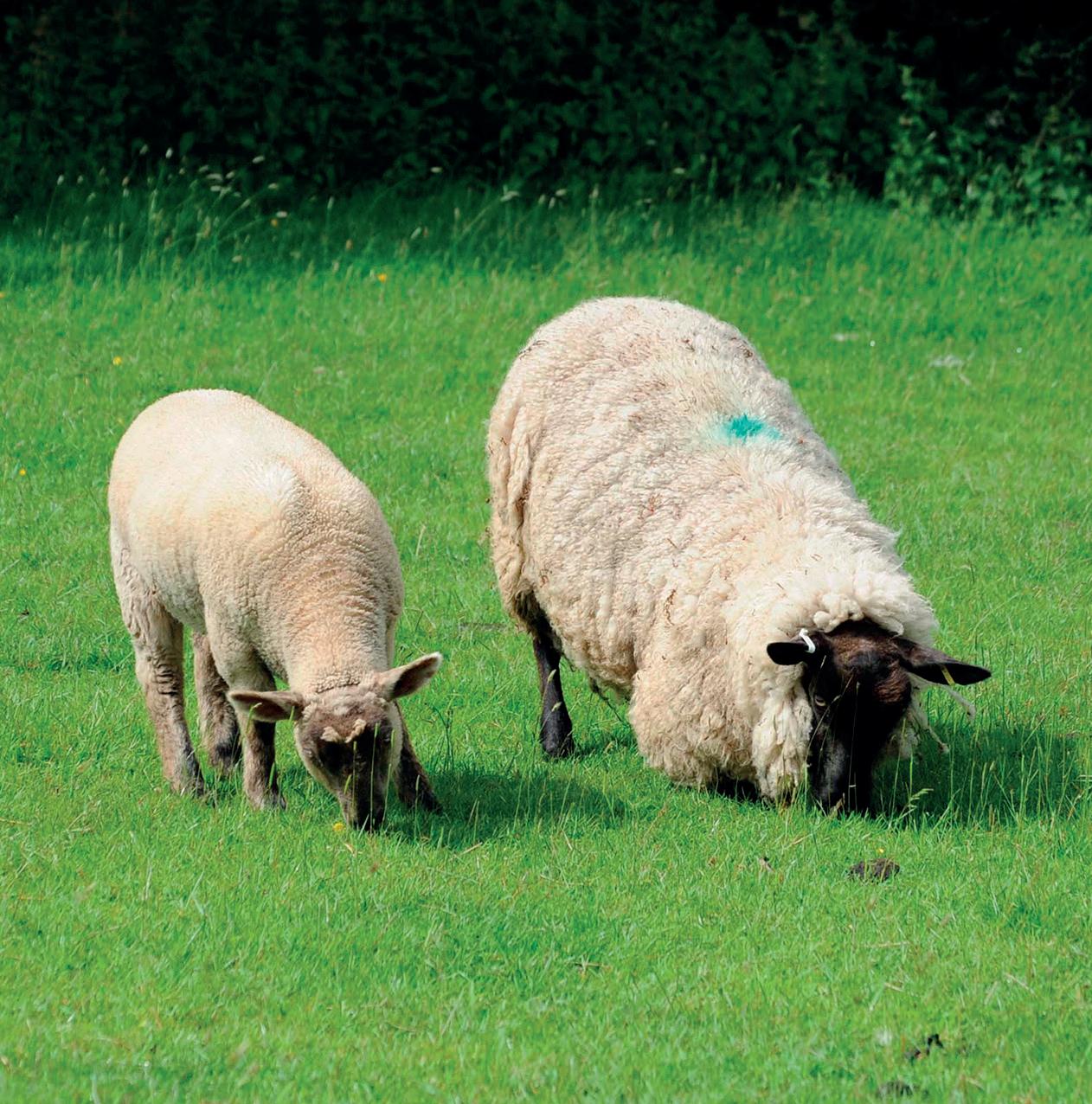
(D.nodosus), which is the cause of footrot.
Prof Green says: “We know the incubation period of footrot is up to two weeks, so a quarantine period of at least three weeks, but ideally four, is advised. This gives time for it to develop so sheep carrying the bacteria can be identified.
“This then allows for treatment and further quarantine until sheep are sound and lesions are healing before reintroduction to the flock.
“Even if you already have footrot present in your flock, sheep are not immune to new strains and so quarantine is still vitally important, regardless of if it is already present in your flock or not.”
The survey provided some key findings in how farms are managing lameness, with farmers reducing their use of foot-trimming and increasing their use of vaccinations, which is a positive shift since 2008.
However, the change in use of footbaths and antibiotics were flagged as areas where practices could be improved.
Prof Green says: “Research tells us that footbathing does not work to prevent or treat lameness.
“At best it disinfects the feet and at worst it could spread D. nodosus between sheep. Footbathing is only useful as part of quarantine or treating scald in lambs. Flocks with the lowest levels of lameness do not footbathe and use individual treatment of ewes and lambs instead.”
Since 2018, the percentage of
Management practices we know are important, but have not always been the focus of attention, are actually key in controlling lameness
PROF LAURA GREEN
farmers using antibiotics to treat footrot has reduced.
“This could be due to promotion of messaging around responsible use of antibiotics putting people off using them,” says Prof Green.
“However, as footrot is caused by infectious bacterium, treating it with antibiotics is still the recommended route and key to reducing lameness in your flock. Using the right antibiotic drug at the correct dose promptly to prevent spread to other sheep in the group is essential. There is also a licensed vaccine available to prevent footrot.
“Flocks that are using quarantine for at least three weeks and are not footbathing or foot-trimming have 50 per cent less lameness,” Prof Green adds.




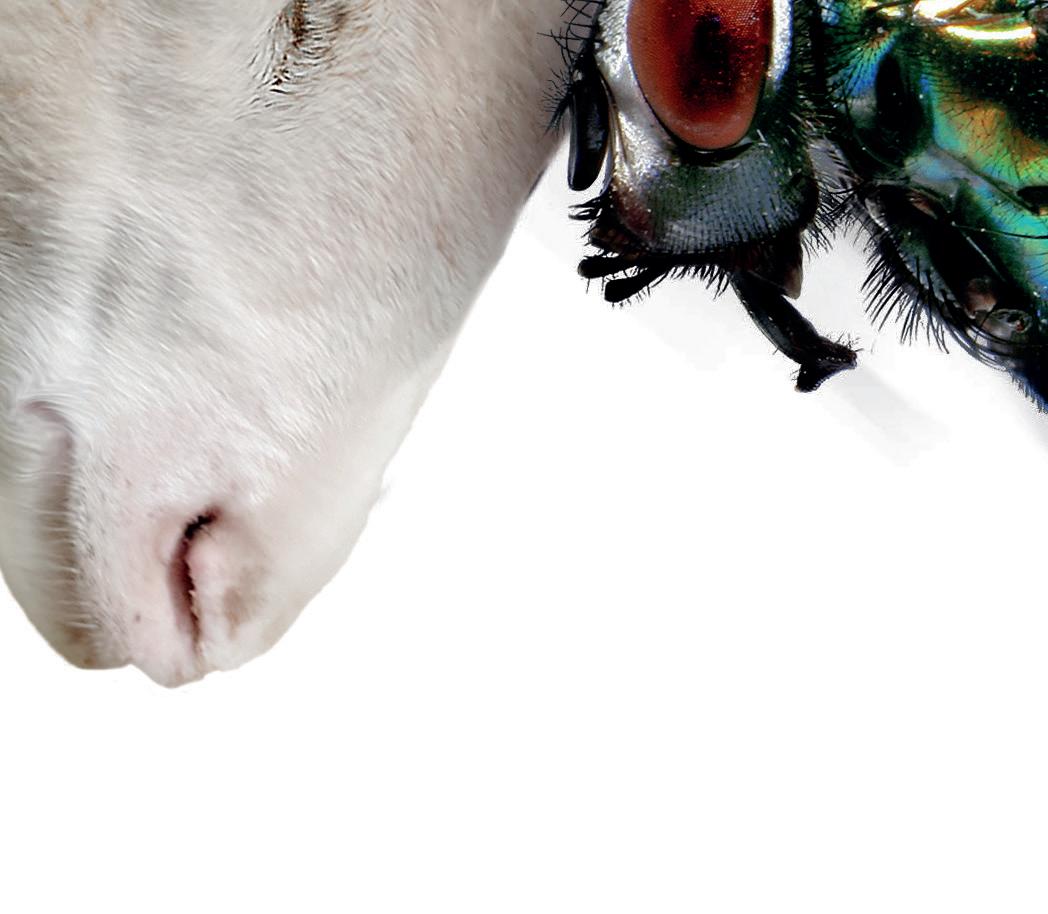


Preventative treatment of ewes and lambs is always the most cost-effective strategy against blowfly strike.1
























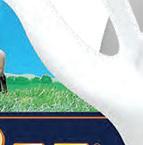


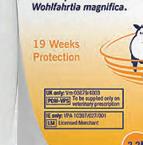








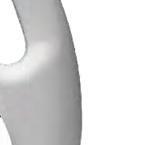
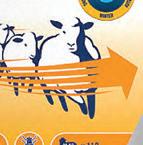





Producing a breeding sheep which will suit any system and is attractive to commercial farms is key to a Shropshire sheep enterprise looking to push the boundaries of typical flock demands. Ellie Layton finds out more.
Despite his name, Hayden Woolley, who farms on the outskirts of Bridgnorth, is a pioneer in breeding woolshedding sheep.
Albynes Farm has been in the Woolley family for four generations and had traditionally been run as an arable enterprise, with about 50 commercial ewes, until around 25 years ago.
The home farm is made up of 183 hectares (450 acres), which hosts 81ha (200 acres) of cereals, and now the main enterprise is a flock of wool-shedding sheep which runs under the umbrella of Low Footprint Lamb.
The farm is run day-to-day by Mr Woolley, who farms with his wife Melissa. His passion for the sheep flock now sees them manage 648ha (1,600 acres) of grassland, which is mostly acquired through agreements from local landowners and estates.
He is supported by two shepherds to manage his flock of nearly 4,000 southern hemisphere-bred sheep, which he claims is the world’s largest progeny testing scheme of woolshedding sheep, with the aim of breeding low-input, low-footprint sheep for UK farmers.
Mr Woolley started his shepherd-
■ 4,000 mixed breed ewes
■ A variety of breeds have been used on-farm, mostly from the southern hemisphere
■ Hayden Woolley farms 648 hectares (1,600 acres); 182ha (450 acres) owned and the rest
ing journey following his return from college.
He says: “I did not follow my father’s interest in arable, so following college, I started a flock of Romney ewes in 2011, and later started to research my interest in wool-shedding sheep.
“Removing wool can reduce the workload of sheep by about 60 per cent, with crutching, shearing and tailing, and the wool does not even cover the labour costs associated with shearing.”
In 2017, following a visit to the National Sheep Association Cymru event, he met the EasyCare breed’s pioneer, Iolo Owen, who he visited the
rented from local landlords
■ High health status is obtained, with all ewes health screened and monitored negative for maedi visna, Johne’s disease and Border disease and no evidence of ovine pulmonary adenocarcinoma has been found
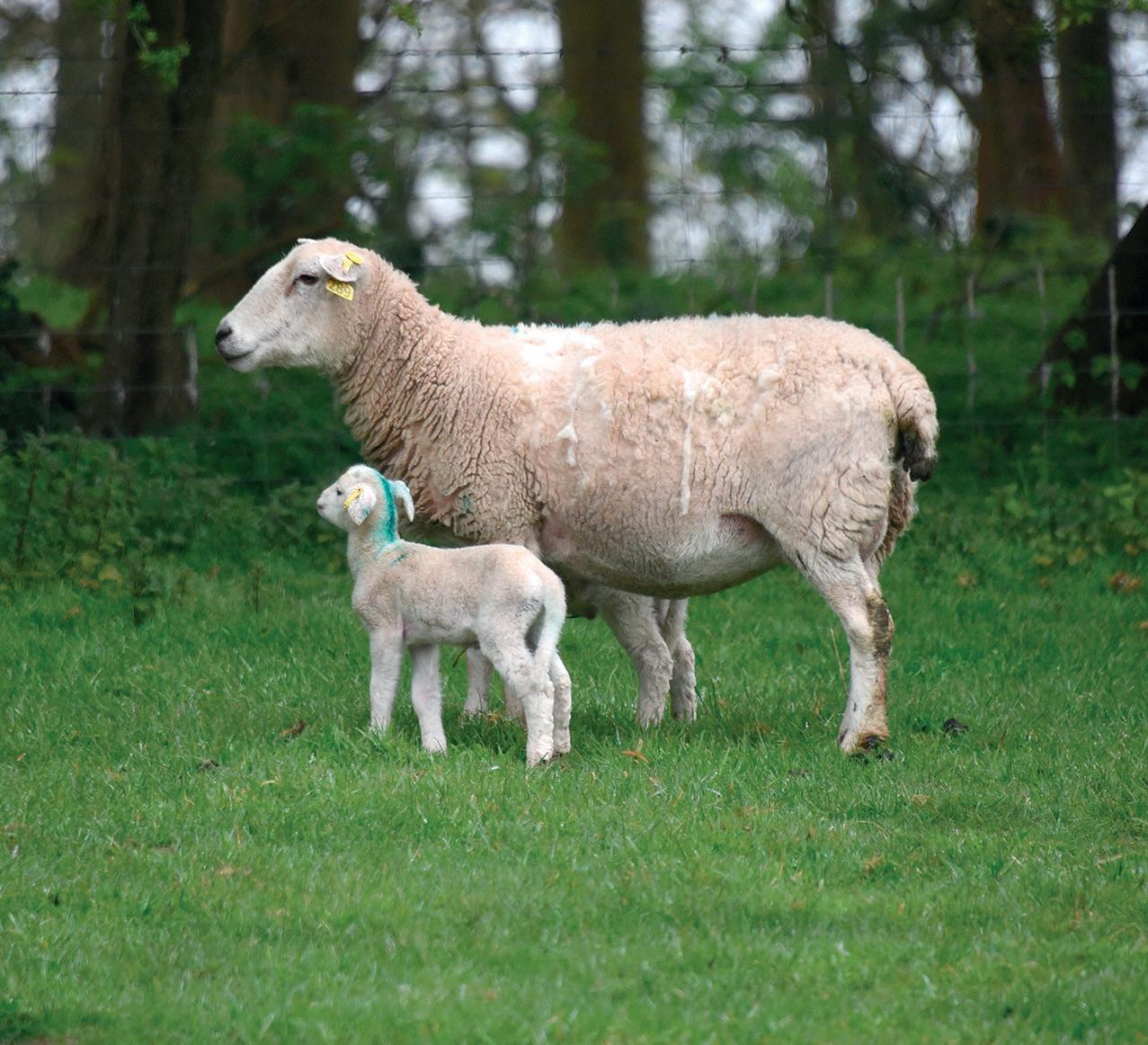


next day. This led him to buy some ewes and he started phasing most of his Romney ewes out.
Both breeders found common ground on the potential that woolshedding gives to help cut production costs. They both shared an interest in widening the wool-shedding gene pool to prevent inbreeding and implementing higher hybrid vigour and higher production traits.
In his efforts, Mr Woolley decided to use genetics from different wool-shedding breeds which are prominent in Australian and New Zealand systems.
To do this, he joined forces with Ian McDougall, who provides breeding services for UK and southern hemisphere sheep farmers through his company Farmgene.
Together they have imported four wool-shedding breeds.
Mr Woolley says: “I met Ian when I provided embryos for his first EasyCare embryo export to Wairere and
others in New Zealand. Ian shared my interest in wool-shedding sheep and he has accelerated the progress.
“We agreed a business structure and Ian began selecting genetics from around the world and I provide the sheep to experiment upon.”
Mr McDougall has been able to use his expertise to select the best wool-shedding genetics he can find while working each year in the southern hemisphere.
Initially, rams from two flocks were selected from the south of Australia, as they are best suited to adapt to the UK climate. Since then, the EasyCare and Romney maternal genetics have been crossed with New Zealand Wiltshire and high-index UK EasyCare rams.
They also mated ewes to Exlana rams and embryos of Australian White cross Nudie and pure Australian White have been implanted.
Mr Woolley says: “These less familiar breed names can often disguise the traits of the sheep, but they are proving to thrive in our system and aid
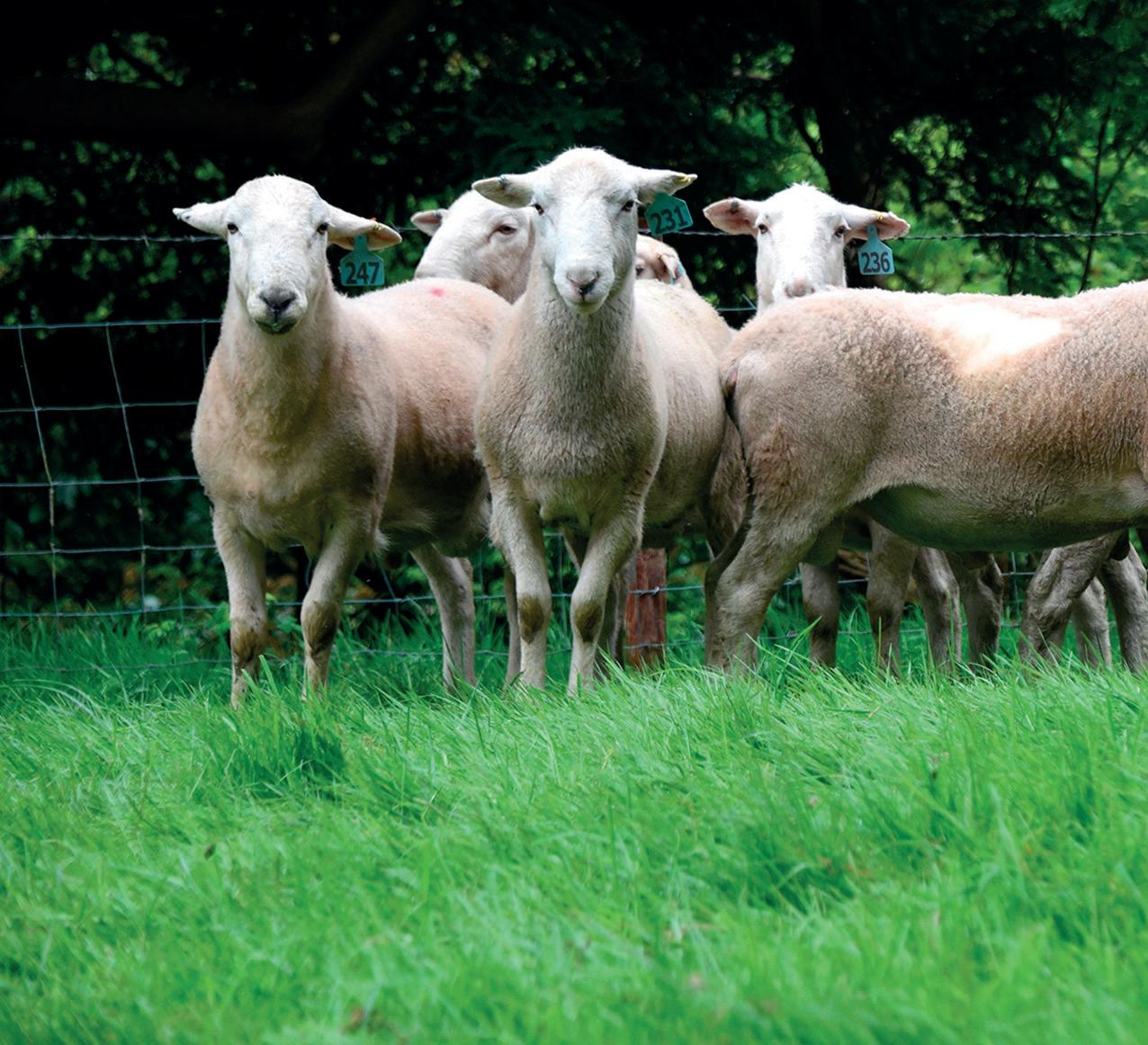

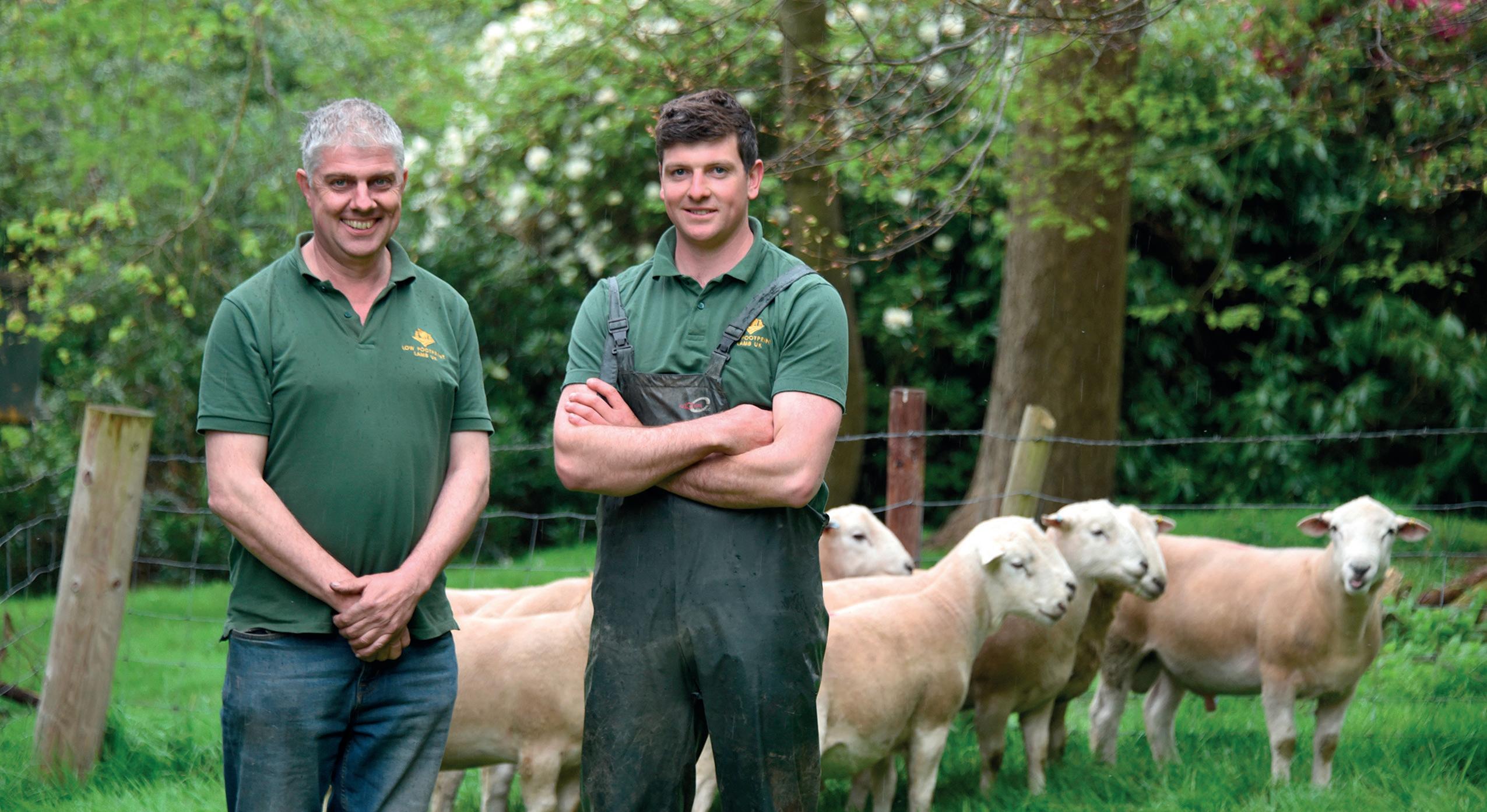



Removing wool can reduce the workload of sheep by about 60 per cent

HAYDEN WOOLLEY


in our bid to produce wool-shedding sheep with substance.
“The Australian Whites are a cross of Poll Dorset, Texel, White Dorper and Van Rooy composite which are predominantly hair sheep.
“The Ultrawhites are three-quarters White Dorper and one-quarter Poll Dorset which shed their wool, and the Australian Nudie, which is also a wool-shedder, is made up of Wiltshire and Dorper. Finally, we have brought in the New Zealand Wiltshire, which is a Polled Wiltshire.”
Focusing on the many breeding lines, flock numbers have been reduced over the past few years. However, Mr Woolley hopes to increase flock numbers over the next few years to reap the advantage of the flock’s genetic gain.
Mr Woolley says: “One of the worries sheep farmers have is the shedding’s untidiness, but due to the sheep
shedding over several months, we do not find this an issue as it does not fall in clumps.
“The sheep graze on local estate land and we were worried the shedding would displease the owners, but they have been supportive.”
It is on these pastures the flock lambs outside from late March with little assistance. This is followed by rotational grazing on the parkland, which is split into large paddocks.
Mr Woolley says: “Sheep do not receive preferential treatment here; I want to farm as commercially as possible. Recording is vital for the system to increase the flock’s genetic merit, but a strong emphasis is still placed on producing structurally correct animal.
“The ewes lamb very easily and we rarely intervene. They are best left to



their own devices as they can be easily disrupted by their natural instincts.
“We check the sheep morning and evening. All lambs are tagged with large tags to reduce the margin for error when recording.
“We record birth weight, litter size and parentage, which is uploaded onto
computer software. After this, they are left to settle to prevent mismothering.”
The recording is vital to the system to increase the size of both the ewes and lambs and make them more prolific without affecting lambing ability.
The average birthweight sits under 5kg and none of the lambs require




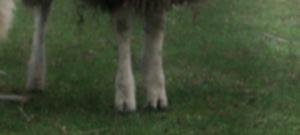
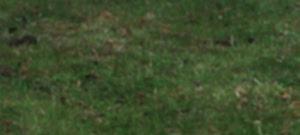
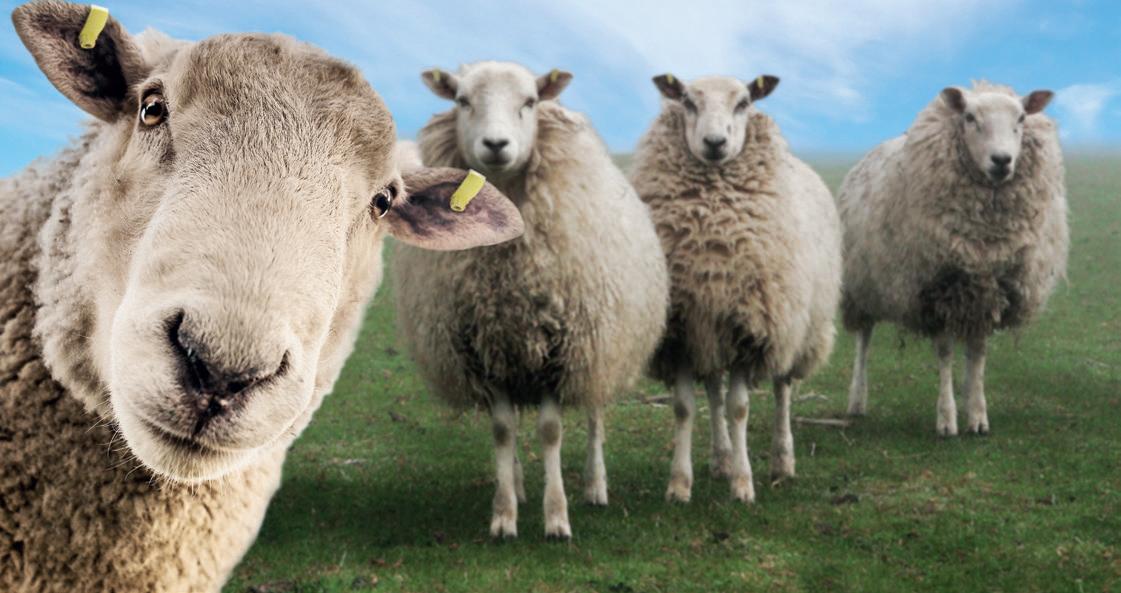
Vaccinating sheep for enzootic abortion with Cevac Chlamydia can be done when it is most convenient*:
• EWE LAMBS from 5 months of age
• SHEARLINGS (1 YR OLD +) & OLDER should be vaccinated during the 4 month period before mating
• ALL EWES, NO LATER THAN 4 WEEKS before the rams go in
• DO NOT use in pregnant sheep










tailing or castrating, and with the flock having low antibiotic usage.
As they grow, both the ewes and lambs are farmed without routine fly treatment, which Mr Woolley says are all attractive attributes, as UK farmers head into non-subsidy systems.
The next few years will be pivotal for the flock and both Mr Woolley and Mr McDougall are striving to push their breeding work forward. They aim to create maternal and terminal lines of wool-shedding sheep which are attractive to the commercial farmer.
Eventually, they would like to hold an on-farm sale of breeding stock, but before this, Mr Woolley is conscious he wants to prove the breeding and has kept 150 rams to sell this next year.
He says: “We also have various farmers working with us on the project, including Brian Sankey in Herefordshire, removing the wool from 1,200 New Zealand Romneys.
“We are looking for hill farmers willing to implant high altitude EasyCare embryos and remove wool from hill sheep. Some of the ewe lambs bred last year are non-seasonal breeders, and we recently imported semen to develop an autumn lambing shedding flock.”
Traditionally, the lambs have been sold live through Hereford and Bridgnorth markets as springers. However, in recent years they have moved to deadweight and, next year, the whole crop will be sold through Woodheads to Morrisons.
This is a result of the company’s plans to breed with efficiency at the heart and has seen it become part of a Morrisons scheme.
In August 2023, the pair spent £10,000 hiring portable accumulation

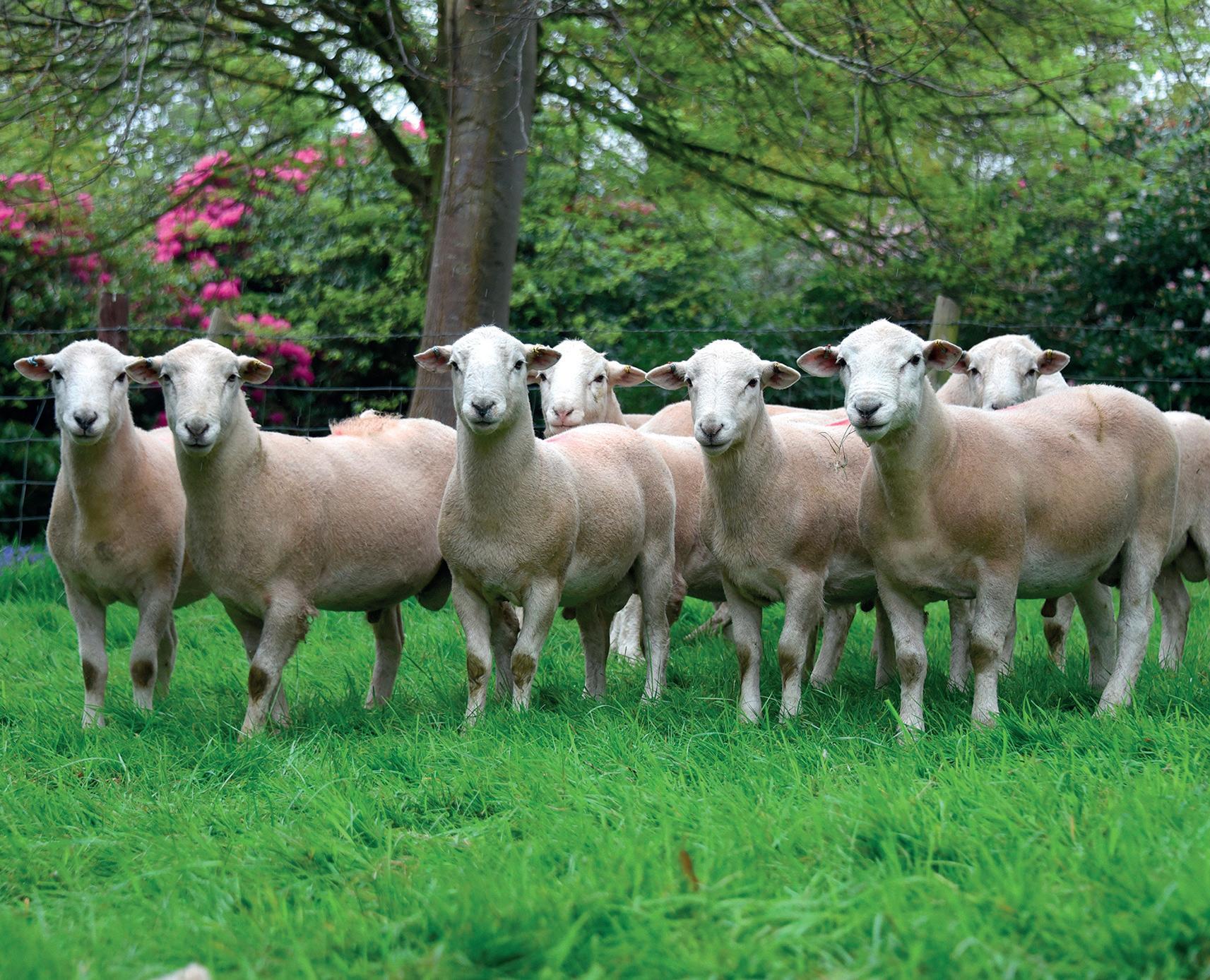
chambers from SRUC to measure methane in 120 lambs sired by 10 different rams.
Results showed the best lambs emitted more than 30 per cent less methane than the group average. They want to have a nucleus of rams which are up to 50 per cent more efficient, which will mean their daughters follow the trait.
Last autumn, 15 dams of the low-
est emitting lambs were flushed to three of the best-performing sires for methane emissions.
The breeding programme saw about 150 embryos transferred into recipients, while low methane-recorded ewe lambs were artificially inseminated with semen from low methane ram lambs, which will also be used in the study.
Mr Woolley says: “We are not breeding for methane over any other

trait. The more efficient the sheep, the less methane emitted. The lower methane sheep naturally produce a higher meat yield due to a change in fatty acid build-up, so this will benefit the environment and the farmer’s pocket.
“By 2025, the flock will predominantly run with high index and low methane-emitting rams and will have a crop of two-year-old rams recorded and ready to be sold.”



Lambs can be prone to a vast number of health and productivity problems and can succumb to trace element and vitamin deficiencies! Copper, Cobalt, Vitamin B12, Selenium, Vitamin E, Iodine and Manganese are particularly important. ProVitaMin Vitamin & Mineral Drench contains a range of chelated minerals, vitamins, and trace elements at optimal levels in an ultra-concentrated liquid drench form. It contains all the essential minerals, vitamins and trace element that will provide lambs with that all important nutritional boost for growth rates post-weaning.
Copper: swayback is the most common sign of deficiency, but often poor fertility, poor quality wool, and growth can be attributed to copper deficiency.
Cobalt & Vitamin B12: signs of deficiency include lethargy, reduced appetite, poor quality wool with an open fleece, small size, and poor body condition despite adequate nutrition.
Cobalt deficiency (‘Pine’) in autumn results in ill-thrift, lethargy, poor appetite, watery ocular discharge, and poor fleece quality. As a consequence of this deficiency lambs have poor immune function and are often more
prone to infectious disease (e.g. clostridia, Pasteurella).
Selenium & Vitamin E: primary clinical sign of selenium deficiency is ‘white muscle disease,’ although disease prevalence is low. Usually, rapidly growing lambs are affected, with sudden onset generalised stiffness, which may progress to an inability to stand within a few days if left untreated. In older growing animals’ selenium deficiency has been linked to poor daily live weight gain and in breeding ewes can cause embryonic death and poor fertility performance.
Iodine & Manganese: deficiency is typically associated with an enlarged thyroid (goitre), stunting of growth and results in late abortions, stillbirth and/or increased lamb mortality.
Manganese deficiency is rare; however, symptoms such as joint or bone abnormalities and a stiff gait are reported, along with potential negative effects on fertility due to poor conception rates.
B Vitamins are important for making sure that all the body’s cells are functioning properly and help the body convert food into energy, fat








and protein, and creating new healthy blood cells, and maintaining healthy skin, brain cells, and other body tissues.
Folic Acid is especially important for cell replication and rapid cell turnover. This is vital for blood cell and gut cell formation.
Vitamin A deficiency not only compromises the integrity of the mucous membranes and skin that serve as first-line defence barriers, but also reduces the primary antibody response in the event of infection.
Vitamin E & Vitamin C are potent antioxidants, immunostimulants and counteract oxidative stress.
Vitamin Drenches or Boluses?
Oral drenching is usually less expensive than boluses, and it allows for targeted delivery to certain animals, the most at risk animals, or at specific stress periods during the grazing season or winter housing where only short-term cover is needed. Drenches also have an advantage that a larger number of trace elements can be included in high concentrations to address deficiencies.
Early lambs for quick weight gain





































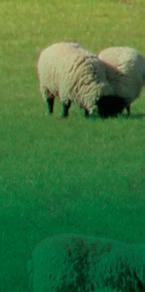


In summer 2023, Mark Dewes decided to try the New Zealand Romney alongside his established flock of Mules and Suffolk Charollais crosses. Farmers Guardian reports.
Mark Dewes farms 113 hectares (280 acres) in Warwickshire, which is a mix of owned family farm and tenanted land, alongside 61ha (150 acres) of contract farming.
He says: “The farm is on heavy clay with poor drainage, which can make arable break crops unprofitable. The family farm is run with the help of excellent local contractors for the arable work, with my income supplemented with work off the farm.”
The farm previously had a small suckler herd, but a lack of

infrastructure for housing and handling facilities limited the growth of the herd and the cows were eventually sold.
The opportunity to use pasture as a
rotational break crop to wheat led to the establishment of the original Mule and Suffolk Charollais cross flock.
The pasture was enhanced by herbal leys in Mid-Tier Countryside Stewardship and Sustainable Farming Incentive schemes, which also eliminated the need for artificial nitrogen for the pasture.






In addition, there was reduced N requirement for the wheat crop, plus the opportunity for greater sequestration of carbon in organic matter in soils and improvement of biodiversity on-farm with flowering plants and herbal leys.

with low concentrate requirement were all attractions of the breed, allowing for more sustainable meat production as a by-product of a sustainable wheat-based arable rotation.”
Mr Dewes’ vet Gina Rigby, of Cross Counties Farm Vets, says: “I was able to put Mark in touch with other farmers who keep New Zealand Romneys who were able to give him honest feedback on their experiences with the breed.
Mr Dewes adds: “Most were very positive, but there were some problems with lower scanning percentages Mark



Mr Dewes says: “I was first interested in the New Zealand Romney as a breed after my neighbour established a flock to use in a sustainable arable rotation. Lamb vigour, capable mothering and good conversion of forage
“The farming community are great at sharing knowledge and helping each other out, and it is fantastic to be able to facilitate that through sharing contacts or hosting discussion groups.”














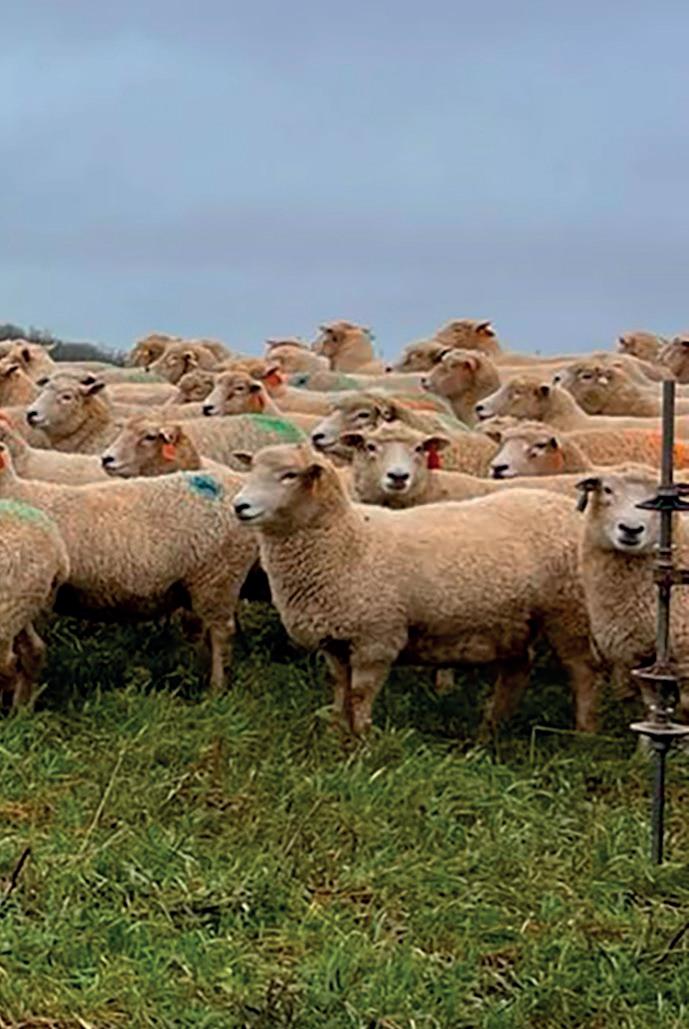
which had led one farmer to return to Mules.”
Ms Rigby says: “We have certainly seen an increase in people moving at least part of the flock to outdoor lambing, either with existing breeds or investing in hardier ewes more suited to it.
“Ever-increasing feed costs, variable straw prices and availability, plus growing concerns over antibiotic resistance are all factors that have led to farmers making the move to lamb outside.”
The addition of the new flock has not been without its challenges, and the recent weather conditions have certainly not helped. This year there have been difficulties keeping enough standing forage in front of the sheep in such wet ground conditions.
Mr Dewes, therefore, plans to make changes next year to include more winter grazable cover crops in front of herbal ley establishment. This will hopefully give a better species mix than autumn sowings, which can be challenged by volunteer wheat and black-grass.
Mr Dewes has just finished his first season lambing the New Zealand Romneys alongside his original flock, and he is now considering the advantages and disadvantages of the outdoor lambing New Zealand Romneys in comparison with the indoor lambing Mules and Charollais Suffolk crosses.
Ms Rigby says: “There are many benefits to outdoor lambing when done well: lower disease pressure, less mismothering, the potential
No abortion
■ No watery mouth, scours or joint ill
■ No lambs laid on
■ Lambs were woolly meaning they were more resilient once dry
■ Good vigour
for reduced labour costs, low or no housing costs, low or no concentrate feed costs – the list is endless.
“However, it obviously comes with its challenges: weather, forage availability, catching ewes or lambs with problems, and predation, to name a few.
“I think perhaps one of the things people underestimate when they move from indoor lambing – with someone in the shed round-the-clock – to outdoor lambing is the mindset shift required to walk away from the field at sunset.
“You cannot be everywhere, and even in a shed you can miss things. Even ewes that have previously lambed inside can adapt really well to lambing outside.
“I definitely have farmers tell me that they have been amazed at how different their ewes’ behaviour has been outside versus in a shed. They have been much more protective – the mothering instinct seems to kick-in to a greater extent.
“Mark has had a very successful first year with the New Zealand Romneys and plans to continue developing the outdoor lambing flock.”
Reflecting on the season, Mr Dewes is considering making changes ahead of next year.
He says: “I would consider lambing slightly later – this year, we started the last week of March to fit around other commitments.
“I would also consider a short period of housing before lambing to save soil conditions if needed, along with planning for lambing fields to be more resilient in very wet soil conditions – perhaps making more use of
■ Predation
■ Loss of lambs due to exposure –caused by terrible weather conditions
■ Ground conditions awful in areas
■ Mismothering – unexpected, but all first-time lambing theaves
■ Wool likely to be a management issue in summer – considering twiceyearly shearing

permanent pasture for lambing as the denser sward resists surface poaching better than temporary grass leys.
“Better marking to allow for better shepherding, along with limiting movement of ewes and lambs between

There are lots of benefits to outdoor lambing, including lower disease pressure, says vet Gina Rigby. fields to reduce mismothering opportunities, would also help next year.
“But all of the ewes were first-time lambing theaves, so I expect that had a lot to do with it,” he adds.





























2/925.0 4/1045.0 47/1103.4 -/-
Source: IAAS/ScotEID Figures show livestock numbers first, then average price per head.
Source: LAA/MartEye


Source: LAA/MartEye
Primestock throughput, price and price change (p/kg). Week ending April 28, 2024.
CATTLE and sheep prices saw a reduction at auction marts in England and Wales, although there was a rise in all pig categories.
For cattle, steers decreased the most by 4.6p/kg to 266.8p/kg. Dairy-sired cows fell by 3.3p/kg to 158.4p/kg, while heifers dropped in price by 2.7p/kg to 269.2p/kg.
Only young bulls bucked the trend in the cattle rings to rise in value by 4.2p/kg to 265.2p/kg.
In the sheep pens, prices had declined by 2.2p/kg to 383.3p/kg.
Porkers, cutters and baconers had all increased in value to 174.9p/kg, 182.9p/kg and 189.8p/kg, respectively.
As Farmers Guardian went to press on Wednesday (May 1), UK LIFFE wheat prices for May 2024 were trading at £179.35/ tonne, up £1.45/t on the week.





O/S deadweight prices for the week ending April 27, 2024. Source: AHDB
Deadweight sheep prices are collected from a sample of GB



SOURCE: LAA/MartEye
SOURCE: LAA/MartEye
*FortradingDelinkagerefamounts;20p-27pper£1 ofDelinkagereferenceamount.**Estimates. ENGLISH DELINKAGE REF DATA: averageof 2020/21/22claims.Seller’s2023claimnotneeded. Estimatedreturn£1.20/£1refamountwithbuyer’s delinkpaymentlessthan£30,000post-transfer. SubjecttoDelinkagevalues2025-27.
BIODIVERSITY NET GAIN: English:Defra estimates£25,000-£200,000/unitexcluding VATandassociatedfees,subjecttolotsize. LasttenderApril19,2024,nextMay31,2024. NUTRIENT NEUTRALITY: Long-termsales alltypesagricmanexcludingspecialisthabitat creation.Nitrates£3,000-£4,000/unit(£18,000£206,000/ha);phosphates£50,000-£65,000/ unit(£2,000-£169,000/ha). CARBON: Woodland Carbon>£35/WCU>£25/PIU.May2023WCG reverseauctionaverage£19.76. WATER: English abstractionlicenceslessthan£3-£15/cu.m. Source: Townsend Chartered Surveyors




Wednesday, May 1, 2024.
1. FEED
Avonrange Central Scotland East Anglia East Devon Lancashire London North Humberside Northamptonshire Oxfordshire South Humberside Southampton Tyne & Wear West Midlands East Midlands
2.
North-West Northamptonshire South London / Essex Yorkshire
3.
North-West Northamptonshire South London / Essex Yorkshire Scotland
Last updated April 30, 2024 Source: AHDB/LAA/IAAS
2. This contract will receive a 1.54ppl Tesco cheese group payment.
3. This contract will receive a 1.00ppl direct premium payment.
4. This contract will receive a 0.40ppl actual 13th payment.
5. Formerly Glanbia - Llangefn. Retailer price supplements are included where applicable. Supplements listed are in addition to listed milk prices.
-/- -/- 1/700.0 -/Sedgemoor Sa 28/1602.1 19/1775.8 7/1112.9 -/-
Shrewsbury Tu 37/1998.4 29/1500.7 -/- 3/1220.0
Skipton Mo 5/1796.0 3/1366.7 -/- -/-
-/- -/- -/- -/-
Mo 2/1375.0 -/- -/- -/-
-/- -/- -/- -/-
Tu 2/2100.00 -/- -/-
















New National Federation of Young Farmers’ Clubs chair Drew Bailey represents more than 23,000 Young Farmers and is on a mission to make sure clubs across England and Wales ‘open their doors’ to any young person who wants to join. Rachael Brown finds out more.
You do not have to be a farmer to be part of a Young Farmers’ Club (YFC) – a clear message from the newly elected National Federation of Young Farmers’ Clubs (NFYFC) chair Drew Bailey.
Drew says that while the name of ‘Young Farmers’ Club’ cannot be changed, its ‘public perception’ must be.
He says: “People do not realise what it offers; they think it is just a social, but the clubs meet weekly and do various activities.”
From a non-farming family, Drew somewhat reluctantly joined YFC after being ‘forced by his parents’ to go along with his brother who desperately wanted to join. His brother lasted three months, but Drew decided to stay, and more than a decade later continues to be part of it.
He puts his long stint in the organisation down to the ‘lasting friendships’ he has made and the ‘sense of belonging and community’ that YFC has offered him and other members.
In his new role as council chair, Drew says he is committed to making YFC a place for everyone. He is focused on ensuring young people know about the range of activities and opportunities that the organisation has to offer, from travelling abroad to developing new skills.
Drew says he still gets people coming up to him who are surprised to hear that YFC is ‘not just a club for Young Farmers’.
I bet half of [young people] have never even considered a farming life, but would actually really enjoy it
DREW BAILEY
He says: “People see the phrase ‘Young Farmers’ and think: I am not a farmer, I cannot be part of it. But it is not like that.
“I did not know what YFC was all about when I first joined, but they do such great things. We are a diverse organisation, but not always seen. Look at the competition programme – we have 33 national finals, which vary from stockjudging all the way to ballroom dancing, cookery and floral art. It is amazing what we can offer – people just do not realise.”
Drew affectionately refers to YFC as a ‘big family’ and a place he has always felt he belonged.
He says: “You will hear me say ‘belonging’ a lot; it is so vital that people do belong in a community –we are a family.

“YFC is accessible to everyone and we want to help clubs continue with what they are already doing.”
This sense of belonging shone through when he first told his friends at YFC that he was gay.
He says: “At Young Farmers, it has never been an issue. I was not afraid to come out; the friendships I have built do not care, nobody cares nowadays.”
When thinking about his highlight of YFC so far, he recalls his time in the ballroom finals at Blackpool, but being elected as council chair is up there, as he adds that it is his time to give back.
Drew says: “It is now my time to be a role model, give back my knowledge and experience – hopefully I have got some – and be that link between NFYFC and its members.”
Despite initially thinking he wanted to be a primary school teacher when he left school, Drew has since followed his passion for farming. Alongside his role as NFYFC chair, he manages a farming enterprise in Derbyshire breeding sheep and rearing beef calves, as well as relief milking to bring in some additional income.
“With my partner, I farm a small flock of pedigree Bleu Du Maine sheep, plus a few commercials, and we rear some beef calves, mainly Shorthorns and Hereford crosses. We are trying to build on something here, but it is so hard,” he says.
“I never thought I would be in this position; it has always been a dream.

Farming is not the most profitable at times, but that is why I work in other places to build for mine and my partner’s future. It would be nice to one day get a farm.”
For Drew, farming is a way of life and that was part of the appeal to get into the industry in the first place.
He says it is so important that Drew Bailey has been a part of YFC for more than a decade.

we celebrate and build upon the ‘positive things’ that farming has to offer to make it an attractive industry for young people to be a part of.
“We need to look at the positives – what good farming is doing, and the amount farmers do to give their lives to feed nations,” he says.
“We must build on that positivity. We need more new entrants.
We need farmers to think of new ways to entice people in who are not from a farming background.
“I bet half of them have never even considered a farming life, but would actually really enjoy it –I was not brought up as a farmer and I got into it.”
Looking back on his time at YFC, Drew says when he first joined
he struggled with his stammer and ‘lacked confidence’, but being part of NFYFC has changed that.
He encourages every young person, regardless of their background, to have a go and find out what their local club is up to. When trying to describe more
than a decade at YFC in three words, Drew says: ‘Belonging’, ‘community’ and ‘social’.
But, he adds: “YFC offers you more than what you can put in three words, but these are the three big things it can offer.”
Yorkshire
Helen is a fifth-generation farmer who farms with her parents, David and Anne Shaw, husband, Craig, and their children, Alfred and Hattie, at Grey Leys Farm in the Vale of York. The farm comprises 162 hectares (400 acres) of grass, maize and wholecrop for the herd of 240 pedigree Jersey cows and more than 200 followers.
As I write, I have just come in from my morning calf feeding routine.
Over the past couple of hours, we have had a mixture of warm sunshine, hail, rain, along with gales so strong they blew the buckets away.
Our low-lying land is still too wet to travel on in many places and the cows are still indoors.
While the humans may be struggling, it only increases my admiration for the resilience and adaptability of the Jersey cow.
They remain happy in the sheds for now and seem to agree it is still a bit too cold for grazing, as they are not racing for the gates just yet.
On a practical side, we thankfully have enough silage in the clamp, but I would rather save it and straw is running low, so I really hope to be out soon.
The discussion around the table is whether to take a first cut before grazing on some of the paddocks, as grass is getting ahead of us.
Dad introduced Jerseys to the farm in 1968 when, after spending

‘I really enjoyed the day, saw some fantastic cows and learned so much’
time in Devon, he bought 13 heifers from a sale in Totnes and brought them home.
Initially, my grandfather was a little hesitant, but secretly looked forward to the idea.
He had always had an Alderney as a house cow and he understood the Jersey suited the farm well.
They were smaller and lighter on the land, utilised grass well, had a friendly nature and were cheaper to buy.
Dad was fortunate to secure a Channel Island milk contract from the local dairy straight away and,
over time, he and Mum bred the herd up to more than 300 cows at one point.
Over the years, the focus of the breeding has been on milk components, udder and feet health, longevity, and fertility. Being aware of our market, which is predominantly manufacturing, is very important, so we also select bulls that deliver BB capa casein and A2A2 proteins.
We use breeding programmes to help match sires to the cows and ensure minimal inbreeding and we have recently started genomic testing some of the heifers to better
COMMUNICATION skills have always been central to the work of a weather forecaster.
If the same forecast is given to 100 people, each of them will have a slightly different recollection of what was said.
This principle formed the basis of my PhD thesis 15 years ago, when I discovered how the same weather forecast could be interpreted in many different ways.
And a piece in The Times newspaper this week reminds us of how important it is that we carefully select the language we use to describe the weather.
The article focuses on a legal case between Butlins and its insurers and centres around the definition of what constitutes a ‘storm’.
Having been a meteorological expert witness, I understand how such cases can hinge on a few words in a forecast.
In this case it seems that the case surrounds the word ‘storm’.
According to The Times, the insurers claim that flooding came under the category of a ‘storm’ and therefore the payout would be restricted. However, Butlins claimed that because the Met Office had not
named the storm, the event was not actually a ‘storm’.
Oh, what problems we weave when we try to categorise Mother Nature.
I remember many years ago being taught the tight definitions of what is ‘cold’, ‘hot’, ‘wet’, ‘dry’, etc., so that when we were writing forecasts or involved in a weather broadcast, we would always be sure that the public could be certain of what was, and what was not, significant.
My suspicion is that those definitions are no longer used, but perhaps the Butlins case shows that they should be brought back.
understand the potential and risks in the future herd.
I recently attended a Jersey Cattle Society judge’s workshop on a farm in North Yorkshire. While I have no judging experience, I really enjoyed the day, saw some fantastic cows and learned so much from the group.
I also found that I was not too far off the mark after all.
It is great to see some cows out and field work now happening on social media and I hope we will be joining in soon — with spraying, maize drilling and silaging still to do, it is looking like a busy month ahead.

For location specific forecasts visit farmersweather.co.uk and for video updates go to weatherweb.net or call the number below. Call Farmers WeatherLIVE
North Wales Dan Jones West Sussex James and Isobel Wright
Cumbria
James farms Dairy Shorthorns east of Kendal, Cumbria, with his parents
Kathleen and Henry, wife
Michelle and sons Robert and Chris. The fifth generation to farm at Strickley, he is also vice-chair of the Nature Friendly Farming Network.
Another three cows left the farm last week on a one-way trip due to bovine TB.
That is 20 gone in total since we had our initial breakdown six months ago and not a single animal had visible lesions at slaughter. This time though, we are feeling a bit more positive.
We only had one new reactor at our latest test two weeks ago, the other two that went were second inconclusives.
In early July we will retest everything again and see where we are then.
Due to being ‘locked down’ from selling anything, we have 40 extra beef and dairy bull calves still inside – a fair bit of extra work with feeding and bedding. Straw is a crazy price, but at least we are buying-in organic matter to spread on the fields later in the year. Always something to be positive about.
We reckon we are spending the equivalent of about a day every week on bTB-related work with all the extra bedding and feeding, moving isolated animals, pressure washing and disinfecting, as well as having the meetings with our own vets and the Animal and Plant Health Agency vets.
Another unseen cost is the tea and biscuits consumed at these meetings. I wonder if there is a Government grant for posh Borders sharing pack bTB/ bank manager visit biscuits?
The cows are out now. They spent the first few days wasting grass, while

making a fair old paddle around some of the driest fields – or adding organic matter to the soil as I would call it, if I had my regen hat on.
Michelle and I were honoured to be asked to attend the River Restoration Centre’s annual dinner in beautiful Llandudno last week.
I was lucky enough to get a 2024 ‘River Champion’ award in recognition of the work our farm does for river health and also for striving to connect farming and wildlife groups through the Nature Friendly Farming Network and visits and walks around our farm.
The main award was the UK River Prize and it was amazing to be on the same table as the winners – the Ullswater Catchment Restoration. It was a

combined and very much deserved win for Ullswater CIC (Danny and Maddy Teasdale), the National Trust and Environment Agency.
The following day a huge hotel breakfast was devoured, leaving only a need to find a cake at midday. Through the window of a deli we spied some delicious-looking Eccles cakes, two for £3.50. An absolute bargain Michelle said as we strolled down the street.
I had taken one bite as I crossed the road and was about to bite again when I felt something tap my left shoulder.
I turned, just in time to see a huge herring gull swoop down towards my right hand and skilfully snatch the Eccles cake into its beak. Michelle laughed, I cursed and the herring gull sat on a fence – looking smug.
Sendinyourcorrectentriestobeinwithachanceofwinning£20worthof Love2shopvoucherseverymonth.Sendto:CrosswordNo.1243,Farmers Guardian,Unit4,FulwoodBusinessPark,CaxtonRoad,Fulwood,Preston,PR29NZ.
1 Mate’s informed about latest trends in this relationship (11)
9 Short passage taken from larger text, former political pamphlet (7)
10 Mean portent provided before end of day (7)
11 Went through operations adjusting press code (9)
12 Thieves! First two steal causing strong convulsive trembling (5)
13 Requires massages, it’s said (5)
14 Unknown at first in fenland surprisingly, fruity Californian wine (9)
16 Fruit trees shade rock (9)
18 Says something breathlessly, nonsense, we’re told (5)
20 Native of old province of South Africa? (5)
22 We are out sadly finally under raincoats, for example (9)
24 Pitch tents on a trail from time to time for an Italian aperitif (7)
25 Number one is back before play, not oddly with a racket (7)
26 Feathery plant seeds, lots the wind scattered (11)
1 Melt ore, put mostly in disarray, for source of fuel (9)
2 School books for university lecturers (7)
3 Indicates As, Bs, Cs, Ds and Fs (5)
4 Dwelling place I screened exceptionally (9)
5 Early evening meal - cuppa on Ben Nevis? (4,3)
6 Previous abbot’s deputy (5)
7 Was victorious holding English antipersonnel arm (6)
8 Sign percussion instrument is heard (6)
14 Animal expert in chaotic situation haplessly toils with touch of glumness (9)
15 Yellow weed that infests crops but makes good wine (9)
16 Madness of girl going round North America (6)
17 Courses of study, in part tribally set up (7)
18 Left in command of grand entrance (7)
19 Animals that wander remain around farms essentially and fields finally (6)
21 Entice casual worker with bit of treat (5)
23 Slight colour of some of painting enhanced (5)
Answers to crossword 1241: Across: 1 Reorientation, 8 Teacup, 9 Martin, 12 Equal, 13 Rationale, 14 Sweden, 15 Reaction, 18 Neap tide, 20 Big cat, 23 Feudalism, 25 Tutsi, 26 Bikini, 27 Ocelot, 28 Hare and hounds.
Down: 2 Execute, 3 Recollect, 4 Export, 5 Tomatoes, 6 Torso, 7 Origami, 10 Personify, 11 Peanut oil, 16 Cointreau, 17 Addition, 19 Alumina, 21 Catfood, 22 Smooth, 24 Afire.
Farming is at the heart of our communities in Wales. It is central to our culture and our history: the food we eat, the unique beauty of our countryside, the vitality of rural villages and towns, and our language have thrived for centuries because of our farmers.
I am lucky to have been brought up by parents who both dedicated their careers to working with animals. My father, a vet, met my mother, a chicken farmer, in Zambia. Although a long way from Wales, and in a location where the climate could scarcely be more different, I heard first-hand the difficulties my mother had to
overcome in sustaining and growing a farming business. The same basic challenges – an unpredictable climate, the fluctuations of the market, changing national and international Government policy –exist for farmers, whether in rural Wales or southern Africa.
Following my appointment as First Minister in March, my first formal meeting was with representatives of farming unions.
The Cabinet Secretary for climate change and rural affairs, Huw Irranca Davies, and I prioritised this early meeting to hear the sector’s views on how to support a sustainable future for Welsh agriculture.

We want to make sure that farming in Wales has a successful future, says Vaughan Gething.





We want to make sure that farming in Wales has a successful future, with thriving businesses and family farms producing food sustainably while looking after our environment, underpinning jobs, communities and the Welsh language.
A successful future for Welsh farming should combine the best of our traditional farming culture alongside cutting-edge innovation and diversification.
The recent prolonged wet weather has had a significant impact on our farmers and growers. The Cabinet Secretary held an urgent summit with key stakeholders to find ways forward which explore what we can do across the supply chain to deal with the exceptional circumstances some are facing.
Our future generations will be farming in much more challenging conditions. We must act today to adapt and mitigate for this, taking steps to build resilience against the potential impacts of climate change.
The Sustainable Farming Scheme will provide support for farmers to deliver all these objectives, and it is vitally important we get this right.
We have received a huge response to the consultation, from all quarters. No decisions will be taken on the proposals until the analysis of all the
responses is complete. This was a genuine consultation, and we fully expect to make some changes to the proposals as a result. We are listening, and further updates will follow in the coming months.
Together, we can create a future where our farmers produce the very best of Welsh food to the highest standards, while safeguarding our precious environment and addressing the urgent call of the climate and nature emergencies. I look forward to working with the Cabinet Secretary on delivering a successful future for farming in Wales.
I believe in a Wales that celebrates our differences and takes pride in all those things that draw us together, making us who we are.
While there will be many challenges ahead, I believe there are even greater opportunities.
We cannot secure the future that we want for farming in Wales without working together. I pledge to listen to and work with our farming communities on the most difficult issues; to find solutions for farmers today and for future generations.


